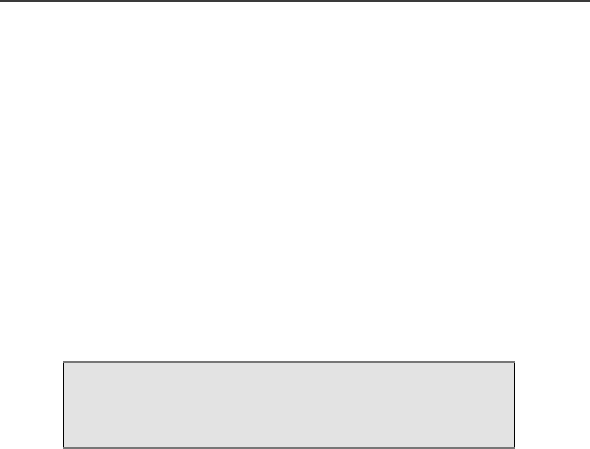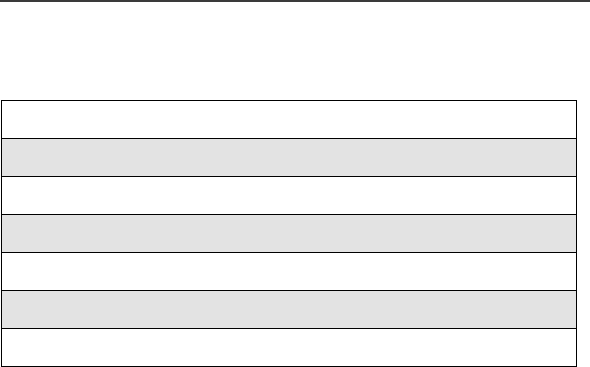Motorola Solutions 89FT5815 iDEN i88s, i85s, i58sr, i55 User Manual i88s
Motorola Solutions, Inc. iDEN i88s, i85s, i58sr, i55 i88s
Contents
MANUAL 2

Motorola
iDEN®
Digital Multi-Service Data-Capable Phone
i88sPhone User’s Guide
@NNTN4487A@
NNTN4487A

www.motorola.com/iden

i
Table of Contents
Introduction .......................................................................................... 1
Driving Safety Tips .........................................................................................3
Getting Started...................................................................................... 5
i88sPhone Features ........................................................................................6
Battery .............................................................................................................7
Turning Your i88sPhone On/Off ..................................................................9
Enabling Security ..........................................................................................11
Receiving Over-the-Air Programming..........................................................11
Security Features of the i88sPhone..............................................................12
Status of Your i88sPhone.............................................................................24
My Information .............................................................................................24
Using T9 Text Input ......................................................................................25
Display Essentials ............................................................................... 31
Display Screen Elements...............................................................................31
Text Display Area .........................................................................................34
Call Information Icons...................................................................................34
Navigating Menus and Lists..........................................................................35
Main Menu Options.......................................................................................36
Phonebook ........................................................................................... 39
Accessing Phonebook with an i2000, i2000plus, or GSM Phone.................40
Phonebook Entries and Speed Dial Numbers................................................40
Phonebook Icons ...........................................................................................40
Voice Names .................................................................................................41
Accessing Your Phonebook ..........................................................................41
About Phonebook Entries..............................................................................42
Pause Digit Entry...........................................................................................51
Plus Dialing ...................................................................................................52

ii
www.motorola.com/iden
Digital Cellular.................................................................................... 53
Making Phone Calls ......................................................................................53
Emergency Calling........................................................................................59
Receiving a Phone Call .................................................................................59
Ending a Phone Call ......................................................................................59
Recent Calls...................................................................................................59
Missed Calls ..................................................................................................63
Call Timers....................................................................................................63
Hands-Free Speakerphone.............................................................................64
Mute...............................................................................................................64
Call Waiting ..................................................................................................65
Call Hold .......................................................................................................66
Three-Way Calling........................................................................................67
Call Forwarding.............................................................................................68
Messages .............................................................................................. 73
Message Center .............................................................................................73
Voice Mail.....................................................................................................74
Using Voice Mail ..........................................................................................75
Text and Numeric Messaging........................................................................76
Net Alert........................................................................................................78
Using Your Phone as a Modem.....................................................................79
Private Calls........................................................................................ 81
Private Call....................................................................................................81
Call Alerts......................................................................................................84
Group Call .....................................................................................................88
GPS Enabled .......................................................................................93
IMPORTANT: Things to Keep in Mind .......................................................94
Making an Emergency Call...........................................................................95
Accessing the GPS Menu ..............................................................................96
Viewing Your Approximate Location...........................................................96
Enhancing GPS Performance ........................................................................98

iii
Updating Satellite Almanac Data ..................................................................99
Setting Privacy Options.................................................................................99
Using GPS with Map Software ...................................................................101
Datebook............................................................................................ 105
Datebook Icons............................................................................................106
Viewing Your Datebook .............................................................................106
About Datebook Events...............................................................................108
Adding New Events.....................................................................................109
Editing Events .............................................................................................113
Deleting Events ...........................................................................................113
Datebook Event Reminders.........................................................................114
Customizing Datebook Set Up....................................................................114
Memo ................................................................................................. 117
Creating a Memo .........................................................................................117
Viewing the Memo......................................................................................117
Editing the Memo........................................................................................118
Deleting the Memo......................................................................................118
Making a Call to the Memo Number...........................................................118
Storing the Memo Number to Phonebook...................................................119
Voice Record ..................................................................................... 121
About Voice Record....................................................................................121
Accessing Voice Record .............................................................................121
Recording a Voice Record ..........................................................................122
Playing a Voice Record...............................................................................122
Adding to a Voice Record...........................................................................123
Labeling a Voice Record.............................................................................123
Deleting a Voice Record .............................................................................124
Locking/Unlocking a Voice Record............................................................124
Voice Record Memory ................................................................................125
Java .................................................................................................... 127
Installing Java Applications ........................................................................128

iv
www.motorola.com/iden
Running Java Applications..........................................................................128
Downloading Java Applications..................................................................129
Java Applications and GPS Enabled ...........................................................129
Java Memory ...............................................................................................131
Deinstalling Java Applications....................................................................132
Customizing the i88s Phone............................................................. 133
Settings........................................................................................................133
Styles ...........................................................................................................150
Shortcuts......................................................................................................155
Accessories......................................................................................... 159
Wearable Carrying Solutions ......................................................................159
Batteries.......................................................................................................161
Travel Chargers ...........................................................................................162
Data Accessories .........................................................................................164
Other Important Information ......................................................... 169
Understanding Status Messages ..................................................................169
Safety and General Information ..................................................... 172
RF Operational Characteristics ...................................................................172
Portable Radio Product Operation and EME Exposure ..............................172
Electro Magnetic Interference/Compatibility..............................................175
Medical Devices..........................................................................................175
Operational Warnings..................................................................................177
Operational Cautions...................................................................................178
Accessory Safety Information .....................................................................180
The U.S. Food and Drug Administration's Center for Devices
and Radiological Health Consumer Update on Mobile Phones..................182
Limited Warranty Motorola Communication Products...............................188
Limited Warranty Motorola Communication Products (International) ......192
Patent and Trademark Information..............................................................196
Index .................................................................................................. 198

vi
www.motorola.com/iden
DECLARATION OF CONFORMITY
Per FCC CFR 47 Part 2 Section 2.1077(a)
Responsible Party Name: Motorola, Inc.
Address: 8000 West Sunrise Boulevard, Plantation, FL 33328 USA
Phone Number: 1 (800) 453-0920
Hereby declares that the product:
Product Name: i88s
Model Number: H58XAH6RR7AN
Conforms to the following regulations:
FCC Part 15, subpart B, section 15.107(a), 15.107(d) and section 15.109(a)
Class B Digital Device
Date: July 1, 2002
Note: This equipment has been tested and found to comply with the limits for a Class B digital
device, pursuant to part 15 of the FCC Rules. These limits are designed to provide reasonable
protection against harmful interference in a residential installation. This equipment generates,
uses and can radiate radio frequency energy and, if not installed and used in accordance with the
instructions, may cause harmful interference to radio communications. However, there is no
guarantee that interference will not occur in a particular installation.
If this equipment does cause harmful interference to radio or television reception, which can be
determined by turning the equipment off and on, the user is encouraged to try to correct the
interference by one or more of the following measures:
--Reorient or relocate the receiving antenna.
--Increase the separation between the equipment and receiver.
--Connect the equipment into an outlet on a circuit different from that to which the receiver is
connected.
--Consult the dealer or an experienced radio/TV technician for help.

1
Introduction
ongratulations on purchasing your Motorola iDEN i88s
multi-service, data-capable, digital, portable phone. Your i88s
phone offers:
•Voice Activated Dialing — Your i88sphone offers state-of-the-art Voice
Activated Dialing.
•Speakerphone — You can enjoy hands-free communication at the touch
of a button. And Speakerphone is especially great for conference calls.
•Phonebook — Your consolidated Phonebook holds up to 250 entries and
allows you to store multiple contact numbers for each person, offering you
various ways to communicate with your business and personal contacts.
•SIM Card — Your phone’s SIM (Subscriber Identity Module) card holds
all entries stored in your Phonebook. In addition, you have a PIN (Personal
Identification Number) to keep your information safe and secure.
•Datebook — Schedule and keep track of appointments using your phone’s
Datebook feature.
•Messages — The Message Center allows you to manage and access your
Voice Mail, Text Messages, and Net Alert all from the same inbox.
•Private and Group Calls — You can use your phone as a two-way radio
to communicate directly with business and personal contacts in your iDEN
service area.
•Voice Record — Voice Record enables you to record and play back
personal messages or the incoming portion of phone calls on your i88s
phone.
•GPS Enabled — Use your phone’s GPS Enabled feature to determine your
approximate geographical location, expressed as latitude and longitude.
When you make an emergency call, this feature can help emergency
service personnel find you under certain circumstances. This feature
depends on access to GPS satellite signals and, for emergency calls, the
capabilities of your local emergency response center. See GPS Enabled,
particularly “IMPORTANT: Things to Keep in Mind” on page 94, for
more information on the limitations of this feature.
•Fax and Data Transfer*— for circuit data faxes and file transfers. See
“Using Your Phone as a Modem” on page 78.
•J2METM —With the JavaTM applications feature, you can choose from the
many Java programs. Either download Java applications directly from the
Internet, or try one of the pre-loaded applications.
C

2
www.motorola.com/iden
•Customization — Use the Settings, Styles, and Shortcuts features to
customize your i88sphone to meet your individual needs.
For more information on these and other features of the i88s phone, review this
User’s Guide. There is a Table of Contents in the front of the guide and an Index
in the back of the guide to assist you in finding the specific information you
want.
NOTE: Some features of your i88sphone are available only in the iDEN
service area, and are indicated as such in this guide.
NOTE: This guide describes the features of the i88sphone as they
were set up by Motorola. However, your carrier or your
organization may have changed or added features. For more
information, check with your carrier or your organization.

3
Driving Safety Tips
Driving Safety Tips
“Safety is your most important call!”
Your Motorola wireless telephone gives you the powerful ability to
communicate by voice — almost anywhere, anytime, wherever wireless phone
service is available and safe conditions allow. But an important responsibility
accompanies that benefits of wireless phones, one that every user must uphold.
When driving a car, driving is your first responsibility. If you find it necessary to
use your wireless phone while behind the wheel of a car, practice good common
sense and remember the following tips:
1. Get to know your Motorola wireless phone and its features such as speed
dial and redial. If available, these features help you to place your call with-
out taking your attention off the road.
2. When available, use a hands-free device. If possible, add an additional
layer of convenience to your wireless phone with one of the many Motor-
ola Original hands-free accessories available today.
3. Position your wireless phone within easy reach. Be able to access your
wireless phone without removing your eyes from the road. If you receive
an incoming call at an inconvenient time, if possible, let your voice mail
answer it for you.
4. Let the person you are speaking with know you are driving; if necessary,
suspend the call in heavy traffic or hazardous weather conditions. Rain,
sleet, snow, ice, and even heavy traffic can be hazardous.
5. If you receive an incoming call at an inconvenient time do not take notes or
look up phone numbers while driving. Jotting down a “to do” list or going
through your address book takes attention away from your primary respon-
sibility — driving safely.
6. Dial sensibly and assess the traffic; if possible, place calls when you are not
moving or before pulling into traffic. Try to plan calls when your car will
be stationary. If you need to make a call while moving, dial only a few
numbers, check the road and your mirrors, then continue.
7. Do not engage in stressful or emotional conversations that may be distract-
ing. Make people you are talking with aware you are driving and suspend
conversations which have the potential to divert your attention away from
the road.

4
www.motorola.com/iden
8. Your phone can perform many other functions besides allowing you to
make and receive calls. Do not let these features distract you from driving.
Use them only when it is safe to do so.
9. Use your wireless phone to call for help. Dial 9-1-1 or other local emer-
gency number in the case of fire, traffic accident or medical emergencies.1
10. Use your wireless phone to help others in emergencies. If you see an auto
accident, crime in progress or other serious emergency where lives are in
danger, call 9-1-1 or other local emergency number, as you would want
others to do for you.
11. Call roadside assistance or a special non-emergency wireless assistance
number when necessary. If you see a broken-down vehicle posing no seri-
oushazard,abrokentrafficsignal,aminortrafficaccidentwherenoone
appears injured, or a vehicle you know to be stolen, call roadside assistance
or other special non-emergency wireless number.1
1. Wherever wireless phone service is available.
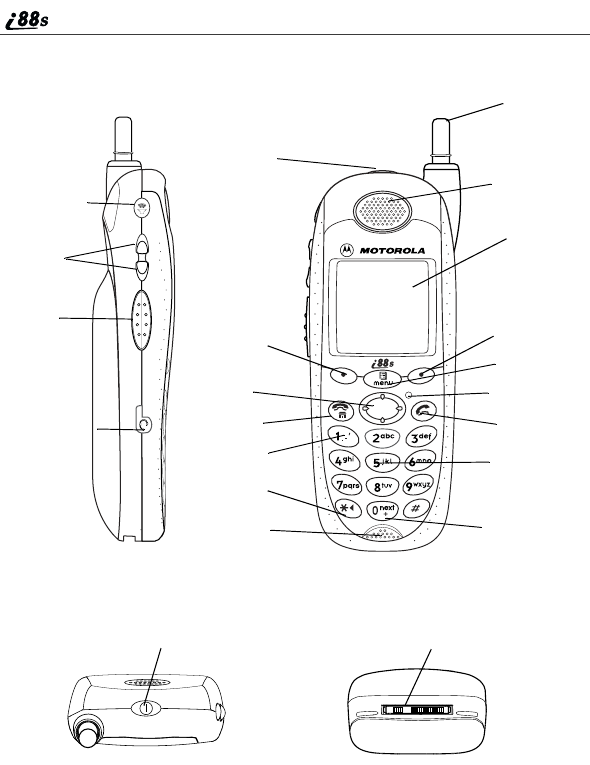
6
www.motorola.com/iden
i88sPhone Features
BOTTOM VIEW
TOP VIEW
Earpiece
Status Light
Send Key
Menu Key
Photosensor
Alpha Numeric
Keypad
Option Key
Next Word/
International
Plus Dialing Key
Accessory and Data
Cable Connector
FRONT VIEW
SIDE VIEW
Push-To-Talk
(PTT) Button
Volume
Control
Buttons
Speaker Key
Headset Jack
Microphone
Option Key
4-Way
Navigation
Key
Punctuation
Key
Back/Pause
Dialing Key
End/Home
Key
Power Button
Display
Power Button
Status Light
Antenna
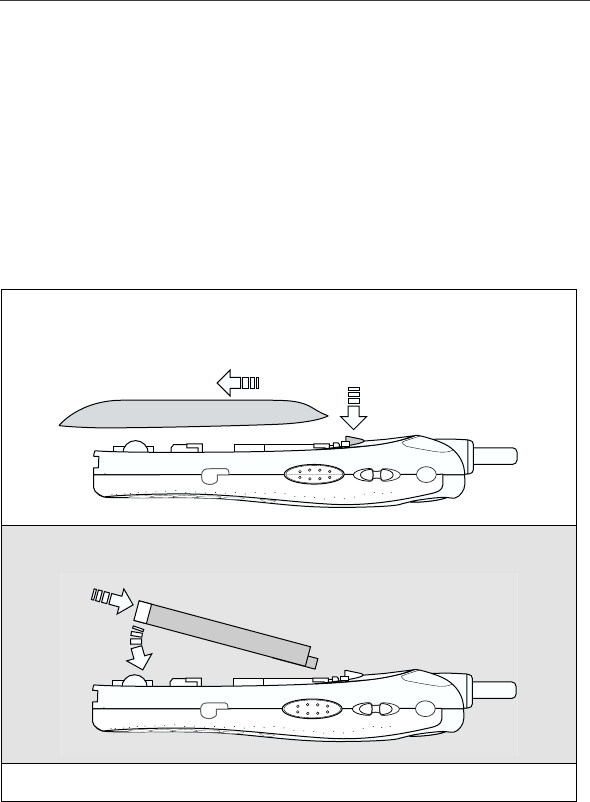
7
Battery
Battery
Your i88sphone comes with a Lithium Ion battery. After attaching the battery,
you must charge it before you use it for the first time. See “Charging Lithium
Ion Batteries” on page 161 for the charging times for your phone’s battery. The
first time you charge your phone’s battery, charge for 30 minutes more than the
time shown on page 161. After the initial charging, the battery can be charged in
thetimeshownonpage161.
Remove the battery from the protective plastic safety tray provided in the
original packaging. When the battery is not attached to the phone store it in the
original tray.
Attaching the Battery
1
Remove the battery cover located on the back of the phone by pressing
the battery cover release button and sliding the battery cover away from
the antenna.
2
Insert the top of the battery into the battery area. Press down on the
bottom of the battery to secure it.
3
Replace the battery cover and push forward until you hear a click.
Release Button
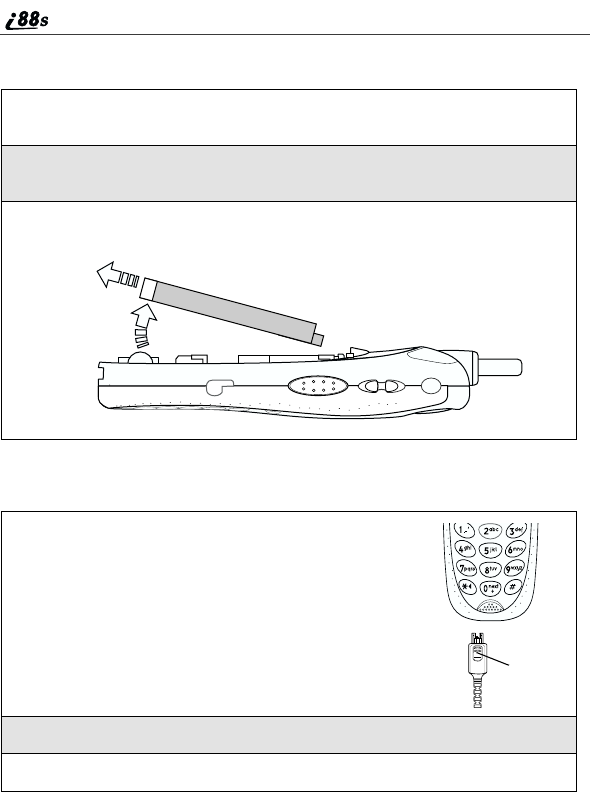
8
www.motorola.com/iden
Detaching the Battery
Charging the Battery
Your phone’s screen backlight will remain lit while the battery is charging.
1
Ensure that the phone is powered off before attempting to detach the
battery.
2
Press the battery cover release button and slide the battery cover away
from the antenna.
3
Remove the battery by pushing the battery toward the antenna and
lifting it out of the phone.
1
With your phone’s keypad facing up, plug the
charger’s accessory connector into the left side of
the accessory connector on the bottom of the phone.
NOTE:Press the button of the charger’s
accessory connector before inserting the
connector into the bottom of the phone.
2
If the charger has folding electrical prongs, flip open the prongs.
3
Plug the charger into an electrical outlet.
button
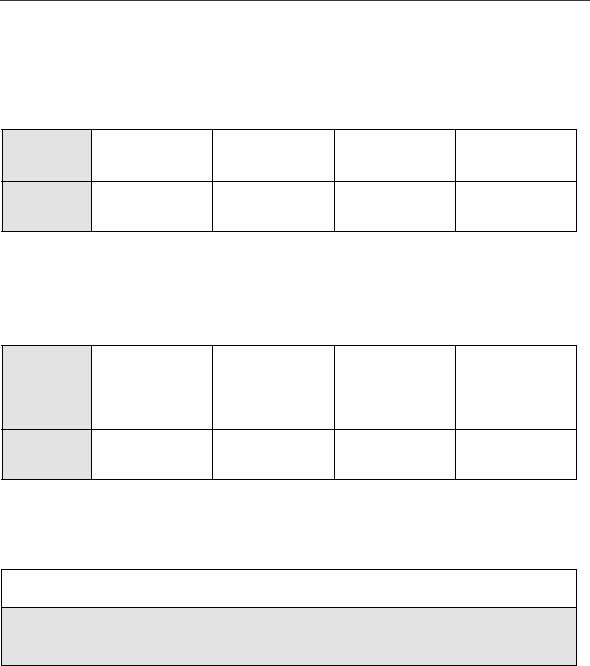
9
Turning Your i88s Phone On/Off
Battery Charging Status
The battery strength indicator icon found on your phone’s display screen shows
thechargeamountremaininginthebattery.
When Using Phone
A short, chirp-like sound indicates a low battery. The icon flashes to indicate
that you have approximately five minutes of talk time remaining.
When Charging Battery
Turning Your i88sPhone On/Off
To power the phone on:
Icon
Display abcd
Battery
Strength Low
Battery 11% to
40% 41% to
70% Fully
Charged
Icon
Display efgd
1flashingbar 1flashingbar,
1 continuous bar 1 flashing bar,
2 continuous bars 3 continuous bars
Battery
Strength Low
Battery 31% to
60% 61% to
90% Fully
Charged
1
For optimal cellular signal strength, extend the antenna.
2
Press and hold pat the top of the phone until the status light glows red
and a tone briefly sounds.
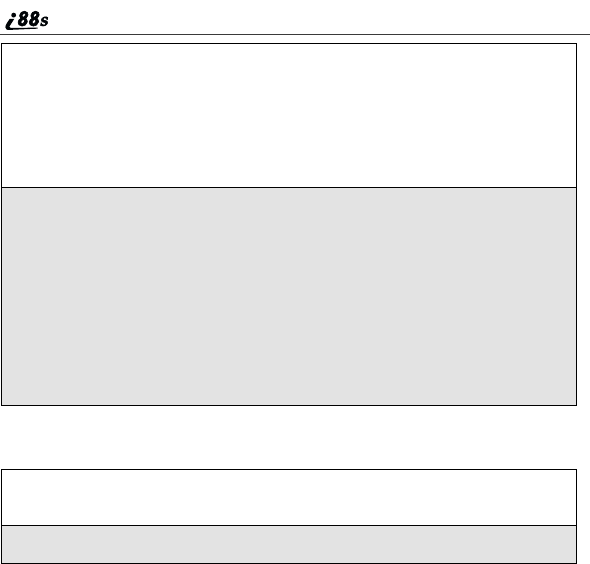
10
www.motorola.com/iden
To power the phone off:
3
When the Enter SIM PIN Code screen displays, enter your SIM PIN.
(For more information see “SIM Card Personal Identification Number
(PIN)” on page 12.)
NOTE: The default SIM card PIN is 0000. It is recommended that you
change your PIN to prevent fraudulent use of the SIM card
(see “Changing the SIM PIN” on page 14).
4
Press Bunder OK.
As your phone connects to the network,
youwillseeawelcomemessageanda
connecting message. When the Ready
screen appears on the display, you are
readytouseyouri88sphone!
1
Press and hold pon the top of the phone until you see the message
Powering Off.
2
Push down the antenna.
A
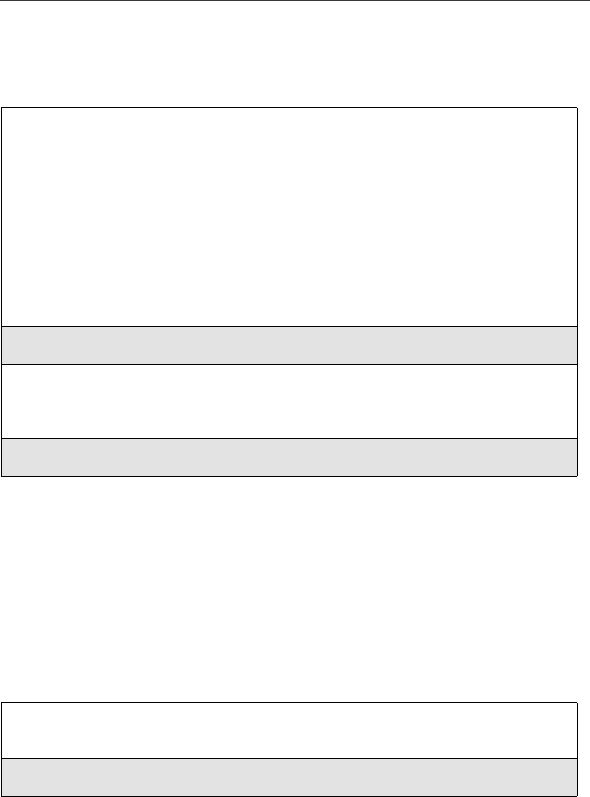
11
Enabling Security
Enabling Security
To utilize browser functionality from your service provider, you must enable
security the first time you power on your phone or within 20 days of first
activation of your phone.
Receiving Over-the-Air Programming
If you have been set up to receive Over-the-Air Programming by your service
provider, you will receive your Private ID and Talkgroup lists for Private Call
use, and your Personal Telephone Number via a Net Alert message.
In order to receive your programming, you must have enabled security. Within
24 hours of enabling security, you will receive a Net Alert message containing
your lists.
To accept your phone programming:
1
When you power on your phone for the
first time, after the Ready screen appears,
you will be prompted to select OK to
update your browser info.
NOTE: If you press Aunder LATER,
youwillbepromptedtoenable
security each time you power on
your phone until you press A
under OK. It is recommended
that you do not choose LATER.
2
Press Aunder OK.
3
You are prompted to enable security. Press Aunder YES.
A series of screens display. If you subscribe to your service provider
plan, your home page displays.
4
Press eto return to the Ready screen.
1
You will receive a Net Alert with the message New Browser Message –
Receive Programming Info.
2
Press Aunder GOTO.
a
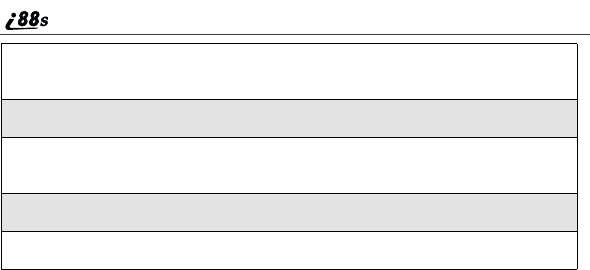
12
www.motorola.com/iden
Security Features of the i88sPhone
The i88sphone comes with two levels of security protection:
•SIM Card
•Keypad Lock
Your phone comes with a built-in level of security protection through the use of
the SIM card. The SIM card stores all your Phonebook information. Since this
information is stored on the SIM card, not in your phone itself, you can remove
the information by removing the SIM card.
The SIM card is located in the SIM Card Holder on the back of the phone,
underneath the battery. You can verify that the SIM card is in place by removing
the battery and viewing the SIM card through the SIM card cover.
See “Inserting/Removing the SIM Card”on page 18 for information on locating
the SIM card. If there is no SIM card in your phone, notify your sales
representative.
NOTE: Except for making emergency calls, your phone will not
function without the SIM card.
SIM Card Personal Identification Number (PIN)
To prevent unauthorized use of your phone, your SIM card is protected by a
PIN. Each time the phone is powered on, you must enter your PIN. You can
change or disable your PIN if desired.
NOTE: Disabling your PIN enables anyone to use your phone. If you
disable your PIN, you must still keep the SIM card in the phone
to make calls.
3
You are prompted to accept changes to your Phonebook. Press A
under OK.
4
A confirmation screen displays. Press Aunder OK.
5
You are prompted again to accept changes to your Phonebook. Press
Aunder OK.
6
A confirmation screen displays. Press Aunder OK.
7
Press eto return to the Ready screen.
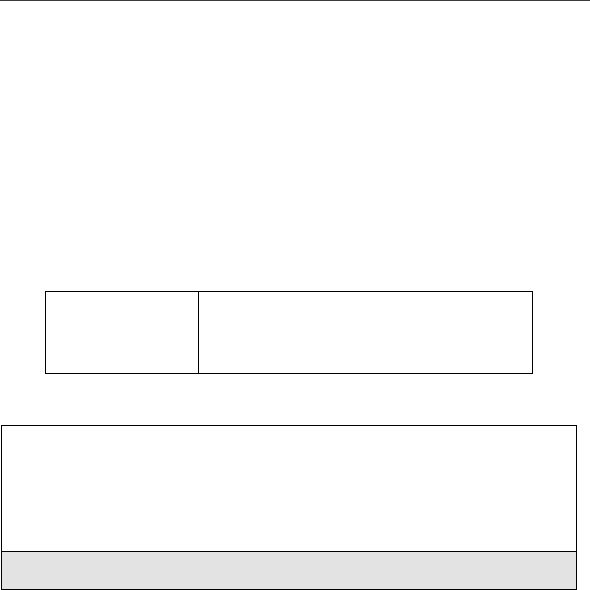
13
Security Features of the i88s Phone
Entering the SIM PIN
Depending on your service provider, your phone
may or may not require you to enter a SIM PIN
when you first use your phone.
If your phone is required to enter a PIN, your
default SIM card PIN is 0000. It is recommended
that you change your PIN to prevent fraudulent
use of the SIM card (see “Changing the SIM
PIN”on page 14).
If you enter an incorrect PIN, the message SIM PIN incorrect: Try again
appears on your phone’s screen. After three consecutive incorrect attempts, the
SIM card is blocked. The phone does not allow you to attempt to enter your PIN
again, even after powering the phone off and back on. If this happens, see
“Unblocking the SIM PIN”on page 15.
IMPORTANT: Incorrectly entering your PIN three times
causes the SIM card to be blocked. To
unblock your SIM card, you must contact
your service provider. For more information,
see “Unblocking the SIM PIN”on page 15
1
From the Enter SIM PIN screen, enter your four- to eight-digit PIN.
An asterisk appears for each character entered.
NOTE: Other than emergency dialing, you will be unable to use any
of the phone functions, including receiving phone calls, until
you enter the PIN.
2
Press Bunder OK.
P
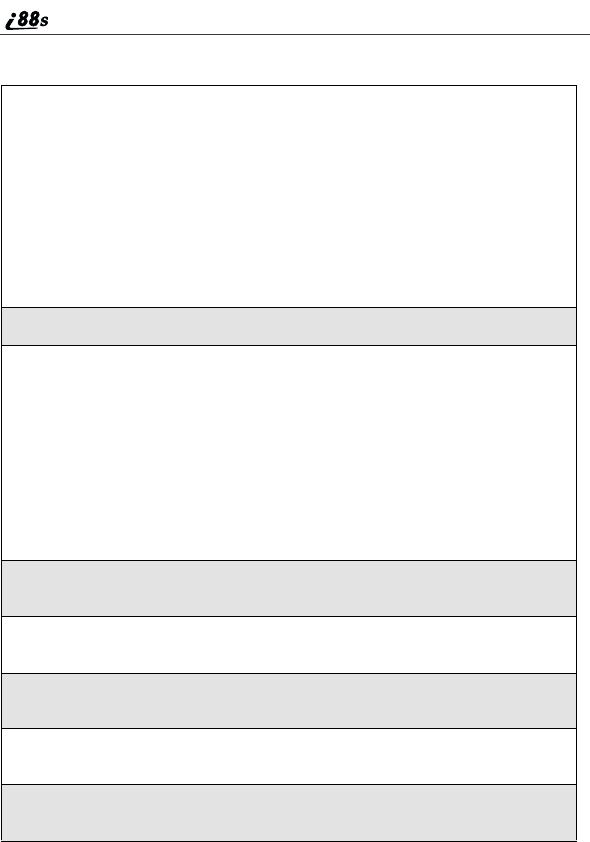
14
www.motorola.com/iden
Changing the SIM PIN
1
At the Ready screen, press mand then
press Rto scroll to Settings.
2
Press Bunder SELECT. The Settings screen displays.
3
Press Rto scroll to Security.PressB
under SELECT to access the Security
screen.
4
At the Security screen, press Rto scroll to New Passwords.PressB
under SELECT to access the New Passwords screen.
5
At the New Passwords screen, press Rto scroll to SIM PIN and press
Bunder SELECT.
6
At the Enter Old SIM PIN Code screen, enter the current SIM PIN
and press Bunder OK.
7
At the Enter New SIM PIN Code screen, enter the new 4- to 8-digit
SIM PIN and press Bunder OK.
8
At the Re-enter New SIM PIN Code screen, re-enter the new SIM PIN
to confirm, and press Bunder OK.
B
C
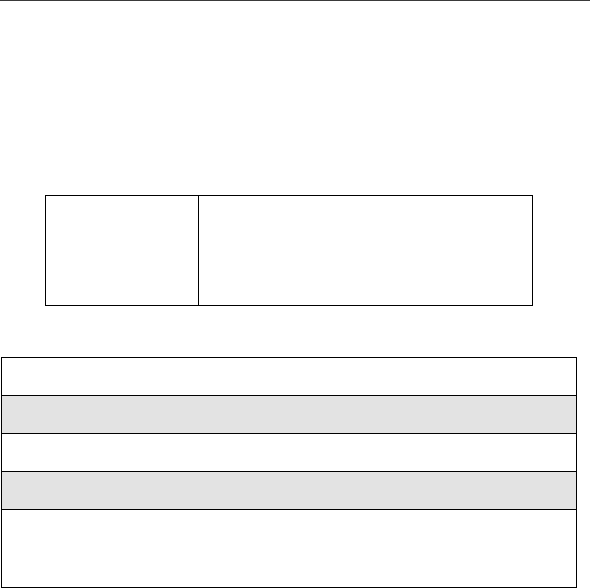
15
Security Features of the i88s Phone
Unblocking the SIM PIN
If you forget your PIN and unsuccessfully enter it three times, access to your
phone will be blocked.
NOTE: Before you begin, obtain the PIN Unblocking Key (PUK) code
from your service provider, then read and understand the PIN
unblocking sequence. In entering the key press sequence, each
key press must occur within 5 seconds of the prior key press.
To unblock the PIN:
IMPORTANT: If you unsuccessfully enter the PUK code
ten times, the SIM card is permanently
blocked and must be replaced. If this
happens, all data will be lost. You will get a
message to contact your service provider. If
the SIM card is blocked, the i88s phone only
allows outgoing emergency calls.
1
Press **05s.
2
Enter the PUK code.
3
Press s.
4
Enter a new 4- to 8-digit SIM PIN and press s.
5
Re-enter your SIM PIN and press s.
If you entered the codes properly, the SIM Unlocked screen displays.

16
www.motorola.com/iden
Disabling/Enabling the PIN Requirement
When the PIN requirement is enabled, you are
prompted to enter your PIN each time you turn
on your phone. Until a valid PIN is entered, you
can use the phone only to make emergency calls.
After the PIN is accepted, the phone registers on
the network and the Ready screen displays.
When the PIN requirement is disabled, the phone
can be used without entering a PIN.
NOTE: If you disable the PIN requirement,
you remove protection of personal
data on your SIM card. Anyone
can then use your phone and
access your personal data.
1
At the Ready screen, press mand then
press Rto scroll to Settings.
2
Press Bunder SELECT. The Settings screen displays.
P
B
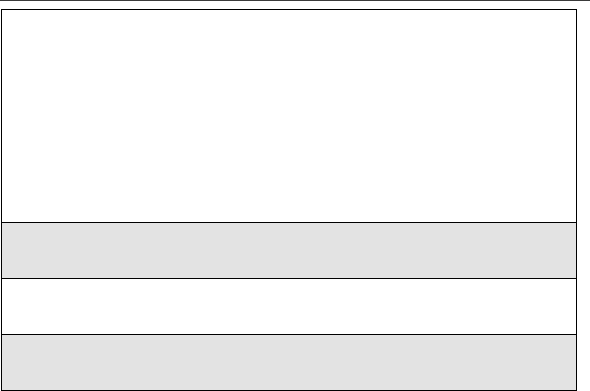
17
Security Features of the i88s Phone
3
Press Rto scroll to Security.PressB
under SELECT to access the Security
screen.
4
At the Security screen, press Rto scroll to SIM PIN.PressBunder
SELECT to access the SIM PIN screen.
5
Press Rto scroll to On or Off.On enables the SIM PIN requirement;
Off disables the SIM PIN requirement. Press Bunder SELECT.
6
At the Verify SIM PIN Code screen, enter the current SIM PIN and
press Bunder OK.
C
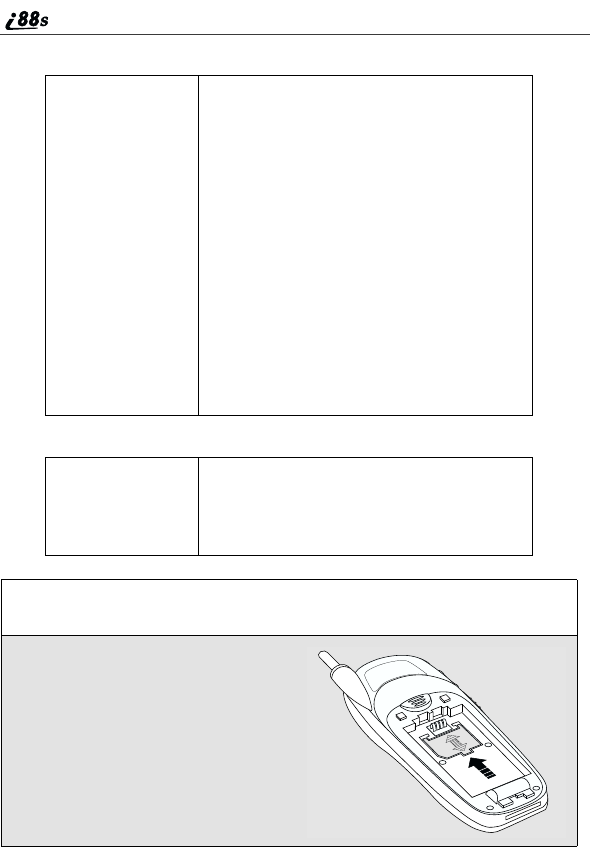
18
www.motorola.com/iden
Inserting/Removing the SIM Card
IMPORTANT: If you remove your SIM card and insert
another SIM card into your phone, the
following information is erased when you
use the phone with the new SIM card:
•Datebook events
•Recent Calls list
•Voice Record
•Voice names for Phonebook entries and
Shortcuts
•Call Forwarding settings
•Call filtering settings in Styles
•Net Alerts
•InformationstoredinMemo
•Browser Bookmarks
•Previous three GPS Enabled location
fixes
All Phonebook information will remain
stored on your original SIM card.
IMPORTANT: Do not touch the gold-colored areas of the
SIM card.
To avoid loss or damage, do not remove
your SIM card from your phone unless
absolutely necessary.
1
With the phone powered off, remove the battery cover and battery. See
“Detaching the Battery”on page 8.
2
With the antenna facing away
from you, and the back of the
phone exposed and facing up,
locate the SIM cover and gently
push it forward.
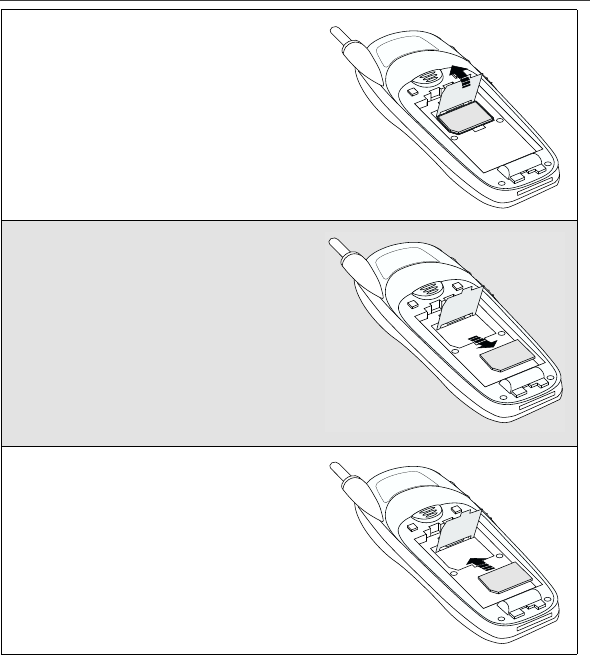
19
Security Features of the i88s Phone
3
Lift the SIM cover up.
4
To remove the SIM card, very
carefully lift it out of its holder. Do
not touch the gold-colored areas of
the SIM card.
NOTE: Protect the SIM card as you
would any delicate object.
When the SIM card is not in
the phone, you should
store it in something
protective, such as a
mailing envelope.
5
To insert the SIM card, very
carefully place it in its holder with
the gold contact side facing down
and the cut corner on the card
properly aligned with the cut corner
of the holder.
Close the SIM card cover and slide
it down until you hear a click.
000800137866150
000800137866150
000800137866150
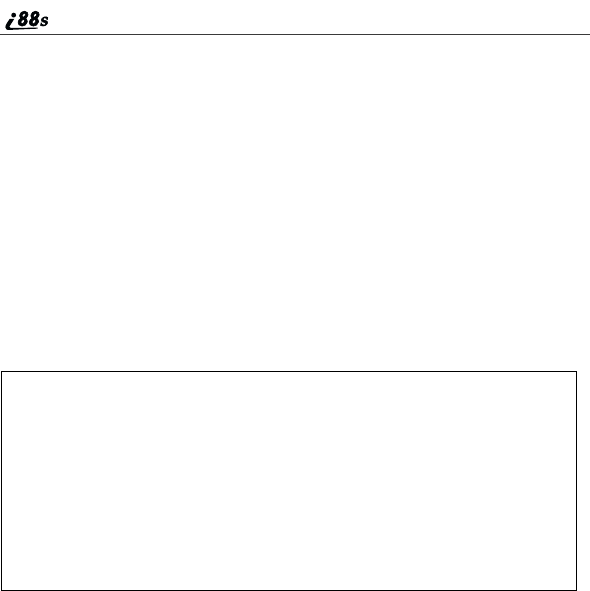
20
www.motorola.com/iden
Keypad Lock
The i88sphone includes a Keypad Lock feature that enables you to quickly lock
the phone’s keypad to avoid inadvertently pressing keys or placing calls. Once
Keypad Lock is activated, you can only perform the following tasks:
•Turn your phone on and off
•Unlock the keypad
•Receive incoming calls, messages, and alerts.
NOTE: Emergency calls cannot be placed while Keypad Lock is
activated.
Before locking your phone’s keypad, you may want to read this entire section to
learnhowtorespondtoincomingcalls,messages,andalerts.
Activating Keypad Lock
Whenever a key is pressed while in Keypad Lock mode, the unlock instructions
display briefly.
You can also set your phone’s keypad to lock automatically after a specified
period of time. See “SettingKeypadLock”on page 139.
From the Ready screen, press mthen
*.ThemessageKeypad Locked
displays on your phone. D
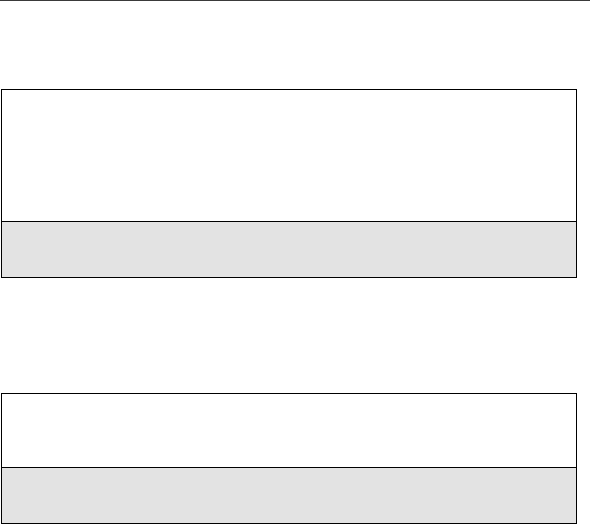
21
Security Features of the i88s Phone
Receiving Incoming Calls
When you receive an incoming phone call (see “Receiving a Phone Call”on
page 59), Keypad Lock is temporarily disabled.
Receiving Private Calls
When you receive an incoming Private call, Talkgroup call, or call alert (see
“Private Call”on page 81), Keypad Lock is temporarily disabled.
1
Press Bunder YES or press sto answer the call.
Or,
Press Aunder NO or press eto send the call to Voice Mail and
reactivate Keypad Lock.
2
When you end the call, the Recent Calls list appears. Press eto
reactivate Keypad Lock and return to the Ready screen.
1
Press and hold the Push-To-Talk (PTT) button on the side of the phone.
Begin talking after the phone emits a chirping sound. Release the PTT
button to listen.
2
When you end the call, the Recent Calls list appears. Press eto
reactivate Keypad Lock and return to the Ready screen.
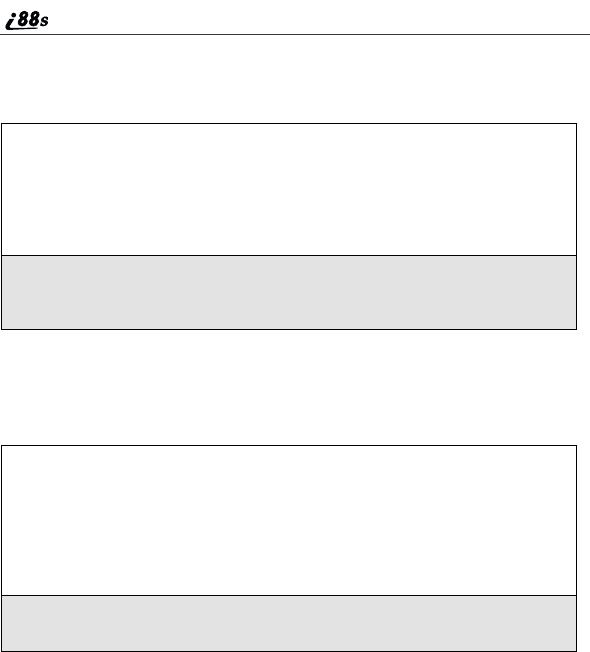
22
www.motorola.com/iden
Receiving New Voice Mail
When you receive new Voice Mail (see “Voice Mail”on page 74), Keypad
Lock is temporarily disabled.
Receiving New Text Messages
When you receive new Text Messages (see “Text and Numeric Messaging”on
page 76), Keypad Lock is temporarily disabled.
1
When New Voice Mail Message displays, press Aunder EXIT to
return to the Ready screen and reactivate Keypad Lock.
Or,
Press Bunder CALL to access Voice Mail.
2
Once you have finished, press eto exit Voice Mail. The Recent Calls
list displays. Press eor press Bunder EXIT to reactivate Keypad
LockandreturntotheReady screen.
1
When New Text Message displays, press Aunder EXIT to return to
the Ready screen and reactivate Keypad Lock.
Or,
Press Bunder READ to read the message. Press Bunder SAVE or
DELETE.
2
Once you have finished, press Aunder EXIT to reactivate Keypad
Lock return to the Ready screen.
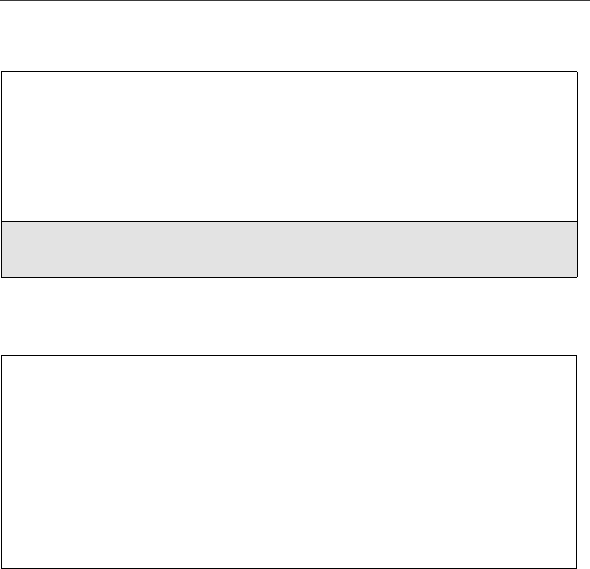
23
Security Features of the i88s Phone
Receiving New Net Alerts
When you receive a new Net Alert, Keypad Lock is temporarily disabled.
Deactivating Keypad Lock
1
When New Browser Message displays, press Aunder EXIT to return
to the Ready screen and reactivate Keypad Lock.
Or,
Press Bunder GOTO. Press Aunder View. Press Aunder OK or
Reply.
2
Once you have finished, press euntil you reactivate Keypad Lock
return to the Ready screen.
From the Ready screen, press mthen
*.ThemessageKeypad Unlocked
displays briefly. E
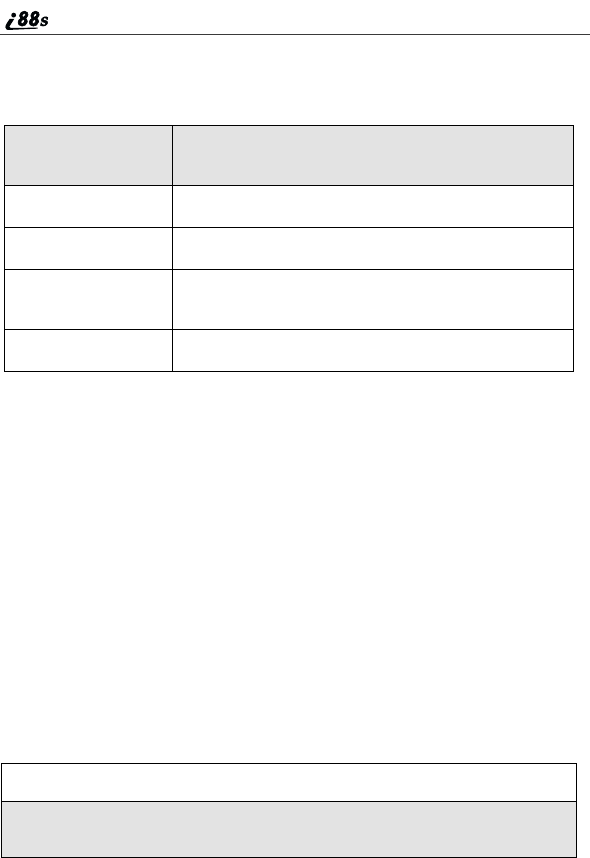
24
www.motorola.com/iden
Status of Your i88sPhone
Your i88sphone has a status light that displays around the power button. The
status light indicates the status of your connection.
My Information
You can select My Info from the main menu to display or edit the following:
•Name —Enter your name in this field.
•Private ID —Your Private ID is displayed in this field. Your Private ID is
the number that others use to contact you using Private calls.
•Phone Numbers of Lines 1 and 2 —Your phone’s numbers are displayed
in these fields. You can edit the phone numbers displayed on the My
Information screen, but this does not change your phone numbers.
•Carrier IP —This field displays your phone’s carrier assigned IP address.
•IP Addresses —These fields display the IP addresses you use to access the
Internet with your phone.
•Circuit Data Number (Ckt) —Your circuit data number is in this field.
Viewing/Editing My Information
Status Light
Indicator i88sPhone Status
Flashing Red Signing on to the network. Please wait.
Solid Red No service or out of coverage area.
Flashing
Green Inservice/Readytouse.
Solid Green In use.
1
From the Ready screen, press m.
2
Press Rto scroll to My Info.PressBunder SELECT. The My
Information screen displays.
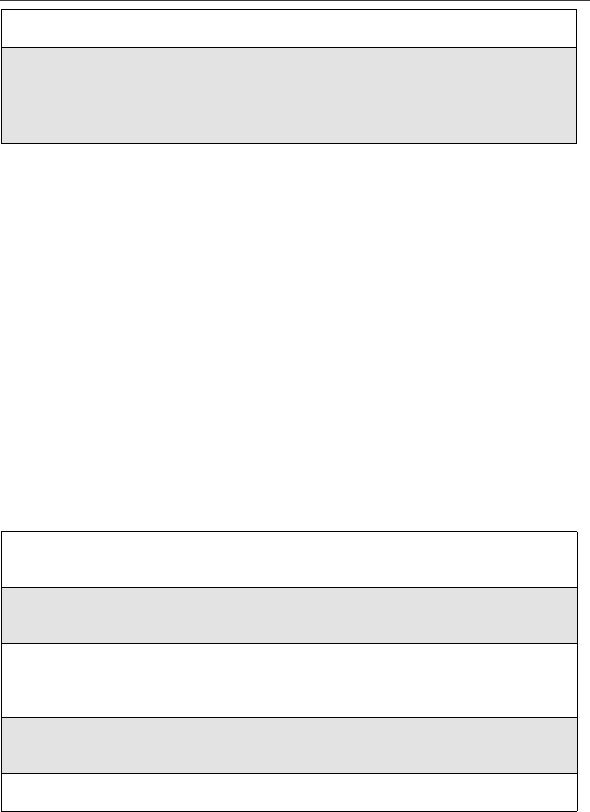
25
Using T9 Text Input
Using T9 Text Input
Your i88sphone has embedded software, called T9®Text Input, that makes
typing on a phone keypad much like typing on a computer keyboard: it
eliminates the traditional “multi-tap”method of text entry. As you type, you
press only one key per letter. T9 Text Input matches your keystrokes to words in
its linguistic database of approximately 60,000 words and proper names. You
may also store additional words you frequently use in your own user database,
which is incorporated into the T9 database.
T9 Text Input is available when you are typing information into your
Phonebook and Datebook.
T9 Text Input Entry Modes
Four text entry modes are available in T9 Text Input: Alpha, Word, Symbols,
and Numeric. When you are using T9 Text Input, an icon in the top right corner
of your phone’s display screen (next to the battery strength indicator icon)
indicates the T9 Text Input entry mode you are using:
3
Use Sto scroll through the fields.
4
To edit the displayed information, press Bunder CHANGE. Edit
information as desired, and press Bunder OK to save the changes.
To return to the Ready screen, press Aunder EXIT.
Icon T9 Entry Mode
Name Used For...
wAlpha Standard “multi-tap”keypad
text entry.
#Word Entering words and
punctuation with one
key-press per character.
!Symbols Entering punctuation and
symbols such as “@”or “?”.
,Numeric Entering keypad numbers.
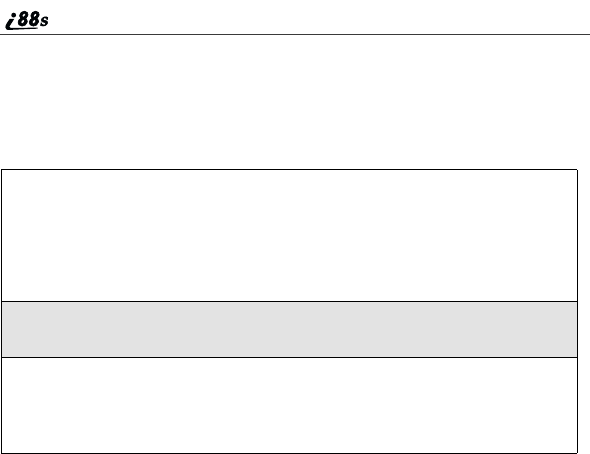
26
www.motorola.com/iden
Choosing a Text Entry Mode
You select your text entry mode from a menu available whenever the phone is
displaying a screen that requires you to enter text (for example, the Name:
screen or Title: screen).
To choose a text entry mode:
Using Alpha Mode
To enter text while in Alpha text entry mode to enter letters, numbers, and
symbols:
•Press any button on the alphanumeric keypad to enter the letters, numbers,
and symbols on that key. For example, to enter the letter Y, press 9three
times.
•TypealetterthenpressQto activate Caps Lock or type a letter then press
Rto deactivate Caps Lock.
•Pause briefly to leave the currently displayed character in place and move
on to the next place in the text entry field.
•Press Pto create a space in the text entry field.
•Press Aunder DELETE to delete one character. Press and hold Aunder
DELETE to delete an entire entry.
Using Word Mode
In Word mode, T9 Text Input analyzes the letters on the keypad button you
press and arranges them to create words. As you type, T9 Text Input matches
1
From any Phonebook or Datebook screen that requires text input, press
mto access the Entry Method menu.
A check mark appears next to the current text entry mode. When you
access a Phonebook or Datebook screen that requires text input, the
default text entry mode is Alpha.
2
Press Sto highlight the T9 Text Input text entry mode you want to
use.
3
Press Bunder SELECT.
The phone returns to the text entry screen. The text entry mode you
selected is now active.

27
Using T9 Text Input
your keystrokes to words in its database and will display the most commonly
used matching word.
Special Key Functions
Some of your phone’s keys assume different functions while in T9 Text Input
Word mode.
Backspace and Erase
Press Aunder DELETE once to backspace or to erase a single character. Press
and hold Aunder DELETE to erase the entire text entry field.
Space
Press Ronce to accept a word and insert a space when entering text.
Next Word in Database
Press 0to display more words in the database that match the keystroke
sequence you entered.
Shift and Caps Lock
Press #to make the next letter typed uppercase (Shift), to make all subsequent
letters types uppercase (Caps Lock), or to go back to lowercase letters.
These icons appear in the top row of your display screen:
•$for Shift to uppercase
•xfor Caps Lock
When neither of these icons appear, letters typed are lowercase.
NOTE: T9 Text Input automatically makes the first letter of a sentence
uppercase.
Punctuation
In Word mode, T9 Text Input uses Smart Punctuation to quickly apply basic
rules of grammar to insert the correct punctuation within a word and at the end
of a sentence.
Press 1to insert punctuation. One of eight basic punctuation symbols will be
inserted(.,-’@:?;).
Press 0to change the inserted punctuation symbol to another of the eight basic
punctuation symbols.
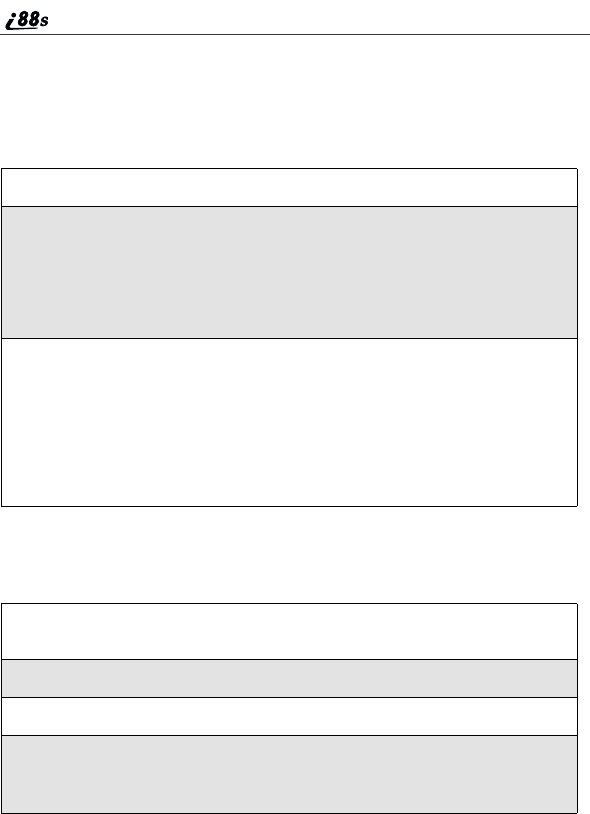
28
www.motorola.com/iden
Press Rto accept the punctuation and continue typing.
NOTE: Additional punctuation symbols are available in Symbols mode.
Enter a Word
To enter a word using Word mode:
Adding Words to the User Database
To add words to the T9 database:
NOTE: You cannot store alphanumeric combinations, such as Y2K.
1
Choose Word as your text entry mode.
2
Type a word by using one key-press per desired letter.
For example, to type “test”press 8378.
The displayed word may change as you type it. Do not try to correct the
word as you go. Type to the end of the word before editing.
3
If the word that appears is not the desired word, press 0to change the
word on the display to the next most likely word in the database.
Repeat until the desired word appears.
If the desired word does not appear, you can add it to the database of
words using the instructions in “Adding Words to the User Database”
on page 28.
1
Change from Word text entry mode to Alpha text entry mode. See
“Choosing a Text Entry Mode”on page 26.
2
Type the word using Alpha text entry mode.
3
Return to Word text entry mode.
4
Press Rto add a space.
The word you typed in Alpha text entry mode is now in the database.
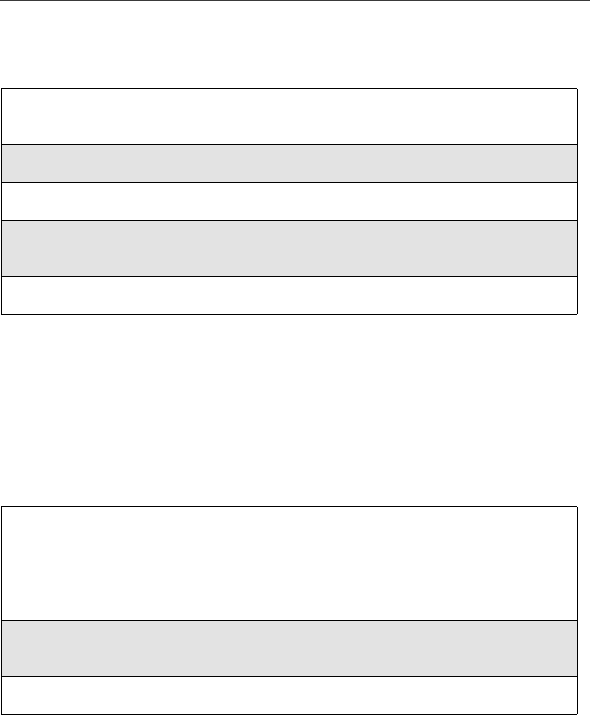
29
Using T9 Text Input
Choosing a Language
To change the language of the database T9 Text Input chooses common words
from:
Using Numeric Mode
To use Numeric text entry mode, choose Numeric as your text entry mode and
press the number buttons on your keypad to enter numbers.
Using Symbols Mode
To use Symbols text entry mode:
1
From any Phonebook or Datebook screen that requires text input, press
mto access the Entry Method menu.
2
Press Sto scroll to Languages.
3
Press Bunder SELECT.
4
Press Sto scroll to the language of the database you want T9 Text
Inputtextuse.
5
Press Bunder SELECT.
1
Choose Symbols as your text entry mode.
A row of 32 symbols appears along the bottom of your phone’sdisplay
screen, just above the display option and menu icon. (Press Tto view
the complete row.)
2
Press Tto highlight the symbol you want to enter into the text entry
field.
3
Press Bunder SELECT to enter the symbol.

30
www.motorola.com/iden
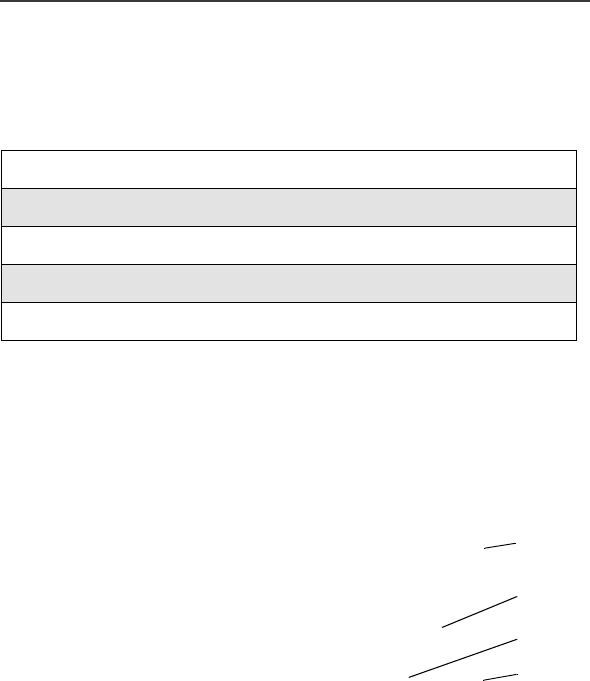
31
Display Essentials
Your i88sphone’s display screen tells you what you need to know as you use
your phone.
This section includes:
Display Screen Elements
Any time your phone is powered on, the display screen provides you with
information and options.
The Ready Screen
The Ready screen displays any time
the phone is powered on, but not
engaged in some activity.
The Ready screen consist of elements
commontomanyofthescreensyour
phone displays:
•status icons
•text display area
•menu icon
•display options
USER TIP: You can always access the Ready screen by pressing e.
Display Screen Elements Page 31
Text Display Area Page 34
Call Information Icons Page 34
Navigating Menus and Lists Page 35
Main Menu Options Page 36
AStatus
icon
rows
Text
display
area
Menu
icon
Display
options
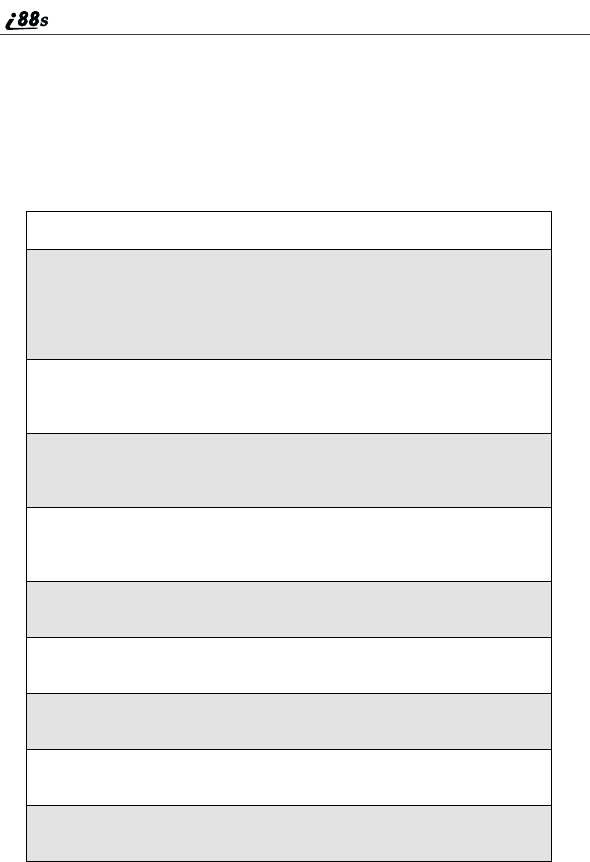
32
www.motorola.com/iden
Status Icons
Status icons provide you with information about your phone and its functions.
These icons are context sensitive; meaning, the icons that appear depend on the
task you are performing.
Status icons appear in the two rows at the top of the display screen. Some appear
at all times. Others appear only when your phone is engaged in certain activities
or when you have activated certain features.
Icon Indicates...
abcd
efgdBattery Strength icons —remaining
battery charge. More bars on the battery
indicate a greater charge. See the table on
page 9 for detailed information about the
meaning of each battery strength icon.
opqrs Signal Strength icons —strength of the
network signal. More bars next to the
antenna indicate a stronger signal.
01 Active Line icons —currently active
phone line; 0indicates Line 1 is active; 1
indicates Line 2 is active.
GHI
JKL Call Forward icons —phone is set to
forward calls. See “Call Forwarding”on
page 68 for more information.
cPhone In Use —phone is connected on an
active call.
hPrivate In Use —number being called is a
Private ID.
%Talkgroup In Use —phone is active on a
talkgroup call.
YPacket Data Ready —phone is ready to
receive data through a data cable.
ZPacket Data Activity —phone is
transmitting data.
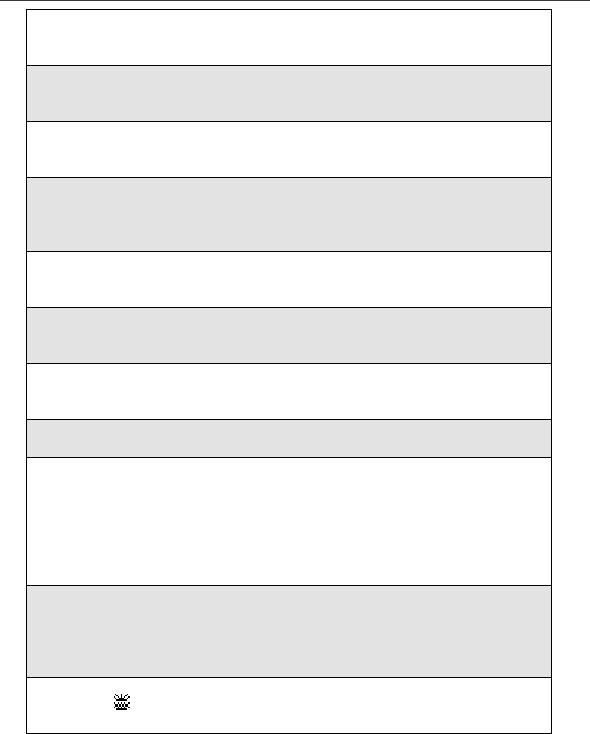
33
Display Screen Elements
The icon of the main menu feature currently in use always appears in the top left
of the status icon rows. For a list of the main menu icons, see “Main Menu
Options”on page 36.
]Mobile IP —phone is ready to access the
Internet.
{Secure Data —phone is accessing the
Internet using a secure connection.
}Non-secure Data —phone is accessing
the Internet using a non-secure connection.
lRoaming —phone is searching for
network connections outside your local
area.
.Text Message —you have one or more
Text Messages or Net Alert messages.
yVoice Mail —you have one or more Voice
Mail messages.
BFaxMail —you have one or more FaxMail
messages.
uSpeaker Off —phone’s speaker is off.
-[\* Ring/Vibe icons —you have customized
the way in which the phone is set to notify
you when you receive calls and other types
of messages. See “Ring Style and
Notification Type”on page 135 for more
information.
w#,!
$x
T9 Text Input icons —youareusingT9
Text Input to enter text. See “Using T9
Text Input”on page 25 for more
information.
TTY—your phone supports TTY devices
and communications
`
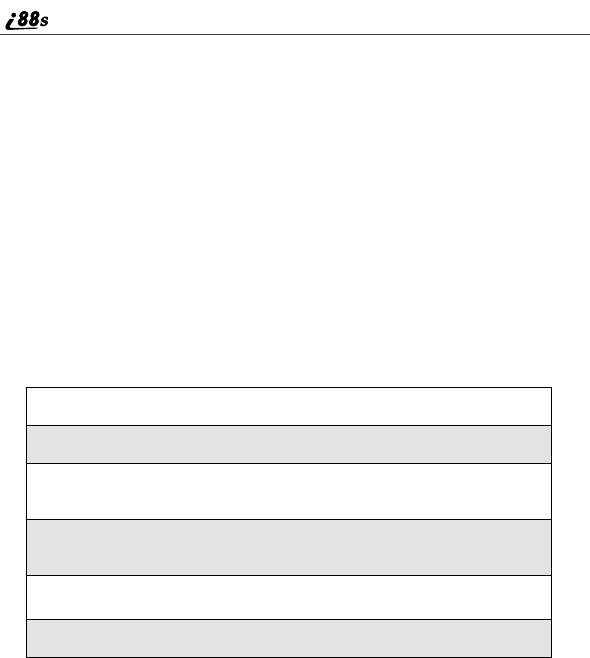
34
www.motorola.com/iden
Text Display Area
On the Ready screen, the text displayed in this area is determined by your
wireless communications provider. When you access other screens, this area
displays menu options, messages, names, phone numbers, and other
information.
The number of lines of text displayed in the text display area depends on which
display view is selected —Standard view, Compressed view, or Zoom view.
(For more information, see “Setting Text Display”on page 145.) In Standard
view, five lines of text are displayed.
NOTE: Standard view is the default display setting. Unless otherwise
noted, illustrations in this User’s Guide depict Standard view.
Call Information Icons
Each of the following icons appear on the left side of the text display area
providing you with information about your phone’s line or lines.
Menu Icon
This menu icon Sappears on any screen from which a menu can be accessed.
To access a menu, press the menu key on your keypad. This key has the menu
icon printed on it.
Menus are context sensitive. The menu that appears depends on the screen you
access it from and the items on the menu apply to the task you are currently
performing.
Icon Indicates...
DIn Call - phone is on an active call.
EIncoming Call - phone is receiving an
incoming call.
XOutgoing Call - phone is placing an
outgoing call.
zOn Hold - phone has a call on hold.
?End Call - phone has ended the active call.

35
Navigating Menus and Lists
Press mfrom the Ready screen to access the main menu.
Display Options
Two display options appear at the bottom of most screens. These options enable
you to perform a wide variety of actions, including changing, saving and
viewing information, running programs, and canceling previous actions. You
activate a display option by pressing the option key below it.
The Ready screen display options provide quick access to two main menu
features. By default, the Phonebook (PHBK)andMessages(MESG)display
options appear on the Ready screen. You can control which display options
appear on the Ready screen using the phone’s Personalize feature in the Settings
menu (see “Changing Ready Screen Options”on page 141).
The display options on screens other than the Ready screen cannot be
customized.
Navigating Menus and Lists
The i88sphone is menu driven. By navigating menus, you access submenus
which lead to all of the functions and features that are built into your phone. Use
the menus to store calls, manage your Phonebook and Datebook, change your
phone settings, browse the Internet, and more.
Some features include lists of names, numbers, or other information. These list
items can be accessed the same way menu options are.
To access the items in a menu or list, scroll through using the four-way
navigation key Nnear the center of your keypad. Scroll down by pressing the
lower portion of the navigation key R. Scroll up by pressing the upper portion
of the navigation key Q. Holding down the appropriate part of the navigation
key speeds up scrolling. If you continue scrolling after you have reached the
bottom or top of a menu or list, you “wrap-around”to the opposite end (if the
scroll setting is set to “wraparound”).
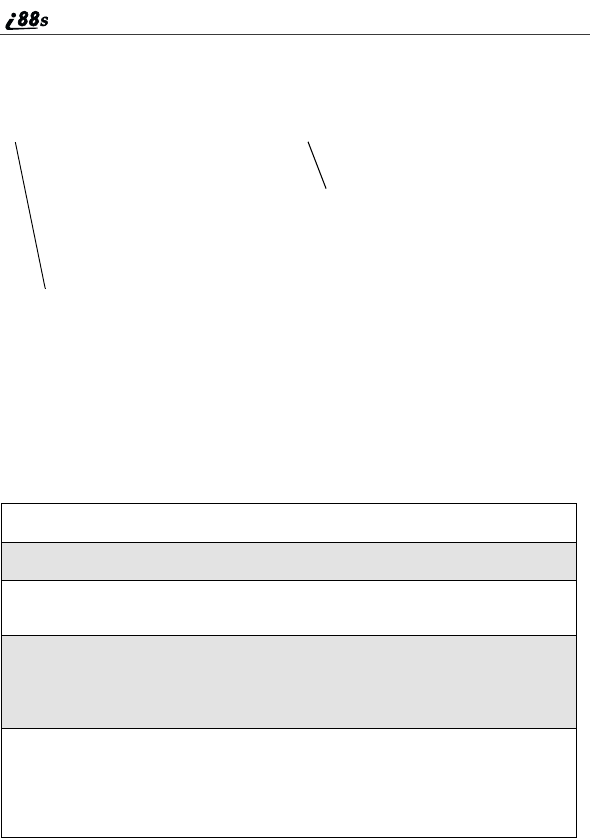
36
www.motorola.com/iden
If more items appear in a menu or list than can be displayed in the text area, a
down arrow or up arrow appears in the left side of the screen indicating that
more options may be accessed by scrolling up or down.
Main Menu Options
By default, the main menu options appear in the order determined by your
service provider. You can change the order in which they appear by using the
Personalize feature (see “Reordering Main Menu”on page 140)
To access the main menu, press mfrom the Ready screen:
Menu Item Use to ...
7Net Browse the Web.
FJava Run pre-installed and download custom
Java applications on your phone.
mSettings Customize your phone: Ring/Vibe, In Call
Setup, Security, Personalize, Initial Setup,
Phone Setup, Voice Volume, and Talkgroup
Settings.
!GPS Find your phone’s approximate
geographical location, expressed as latitude
and longitude. See “IMPORTANT: Things
to Keep in Mind”on page 94 for important
limitations on this feature.
Down arrow Up arrow
BS
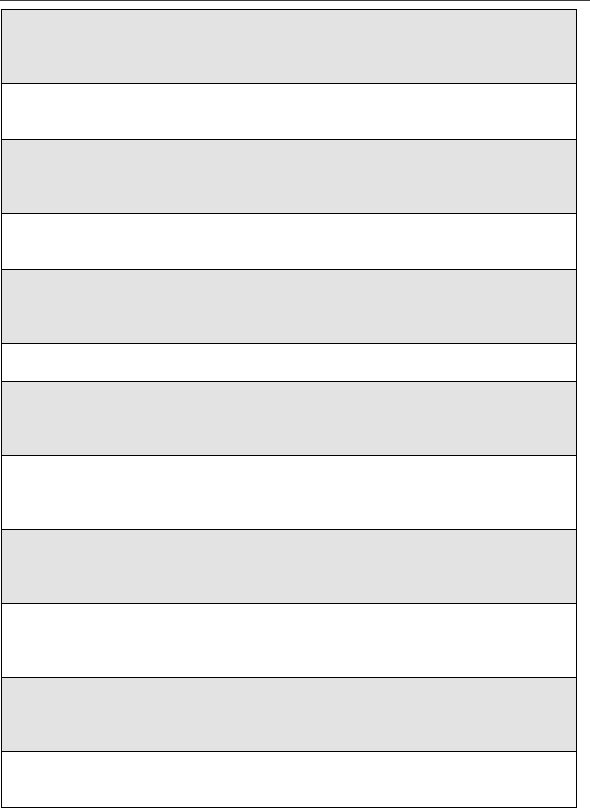
37
Main Menu Options
(VoiceRecord Record personal messages or the incoming
portion of phone calls to play back at a later
time.
bPhonebook Store and retrieve a list of stored entries for
calling, editing, viewing and deleting.
RMessages Receive, store, access and manage Voice
Mail, FaxMail, Text Messages, and Net
Alert.
;Call Forward Settings for forwarding calls in various
situations.
=Datebook Schedule and organize events, by the day
or the month, such as appointments and
meetings.
OMemo Input and store numbers to access later.
zCall Timers Display the duration of phone calls, private
or group calls, circuit data use, and
Kilobytes sent and received.
jRecent Calls Access a list of the last 20 sent, received, or
missed calls. Calls can be made from this
list.
nShortcuts Associate a menu option with a number on
the alphanumeric keypad for quick and
easy access.
UMy Info View the name, Private ID, phone numbers
for lines 1 and 2, IP address, and circuit
data number of your phone.
vStyles Create or edit a group of settings and save
them as one for use in different
environments.
:Call Alert Store received call alerts to respond to at
your convenience.

38
www.motorola.com/iden
To choose the highlighted Main Menu selection, press Bunder SELECT. To
exittheMainMenu(andreturntotheReady screen), press Aunder EXIT or
press e.
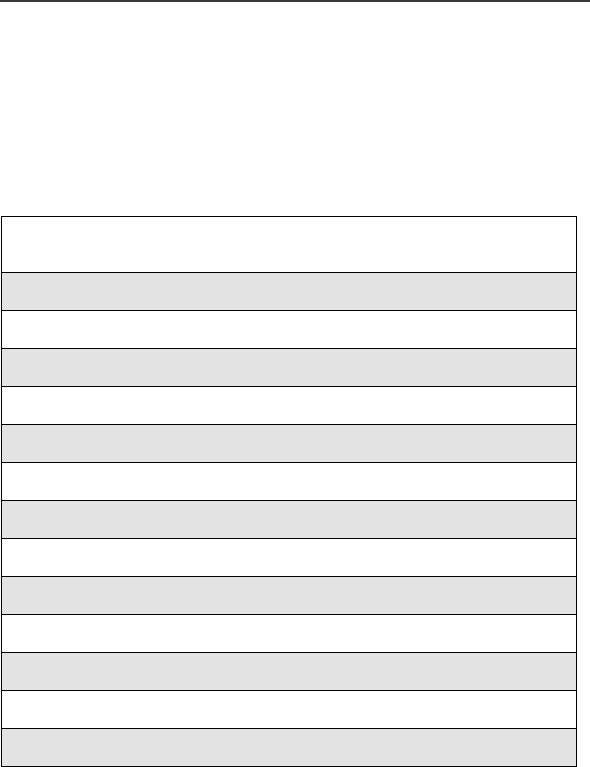
39
Phonebook
The Phonebook allows you to store up to 250 frequently used names and
numbers.
When you store information in your Phonebook, it is saved on your SIM card. If
you move your SIM card to another SIM-based Motorola iDEN phone, you can
access information in your Phonebook from that phone.
This section includes:
Accessing Phonebook with an i2000, i2000plus, or
GSM Phone Page 40
Phonebook Entries and Speed Dial Numbers Page 40
Phonebook Icons Page 40
Voic e Names Page 41
Accessing Your Phonebook Page 41
About Phonebook Entries Page 42
Viewing Phonebook Entries Page 42
Sorting Phonebook Entries Page 43
Adding Phonebook Entries Page 44
Editing Phonebook Entries Page 50
Storing Phone Numbers and Private IDs Quickly Page 48
Deleting Phonebook Entries Page 51
Pause Digit Entry Page 51
Plus Dialing Page 52
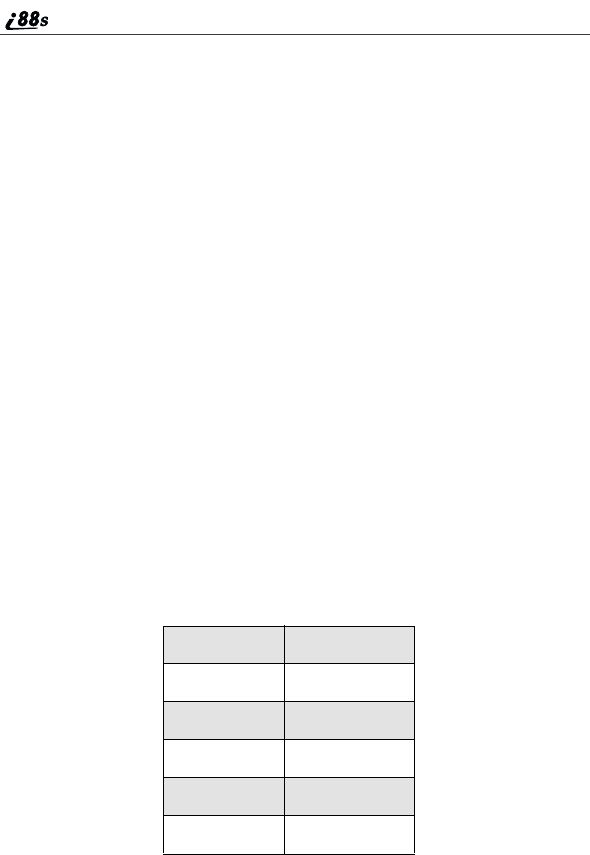
40
www.motorola.com/iden
Accessing Phonebook with an i2000, i2000plus,
or GSM Phone
If you plan to use the information stored in your Phonebook with an i2000,
i2000plus, or any other GSM phone, you must purchase CompanionPro. Go to
www.motorola.com/iden or your service provider’swebsiteformore
information.
You can use CompanionPro to make the Phonebook information saved to your
i88sphone’s SIM card accessible in this type of phone.
Phonebook Entries and Speed Dial Numbers
Your Phonebook can store multiple phone numbers to a single name. For
example, you can enter someone’s name into your Phonebook once and then
assign that person’s home, office, mobile phone and fax numbers to the name.
Each number stored in your Phonebook is automatically assigned a Speed Dial
number that corresponds to its location in your Phonebook. Each phone number
uses one Speed Dial location, even if it is assigned to the same name as other
phone numbers. The phone number stored in location 1 is assigned Speed Dial
number 1, the phone number stored in location 2 is assigned Speed Dial number
2, and so forth, to location 250.
Phonebook Icons
Icons that appear to the right of entries in your Phonebook convey information
about those entries.
When you enter a phone number in your Phonebook, you can designate the
phone number’s type using any of the following icons:
WMobile
hPrivate
qWork
QMain
LHome
bPager
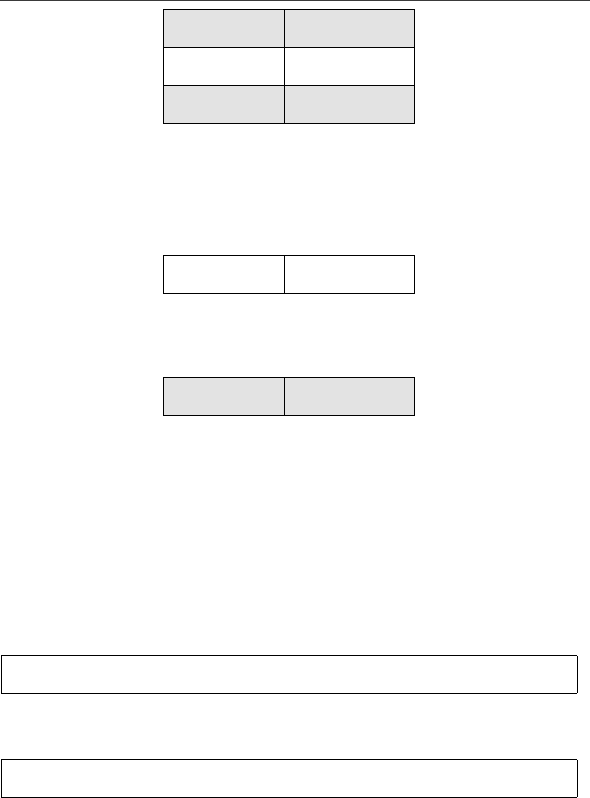
41
Voice Names
For more information on entering phone numbers into your Phonebook, see
“Adding Phonebook Entries”on page 44.
The “picker”arrows appearing around the phone number type icon indicates
multiple phone numbers stored under one name:
The Voice Name icon appearing to the left of one of the phone number type
icons indicates that a voice name is associated with the Phonebook entry:
Voice Names
A voice name is an audio recording you make that you assign to a number in
your Phonebook by speaking into your i88sphone. You can then dial the
number by speaking the words you recorded into the phone. See step 6 of
“Adding Phonebook Entries”on page 44 for more information on creating a
voice name.
Accessing Your Phonebook
If PHBK is one of your display options:
If PHBK is not one of your display options:
KFax
ZOther
nTalkgroup
ef pickers
pVoic e Name
From the Ready screen, press Aunder PHBK.
1
From the Ready screen, press m.

42
www.motorola.com/iden
USER TIP: You can also access the Phonebook by pressing m
while your phone is in a phone call or private call.
This brings you to the Phonebook screen. From this screen, you can view, sort,
add, edit, and delete Phonebook entries, check Phonebook capacity, or make
calls.
About Phonebook Entries
Each Phonebook entry may contain the following information:
•The name associated with the entry. Typically, this is the name of the
person whose number you are storing in the Phonebook.
•The type of number to be stored: Mobile, Private, Work, Main, Home,
Pager, Fax, Other, or Talkgroup.
•The phone number to be stored. Every Phonebook entry must contain a
phone number. This number may be any type of phone number, Private ID,
or Talkgroup number.
•A Speed Dial number. You may accept the default Speed Dial number or
assign a different one.
•A voice name audio recording for voice-activated dialing.
Viewing Phonebook Entries
Names with more than one number assigned to them appear with ef
surrounding the icon to the right of the name. For example, if you had stored a
home and work number for Joe Smith, the entry for Joe Smith’s home phone
number would look like this:
Joe Smith eLf
Whenthenameishighlighted,pressTto scroll to the icons representing each
of the numbers assigned to that name.
2
Press Rto scroll to Phonebook.
3
Press Bunder SELECT.
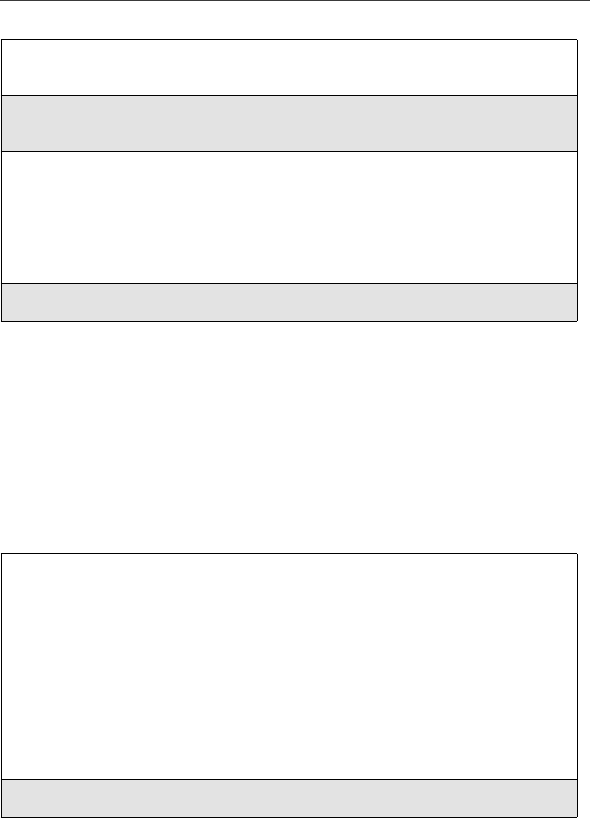
43
About Phonebook Entries
To view any of the phone numbers assigned to a name:
Sorting Phonebook Entries
You can sort your Phonebook entries by:
•Name —thenameyouenteredfortheentry.
•Speed # —the Speed Dial location of the entry.
NOTE: Private calls cannot be made from the Phonebook when sorted
by Speed Dial location.
To sort your Phonebook list:
1
From the Phonebook screen, press Sto scroll to the name associated
with the phone number you want to see.
2
Press Tto view the icons representing the phone numbers assigned to
that name.
3
When the icon representing the number you want to view is displayed,
press Bunder VIEW.
If there is a Private ID or a Talkgroup number stored for the person,
press m.ThenpressRto scroll to View and press Bunder
SELECT.
4
Press Sto view the other numbers stored for this name.
1
From the Phonebook screen, press mto
view the Phonebook Menu screen.
2
Press Rto scroll to Sort By.
}
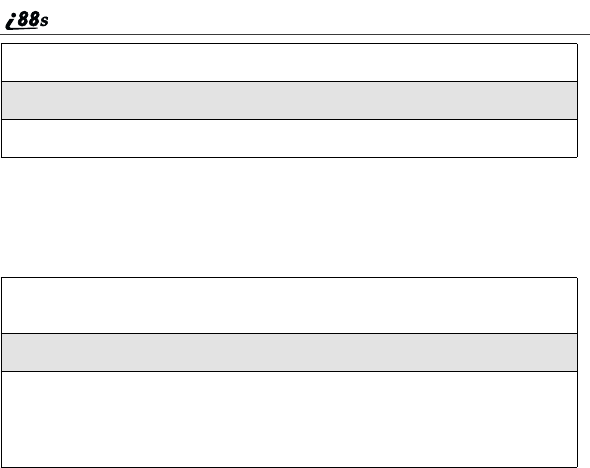
44
www.motorola.com/iden
Checking Phonebook Capacity
Your Phonebook can store up to 250 numbers of any kind. To see how many
entries are stored in your Phonebook:
Adding Phonebook Entries
Using the following instructions, you will enter the information in the order the
items appear on the Phonebook Entry Details screen. However, you can enter
this information in any order by pressing Sto scroll through the items on the
Entry Details screen.
YoucanleaveanyitemblankorunchangedbypressingSto scroll past it on
the Entry Details screen.
NOTE: Number and Type are required for a valid Phonebook entry.
After you have entered a phone number and any other information you wish to
include, you can press Aunder DONE to save the Phonebook entry.
To cancel a Phonebook entry at any time, press eto return to the Ready screen.
3
Press Bunder SELECT.
4
Press Rto scroll to the desired sorting method: Name or Speed #.
5
Press Bunder SELECT.
1
From the Phonebook screen, press mto view the Phonebook Menu
screen.
2
Press Rto scroll to Capacity.
3
Press Bunder SELECT.
The Capacity screen shows how many storage spaces in you
Phonebook are in use and how many are empty.

45
About Phonebook Entries
To add a Phonebook entry:
1
To access the Entry Details screen:
From the Phonebook screen with [New
Entry] highlighted, press Bunder
SELECT.
Or,
From the Phonebook screen, press m.
Then press Rto scroll to New and press
Bunder SELECT.
2
If you want to assign a name to your
Phonebook entry:
With the Name field highlighted, press
Bunder CHANGE.
From the Name screen, enter the name
using the alphanumeric keypad.
See “UsingT9TextInput”on page 25 for
information about entering text into this
field.
When you are finished, press Bunder OK.
The Entry Details screen returns with the Type field highlighted.
3
To assign the number type:
With the Type field highlighted, press B
under CHANGE.
From the Type Editor screen, press Rto
scroll to the type of phone number you
want to assign to the Phonebook entry.
Press Bunder SELECT.
The Entry Details screen returns with the
#field highlighted.
H
I
J

46
www.motorola.com/iden
4
Assign a phone number to your
Phonebook entry:
With the #field highlighted, press B
under CHANGE.
Type the number using the alphanumeric
keypad. For phone numbers, use the
10-digit format.
To delete a digit, press Aunder
DELETE.
See “Pause Digit Entry”on page 51 and “Plus Dialing”on page 52 for
information on using these features when storing phone numbers in you
Phonebook.
NOTE: The number can be up to 20 characters long.
When you are finished, press Bunder OK.
The Entry Details screen returns with the Speed # field highlighted.
5
The default Speed Dial number assigned
to the Phonebook entry is displayed in the
Speed # field. This is always the next
available Speed Dial location.
If you want to assign the phone number to
a different Speed Dial location:
With the Speed # field highlighted, press
Bunder CHANGE.
Press Aunder DELETE to delete the
current Speed Dial number.
Type the new Speed Dial number using the alphanumeric keypad.
When you are finished, press Bunder OK.
K
L
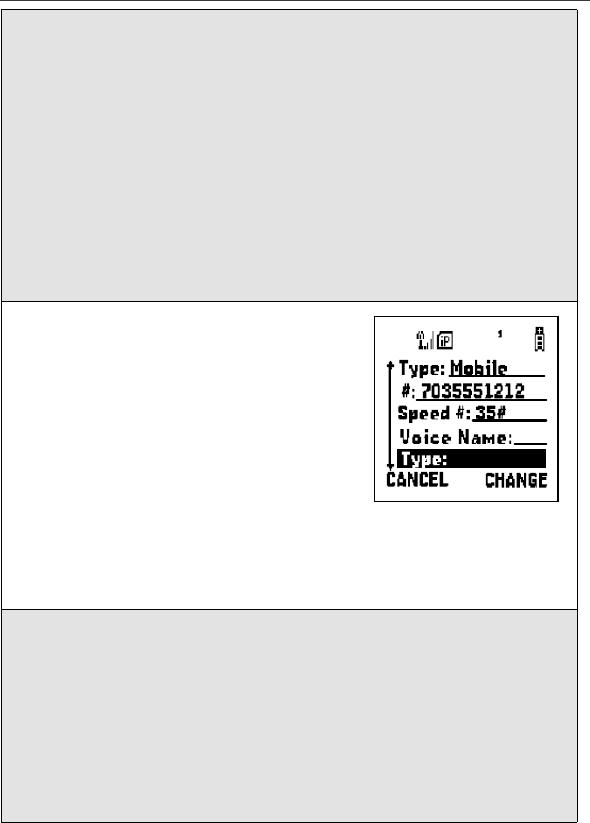
47
About Phonebook Entries
6
If you want to assign a voice name to the
number:
With the Voice Name field highlighted,
press Bunder RECORD.
As directed by the screen prompts, say and
repeat the name you want to assign to the
number. Speak clearly into the
microphone.
An )icon appears in the Voice Name
field indicating that the voice name has been recorded.
USER TIP: For best results, record in a quiet environment.
7
If you want to store more phone numbers
to the name associated with this
Phonebook entry:
Press Rto scroll to the bottom of the
Type field and then press Bunder
CHANGE.
AnewType field appears for the
additional number.
Enter the information for the additional
phone number using step 3 through step 7.
NOTE:Each name in your Phonebook may have up to seven phone
numbers and one Private ID associated with it.
8
When you have entered all the information
you wanted in this Phonebook entry, press
Aunder DONE.
M
b
T
N
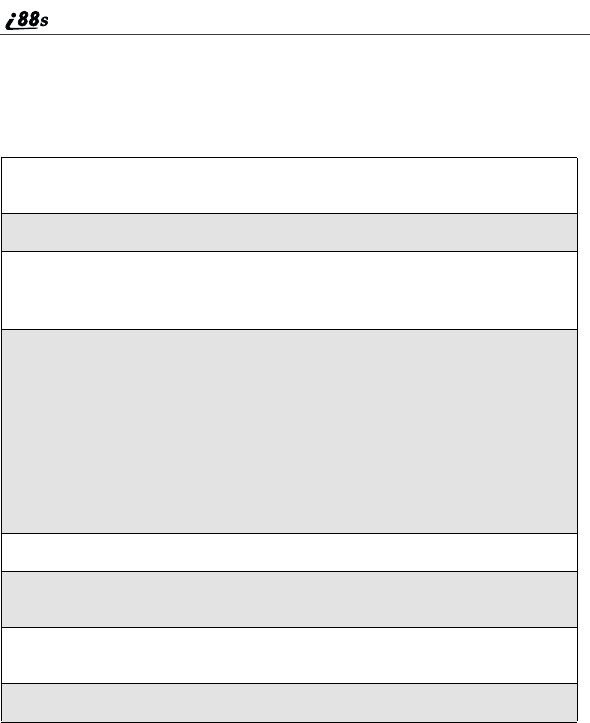
48
www.motorola.com/iden
Storing Phone Numbers and Private IDs Quickly
Your phone gives you three ways to store phone numbers quickly: from the
Ready screen, from the Recent Calls list, and from Memo.
To store a number from the Ready screen:
1
From the Ready screen, use the alphanumeric keypad to enter the
number you want to store.
2
Press mto access the Dialing Menu screen.
3
With Store Number highlighted, press Bunder SELECT.
This displays the Store To screen.
4
To store to a new entry, press Bunder SELECT. The Entry Details
screen will display with the number entered in the field.
Or,
To store to an existing entry, press Sto scroll the list of names in your
Phonebook. Or press the first letter of the entry to jump to the entry.
Once the desired entry is highlighted, press Bunder SELECT. The
Phonebook information for that entry displays with the number entered
in the #field.
5
From the Entry Details screen, press Sto scroll to the first Type field.
6
From the Type Editor screen, press Sto scroll to the selection that
you want to assign to the phone number. Press Bunder SELECT.
7
If you want to add more information to the Phonebook entry, follow the
applicable instructions in “Adding Phonebook Entries”on page 44.
8
Press Aunder DONE.
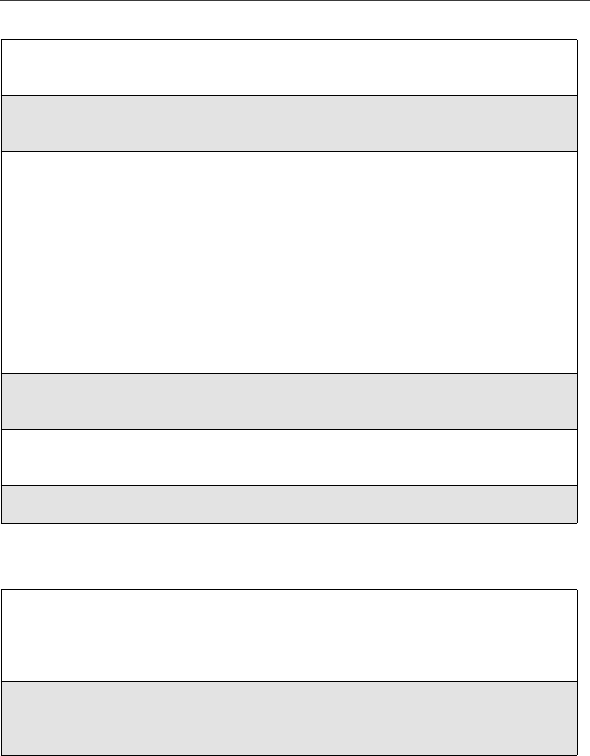
49
About Phonebook Entries
To store a number from the Recent Calls list:
To store a Private ID from the Recent Calls list:
Follow step 3 through step 6 in “To store a number from the Recent Calls list”
on page 49.
1
From the Recent Calls screen, press Rto scroll to the 10-digit
telephone number you want to store.
2
Press Bunder STORE. This displays the Store To screen with [New
Entry] highlighted.
3
To store a new entry, press Bunder SELECT. The Entry Details
screen displays with the number entered in the #field and the Type field
highlighted.
Or,
To store to an existing entry, press Sto scroll the list of names in your
Phonebook. Or press the first letter of the entry to jump to the entry.
Once the desired entry is highlighted, press Bunder SELECT. The
Phonebook information for that entry displays with the number entered
in the #field and the Type field highlighted.
4
Press Bunder CHANGE. Press Rto scroll to the type of number you
want to assign to the Phonebook entry. Press Bunder SELECT.
5
If you want to add more information to the Phonebook entry, follow the
applicable instructions in “Adding Phonebook Entries”on page 44.
6
Press Aunder DONE.
1
Press Rto scroll to the Private ID number you want to store.
NOTE: The Store option for Private ID numbers (e.g., 123*123*1234),
will not display in the Recent Calls list.
2
With the Private ID highlighted, press mto access the Rec. Calls
Menu.PressRto scroll to Store.PressAunder SELECT. This
displays the Store To screen with [New Entry] highlighted.
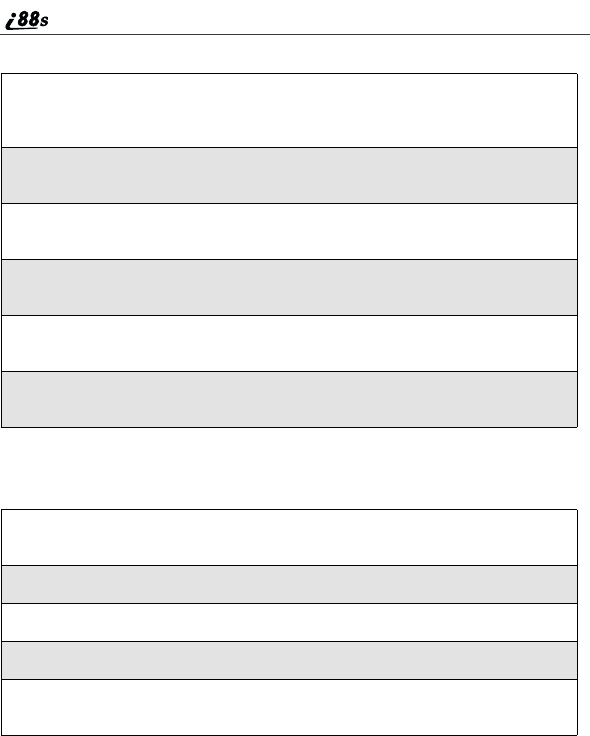
50
www.motorola.com/iden
To store a number or Private ID from Memo:
Editing Phonebook Entries
1
Go to the Memo screen. If the number or Private ID you want to store
in your Phonebook is not already stored on your Memo screen, enter it
now.
2
Press m.WithStore to PHBK highlighted, press Aunder
SELECT.
3
Press Aunder SELECT. This displays the Store To screen with [New
Entry] highlighted.
4
To create a valid Phonebook entry, you must assign a type. Press Rto
scroll to the Type field.
5
Press Bunder CHANGE. Press Rto scroll to the type of number you
want to assign to the Phonebook entry. Press Bunder SELECT.
6
If you want to add more information to the Phonebook entry, follow the
applicable instructions in “Adding Phonebook Entries”on page 44.
1
From the Phonebook screen, press Rto scroll to the entry you want to
edit.
2
Press mto view the Phonebook Menu.
3
Press Rto scroll to Edit.
4
Press Bunder SELECT. The Entry Details screen displays.
5
Follow the applicable instructions in “Adding Phonebook Entries”on
page 44 to edit the various fields.
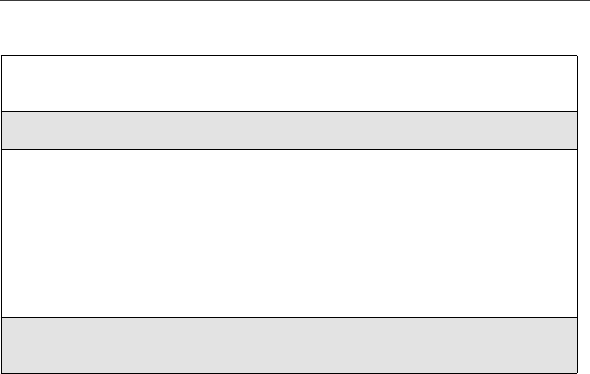
51
Pause Digit Entry
Deleting Phonebook Entries
Pause Digit Entry
When storing a number, you can program your phone so that it will not only dial
a number but also pause before entering another series of numbers such as a
personal identification number (PIN) or password. This feature is particularly
useful for accessing automated services such as voice mail and banking systems
from your i88sphone.
Here’s how it works. Let’s say you have a company voice mail account that you
frequently check while traveling. And, to access that account you must do the
following:
•Dial your work number;
•Press # while the voice mail greeting is being played; and
•Enter your PIN to access your messages.
You can program your phone to enter all of the above information for you. All
you have to do is separate each entry with a pause. If you were to program your
phone to automatically input the above information, the stored data would look
like this 17035551234P#P1234. In this example, the first eleven digits represent
the number that must be dialed to access your voice mail. The P represents a 3
second pause. The # interrupts your greeting. The second P represents another 3
second pause. The last four digits represent your PIN.
1
From the Phonebook screen, press Rto scroll to the entry you want to
delete.
2
Press mto view the Phonebook Menu.
3
Press Rto scroll to Delete Contact or Delete Number.
Delete Contact deletes the name and all numbers associated with that
name.
Delete Number deletes the number associated with the icon that is
currently displayed in the Phonebook list for the name. The name and
all the other numbers will remain.
4
Press Bunder SELECT. A warning screen displays requiring you to
confirm the deletion.
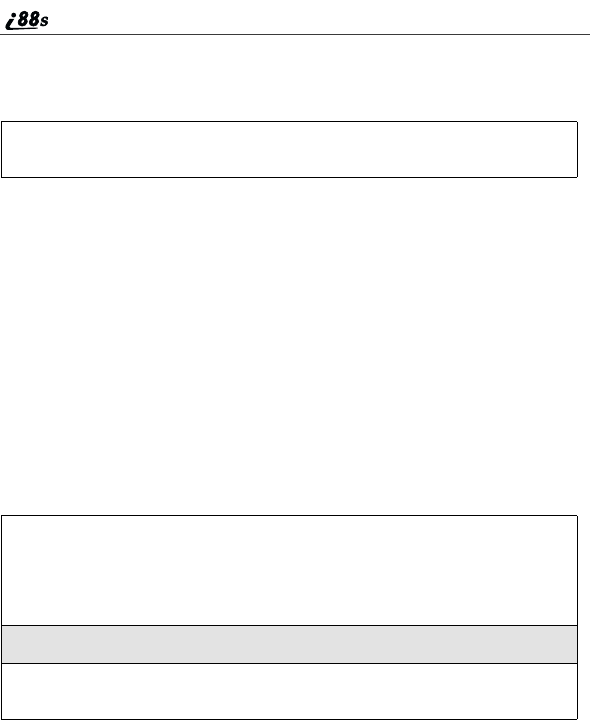
52
www.motorola.com/iden
You can use this feature not only to enter PINs and passwords but also to have
the phone automatically select menu options (i.e., press 1 to hear messages).
To create a three-second pause follow the steps below:
NOTE:You can enter up to 20 characters in a single entry, stored or
dialed.
NOTE: If you use a system that will not let you enter an option until the
automated message has played in its entirety, you can program
your phone to pause for more than 3 seconds. For example,
performing the above step twice will program two pauses and
cause your phone to wait 6 seconds before entering the next set
of numbers.
Plus Dialing
This feature enables you to place an international call from most countries —
without entering the local international access code. Use Plus Dialing for all
Phonebook entries if you plan to travel outside the United States. Begin by
following the instructions for “Adding Phonebook Entries”on page 44. Before
you type the phone number to be stored:
Press and hold *for two seconds. The pause symbol (P) will appear
on the display screen.
1
Press and hold 0for two seconds. A “0”appears, then changes to a
“+”.
NOTE: The network translates the “+”into the appropriate
international access code needed to place the call.
2
Enter the country code, city code, or area code, and phone number.
3
Follow the rest of the instructions for “Adding Phonebook Entries”on
page 44.
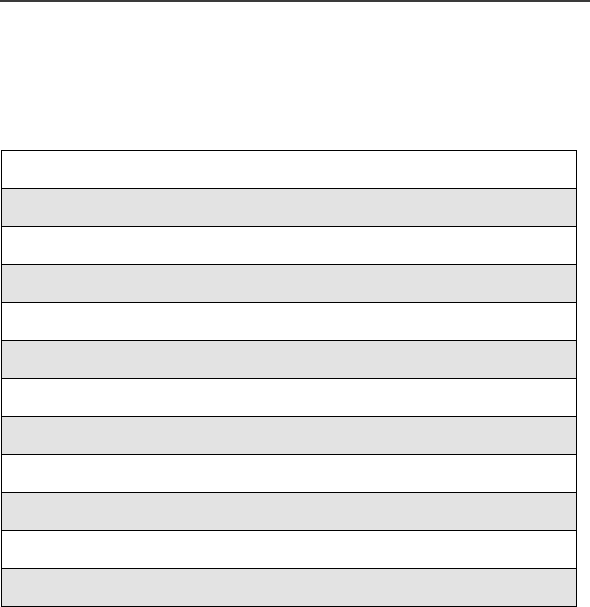
53
Digital Cellular
The i88sphone enables you to make and receive domestic and international
phone calls, make emergency calls, and be notified of a missed call.
This section includes:
Making Phone Calls
Your i88sphone provides the following features for making phone calls:
•Direct Dial
•Phonebook
•Recent Calls
•Speed Dial
•Turbo Dial®
Making Phone Calls Page 53
Emergency Calling Page 59
Receiving a Phone Call Page 59
Ending a Phone Call Page 59
Recent Calls Page 59
Call Timers Page 63
Hands-Free Speakerphone Page 64
Mute Page 64
Call Waiting Page 65
Call Hold Page 66
Three-Way Calling Page 67
Call Forwarding Page 68
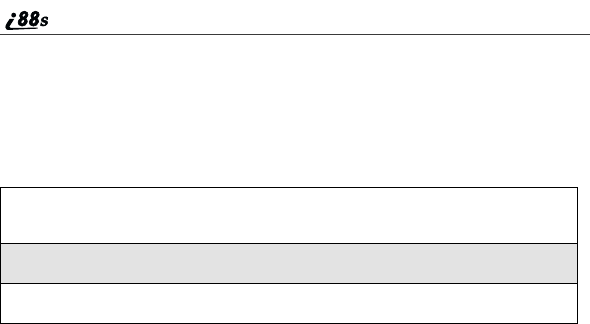
54
www.motorola.com/iden
•Voice-Activated Dialing
•Last Number Redial
•TTY —your phone supports TTY devices and communications.
Using Direct Dial
NOTE:See “Plus Dialing”on page 52 for information on making
international calls.
If you make a mistake:
•To clear one digit, press Aunder DELETE.
•To clear all digits, press and hold Aunder DELETE.
•To cancel, press e.
Making Calls from the Phonebook
After you have entered phone numbers into your Phonebook, you can use these
numbers to make phone calls. For information on entering numbers into your
Phonebook, see “Adding Phonebook Entries”on page 44.
1
From the Ready screen, use the keypad to enter the number you want to
call.
2
Press sto place the call.
3
Press eto end the call.

55
Making Phone Calls
To make calls from the Phonebook:
1
From the Ready screen, if PHBK is one of your display options, press
Aunder PHBK.
Or,
From the Ready screen, press m,thenpressRto scroll to
Phonebook.PressBunder SELECT.
2
Press Rto scroll through the names in your Phonebook.
Or,
Use the alphanumeric keypad to enter the first letter of the name and
press Rto scroll through the names beginning with that letter.
Stop when the name of the person you want to call is highlighted.
3
If more than one number is stored for the person you want to call, ef
appears around the icon to the right of the person’sname.
Press Tto scroll through the icons representing the numbers stored for
that person.
Or,
Press Bunder VIEW to view all the numbers stored for this person.
Then press Rto scroll to the number you want to call.
For more information on assigning multiple numbers to one person, see
“Adding Phonebook Entries”on page 44.
4
Press sto place the call.
5
Press eto end the call.
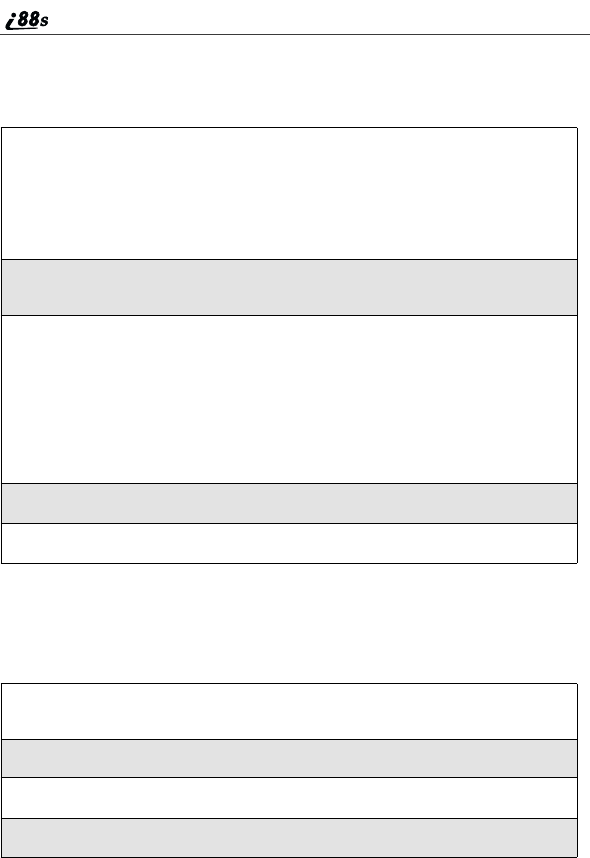
56
www.motorola.com/iden
Making Calls from the Recent Calls List
Your phone stores the numbers of the last 20 calls you received or sent in the
Recent Calls list.
Using Speed Dial
Each phone number stored in your Phonebook is assigned a Speed Dial number.
You can use the Speed Dial number to quickly place a call.
1
From the Ready screen, press R.
Or,
From the Ready screen, press Sto Recent Calls is not the first item
on the list, press Sto scroll to it. Press Bunder SELECT.
2
Press Sto scroll the list received or sent recent calls until you reach
the desired call.
3
To view additional information about the call:
Press Bunder VIEW.
Or,
Press mto access the Rec. Calls Menu.ThenpressRto scroll to
View and press Bunder SELECT.
4
Press sto place the call.
5
Press eto end the call.
1
From the Ready screen, enter the Speed Dial number assigned to the
phone number you want to call.
2
Press #.
3
Press sto place the call.
4
Press eto end the call.
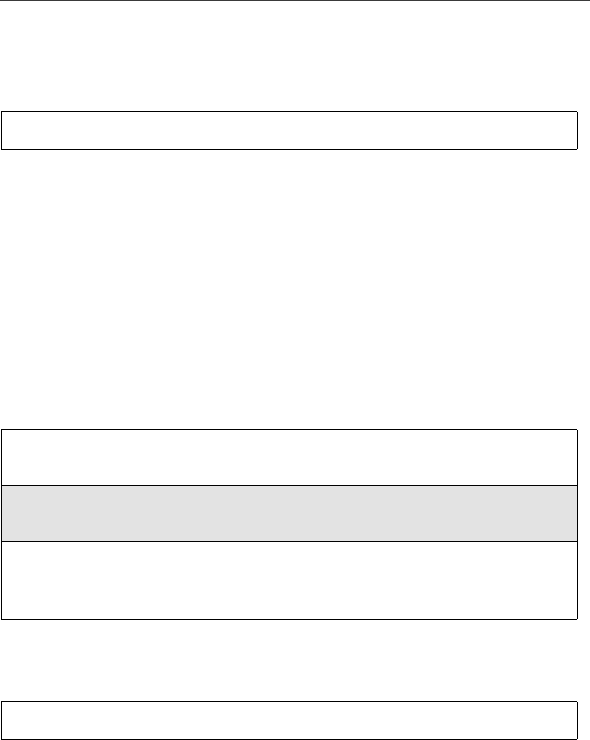
57
Making Phone Calls
Using Turbo Dial
Turbo Dial allows you to call the numbers in your Phonebook associated with
Speed Dial numbers 1 through 9 by pressing and holding the corresponding
numerickeyonthekeypad.
NOTE: Turbo Dial cannot be accessed while the browser is active, nor
while Keypad Lock or SIM Lock is active.
Making Calls Using Voice-Activated Dialing
If you have recorded a voice name for a phone number in your Phonebook (see
“Voice Names”on page 41), you can use this voice name to call the number.
USER TIP: If you have difficulty making phone calls using a voice
name, try assigning a longer voice name to the number. For
example, if the voice name “Joe”fails to place a call to Joe
Smith’s number, try assigning the voice name “Joe Smith”
to the number.
Last Number Redial
Press and hold a number (keys 1 through 9).
1
From the Ready screen, press and hold ton the side of your phone
until the Say Name Now screen appears.
2
Speaking into the microphone, say the voice name assigned to the
phone number you want to call.
3
Your phone will play the name back to you.
The call will automatically be placed.
Press and hold sto redial the last number you called.
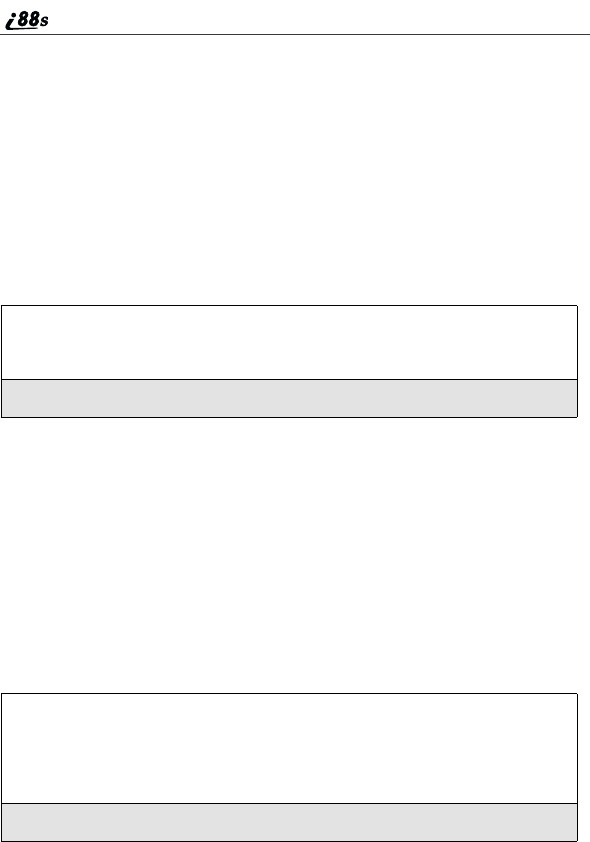
58
www.motorola.com/iden
Making TTY Calls
NOTE: This feature may not be offered by
your service provider.
You can use your phone to make calls using a
TTY device.
When you make a TTY call, the call begins in the
TTY mode you last selected. You can change the
TTY mode during a call. For more information on
choosing a TTY mode, see “Setting TTY Mode”
on page 147.
To make a call using a TTY device:
Placing International Phone Calls
When making an international call, you can either enter the international access
code directly (011 in the United States) or use Plus Dialing.
You can make international calls from your Phonebook if you have stored the
numbers with Plus Dialing. See “Adding Phonebook Entries”on page 44 and
“Plus Dialing”on page 52 for more information.
NOTE: Your service default is “International Calls Restricted.”
Therefore, you must contact Customer Care to obtain
international dialing access.
To make an international call using Plus Dialing:
1
Connect one end of a 2.5mm cable into the jack on the phone. (To locate
the jack, see page 6.) Connect the other end of the cord into your TTY
device.
2
Enter the phone number you wish to call and press.
1
Press and hold 0for two seconds. A “0”appears, then changes to a
“+”.
NOTE: The network translates the “+”into the appropriate
international access code needed to place the call.
2
Enter the country code, city code, or area code, and phone number.
Q
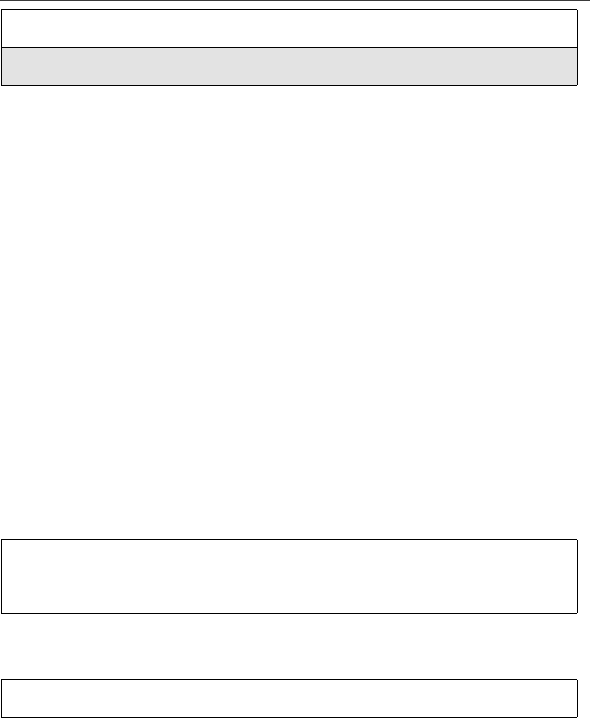
59
Emergency Calling
Emergency Calling
Your phone supports emergency calling. Emergency calls can be made even
when the SIM card is blocked or not in the phone.
Dial 911 to be connected to an emergency response center. If you are on an
active call, you must end it before calling 911.
When you make an emergency call, your phone’s GPS Enabled feature can help
emergency service personnel find you, if you are in a location where your
phone's GPS antenna has established a clear view of the open sky and your local
emergency response center has the equipment to process location information.
See “GPS Enabled”on page 93, and particularly “IMPORTANT: Things to
Keep in Mind”on page 94 and “Making an Emergency Call”on page 95, for
further information on the limitations of this feature. Because of the limitations
of this feature, always provide your best knowledge of your location to the
emergency response center when you make a 911 call.
NOTE: If you have enabled the Keypad Lock feature, you must unlock
the phone’s keypad before any call can be made, including 911
emergency calls.
Receiving a Phone Call
Ending a Phone Call
Recent Calls
The Recent Calls feature stores the phone numbers of the 20 most recent calls
you have made and received, including private and talkgroup calls. You can
access Recent Calls to:
3
Press sto place the call.
4
Press eto end the call.
Incoming calls are indicated by a ring, vibration, or backlight
illumination. Press sor any key on the keypad or press Bunder YES
to answer the call.
Press eto hang up.
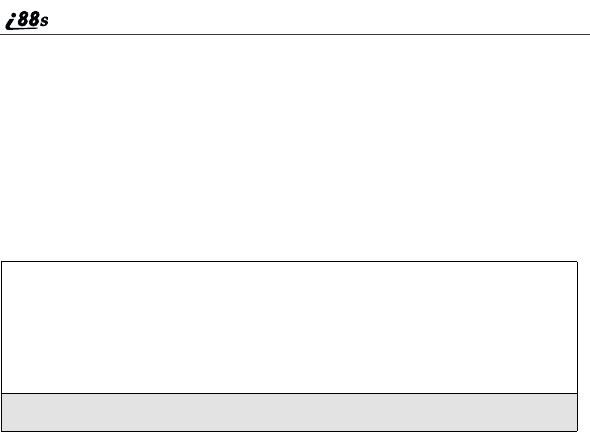
60
www.motorola.com/iden
•view your recent calls
•store numbers to the Phonebook
•delete recent calls
•call numbers on the Recent Calls list
NOTE: The Recent Calls list displays briefly after each call.
Viewing Recent Calls
To view your Recent Calls list:
If the number of the recent call is stored in your Phonebook, the name associated
with the phone number appears on the Recent Calls list.
For private calls, Talkgroup calls, and numbers stored in your Phonebook, an
icon appears to the right or the name of number indicating the Phonebook type
of the number used in the call. See “Phonebook Icons”on page 40 for more
information about Phonebook types.
For phone calls, an icon appears to the left of the name or number indicating the
type of call:
•Nindicates an incoming call
•aindicates an outgoing call
•Vindicates a missed call. (Missed calls appear on your Recent Calls list
only if you have Caller ID.)
For private calls, an icon appears to the left of the name or number indicating the
type of call:
•hindicates a Private Call
•%indicates a Group Call
1
From the Ready screen, press R.
Or,
From the Ready screen, press Sto scroll to Recent Calls.PressB
under SELECT.
2
Press Sto scroll the list of recent calls.
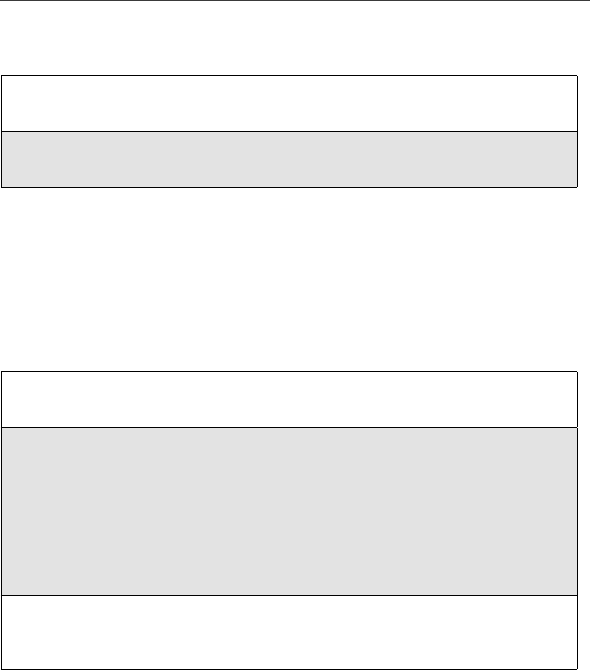
61
Recent Calls
Getting Detailed Information About Recent Calls
To get more information about a recent call:
The Call Details screen that appears displays information such as the name
associated with the phone number of the recent call, the phone number, the date,
time, and duration of the call.
Storing a Recent Call Number to the Phonebook
To store a number from the Recent Calls list to the Phonebook:
Calling From the Recent Calls List
See “Making Calls from the Recent Calls List”on page 56.
1
From the Recent Calls screen, press Sto scroll to the call you want
more information on.
2
Press mto access the Rec. Calls Menu.ThenpressRto scroll to
View and press Bunder SELECT.
1
From the Recent Calls screen, press Sto scroll to the number you
want to store.
2
Press Bunder STORE.
Or,
Press mto access the Rec. Calls Menu.ThenpressRto scroll to
Store and press Aunder SELECT.
This displays the Store To screen with [New Entry] highlighted.
3
To store a Recent Call number of Private ID to the Phonebook, follow
step3throughstep6in“Storing Phone Numbers and Private IDs
Quickly”on page 48.
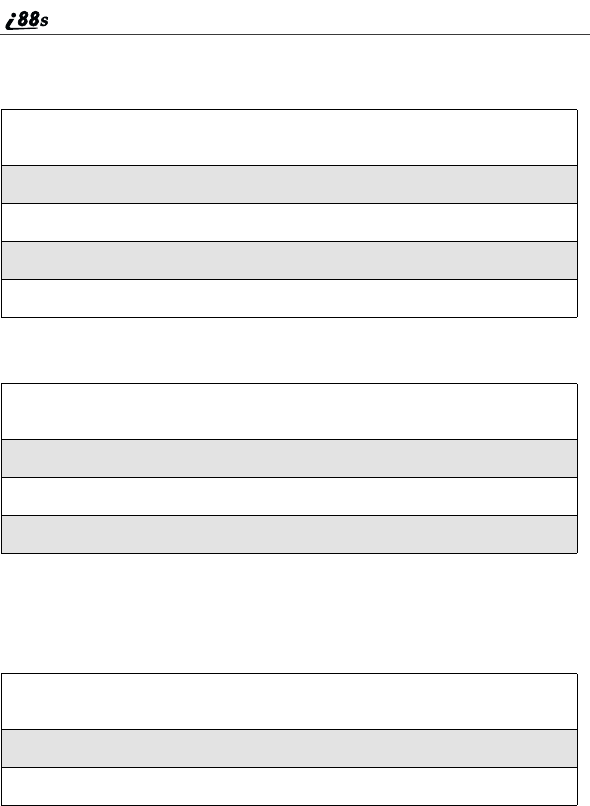
62
www.motorola.com/iden
Deleting Recent Calls
To delete a recent call:
To delete all calls on the Recent Calls list:
Accessing Voice Record From Recent Calls
You can access the Voice Record feature from Recent Calls and use it to record
spoken messages that you can listen to later.
For more information about Voice Record, see “Voice Record”on page 121.
1
From the Recent Calls screen, press Sto scroll to the call you want to
delete.
2
Press mto access the Rec. Calls Menu.
3
Press Rto scroll to Delete.
4
Press Bunder SELECT.
5
Press Aunder YES to confirm the deletion.
1
From the Recent Calls screen, press mto access the Rec. Calls
Menu.
2
Press Rto scroll to Delete All.
3
Press Bunder SELECT.
4
Press Aunder YES to confirm the deletion.
1
From the Recent Calls screen, press mto access the Rec. Calls
Menu.
2
Press Sto scroll to VoiceRecord.
3
Press Bunder SELECT.

63
Missed Calls
Missed Calls
Missed calls are shown on the display screen with the missed call icon V.
Call Timers
Call Timers measure the duration of your phone calls, Private or Group calls,
and circuit data use, as well as the number of Kilobytes sent and received by
your phone.
The Call Timers menu displays the following options:
•Last Call —displays the duration of your most recent phone call.
•Phone Reset —keeps a running total of your phone call minutes, until you
reset it.
•Phone Lifetime —displays the total minutes of all your phone calls.
•Prvt/Grp Reset —keeps a running total of all of your Private and Group
call minutes, until you reset it.
•Prvt/Grp Lifetime —displays the total minutes of all your Private and
Groups calls.
•Circuit Reset —keeps a running total of all of your circuit data use, until
you reset it.
•Circuit Lifetime —displays the total minutes of all of your circuit data
use.
•Kbytes Reset —keeps a running total of the number of Kilobytes sent and
received by your phone, until you reset it.
To view the Call Timers menu:
To view or reset a Call Timers option:
1
From the Ready screen, press m.
2
Press Rto scroll to Call Timers.
3
Press Bunder SELECT.
1
From the Call Timers menu, press Sto scroll to the Call Timers
option you want to view or reset.
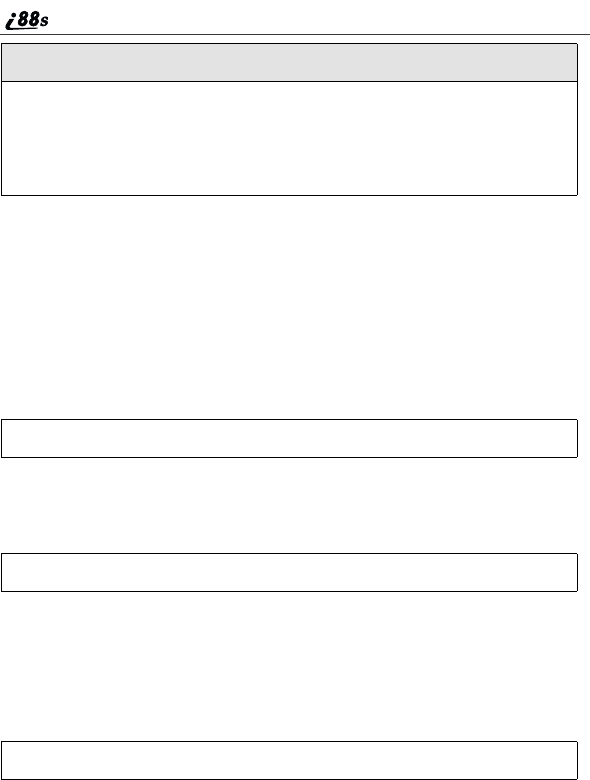
64
www.motorola.com/iden
NOTE: The values displayed by Call Timers should not be used for
billing. Call timers are estimates only.
Hands-Free Speakerphone
The i88sphone provides the convenience of a hands-free speakerphone for
holding impromptu meetings or placing safer phone calls. The speakerphone
option (SPEAKER) is available whenever you are on an active call.
To turn the speakerphone on:
While speakerphone is on, Spkrphone On appears in the text display area.
To turn the speakerphone off:
Mute
Use the Mute feature to listen to incoming audio without allowing sound from
your phone’s microphone to be transmitted over the phone line.
To turn mute on:
While mute is on, UNMUTE appears as a display option.
2
Press Bunder SELECT.
3
If the feature does not include an option to reset or you do not wish to
reset the option, press Aunder DONE when you are finished viewing.
To reset a feature, press Bunder RESET. When the confirmation
screen appears, press Aunder YES to confirm the reset.
While on an active call, press Bunder SPEAKER.
Press Bunder SPEAKER.
While on an active call, press Bunder MUTE.
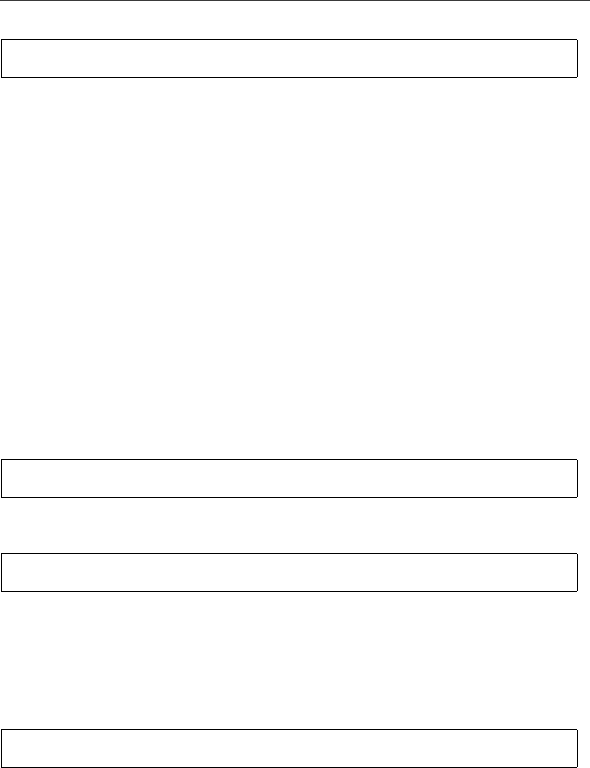
65
Call Waiting
To turn mute off:
Call Waiting
Call Waiting allows you to receive a second call while you are talking on the
phone. You can switch between calls so you never have to miss a call. By
default, Call Waiting is always on unless you turn it off for a specific call.
If you’re on a call and you receive a second call,
you will:
•hear a tone; and
•see a message on your display informing
you of another incoming call.
Accepting Calls
Switching Between Calls
When you accept a second call while you are talking on the phone, your display
shows the name or number of each call. An icon appears to the left of each name
or number indicating that the call on hold zor active D.
Press Bunder UNMUTE.
Press Bunder YES. The first call is placed on hold.
To end the active call and accept the second call, press e.
Press Bunder SWITCH to switch between calls.
e
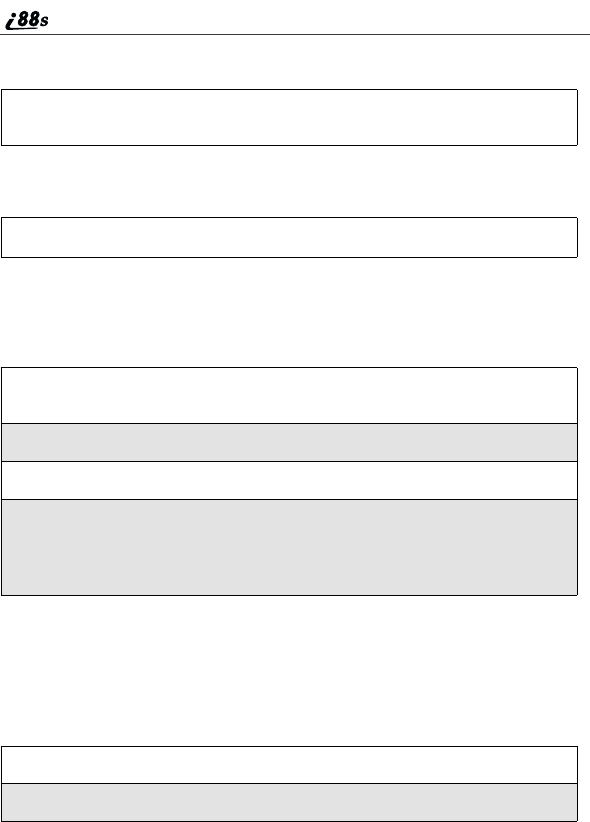
66
www.motorola.com/iden
Declining Calls
Ending the Active Call
Turning Off Call Waiting
If you do not want to be interrupted during a call, you can turn Call Waiting off
prior to making/receiving a call.
Call Hold
When you are on an active call, you can place the call on hold and make a
second call.
To place an active call on hold:
Press Aunder NO. If you subscribe to Voice Mail, the call will be
forwarded to your Voice Mail box.
Press e.
1
From the Ready screen, press m.PressRto scroll to Settings,and
press Bunder SELECT.
2
Press Rto scroll to In Call Setup and press Bunder SELECT.
3
Press Rto scroll to Call Waiting and press Bunder CHANGE.
4
Press Rto scroll to Off and press Bunder SELECT.
Call Waiting is now disabled for the next call. It will automatically reset
to On when you hang up.
1
Press mto access the Calls Menu.
2
Press Rto scroll to Hold.
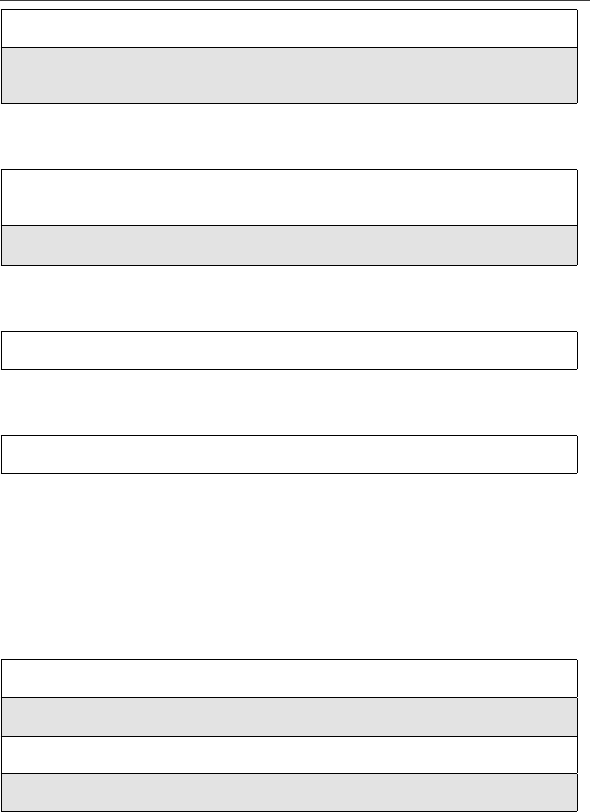
67
Three-Way Calling
To place a second call while the first call is on hold:
To toggle between the two calls:
To end the active call:
Three-Way Calling
Using Three-Way Calling, you can combine two ongoing phone calls into one
conversation. While on an active call, you can make a second call and combine
the two calls. When you place or receive a phone call, the 3-WAY option
appears in the bottom left-hand corner of the display screen.
To make a three-way call:
3
Press Bunder SELECT.
4
If you have not placed a second call, you can resume this call by
pressing Bunder RESUME.
1
Enter the second phone number you want to call. Or select the number
from your Phonebook by pressing mand selecting Phonebook.
2
Press sto place the second call.
Press Bunder SWITCH.
Press e. The call on hold becomes active.
1
Place or receive a phone call.
2
While in a call, press mto access Call Menu.
3
Press Rto scroll to 3-WAY.
4
Press Bunder SELECT. The first call will be placed on hold.
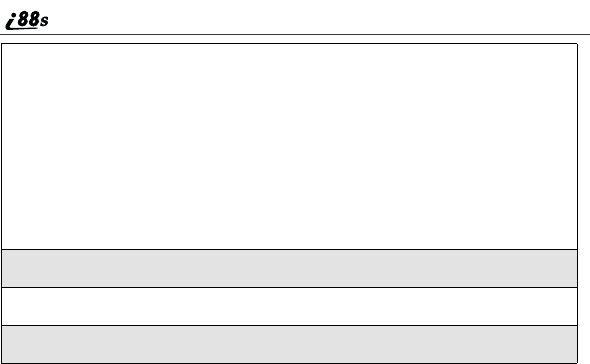
68
www.motorola.com/iden
Call Forwarding
Call Forwarding forwards calls to the number you designate. The following Call
Forwarding options are available:
•All Calls —When this option is turned on, all calls will be sent
automatically to a number you specify.
•Detailed —Choosing this option enables you to forward calls you missed
to different numbers, or to Voice Mail, depending on why you missed each
call:
•Busy —your phone is engaged in other activities.
•No Answer —you do not answer. The phone will ring 4 times before
forwarding the call.
•Unreachable —your phone is out of coverage or powered off.
You can forward Line 1 and Line 2 independently.
5
Enter the second phone number you want to call and press sto place
the second call.
Or, access the number from your Phonebook:
Press mandthenpressRto scroll to Phonebook.
Press Bunder SELECT.
To place the call, see “Making Calls from the Phonebook”on page 54.
6
After you reach the second individual, press m.
7
Press Rto scroll to 3-WAY.
8
Press Bunder SELECT. Both calls will appear on your display.
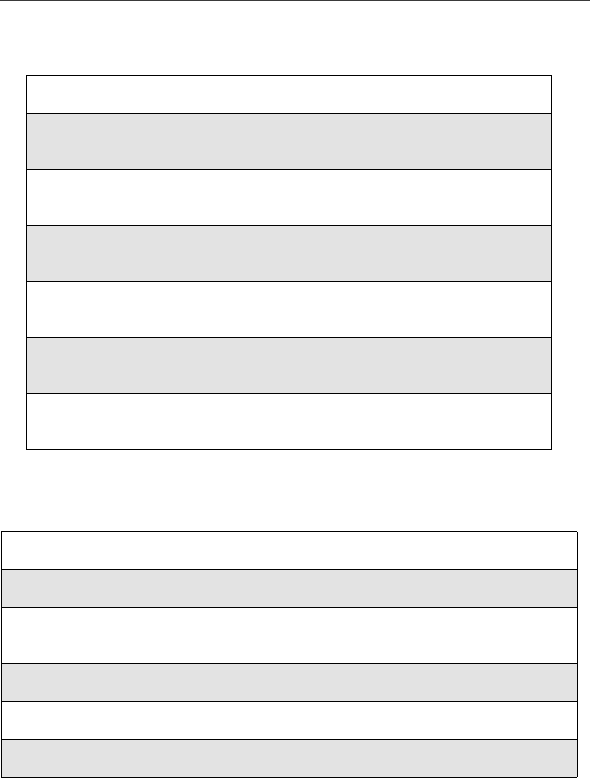
69
Call Forwarding
When your phone is set to forward all calls, one of the following icons appears
on the top row of your display screen to indicate the call forwarding option you
have chosen:
TurningOnCallForwarding
Icon Indicates...
GLine 1 is active; calls from Line 1 are being
forwarded.
HLine 1 is active; calls from Line 2 are being
forwarded.
ILine 1 is active; calls from Line 1 and Line
2 are being forwarded.
JLine 2 is active; calls from Line 1 are being
forwarded.
KLine 2 is active; calls from Line 2 are being
forwarded.
LLine 2 is active; calls from Line 1 and Line
2 are being forwarded.
1
Press mthen press Rto scroll to Call Forward.
2
Press Bunder SELECT.
3
At the Call Forward screen, the Forward field is highlighted. Press
Bunder CHANGE.
4
Press Sto scroll to All Calls.
5
Press Bunder SELECT.
6
Press Rto scroll to the To field and press Bunder CHANGE.
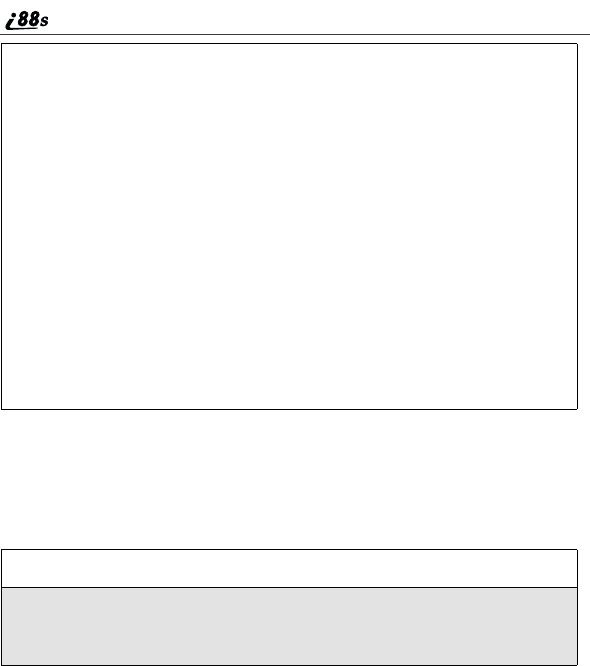
70
www.motorola.com/iden
Your calls will now be forwarded to the number that you selected.
Turning Off Call Forwarding
7
To activate a call forwarding number:
If you have never used Call Forwarding before, the Forward screen
appears. To enter a call forwarding number, type the number on your
phone’skeypadorpressBunder SEARCH to select from numbers
stored in your phone. Press Bunder OK.
Or,
If you have used Call Forwarding before, the call forwarding number
youlastusedisdisplayed.PressBunder CHANGE to access the
Forward screen.
To forward your calls to this number, press Bunder OK.
To forward your calls to a different number, press and hold Aunder
DELETE to erase the displayed number. Type the new number on your
phone’skeypadorpressBunder SEARCH to select from numbers
stored in your phone. Press Bunder OK.
1
Press mthen press Rto scroll to Call Forward.
2
Press Bunder SELECT.
The Call Forward screen displays with the Forward field highlighted.
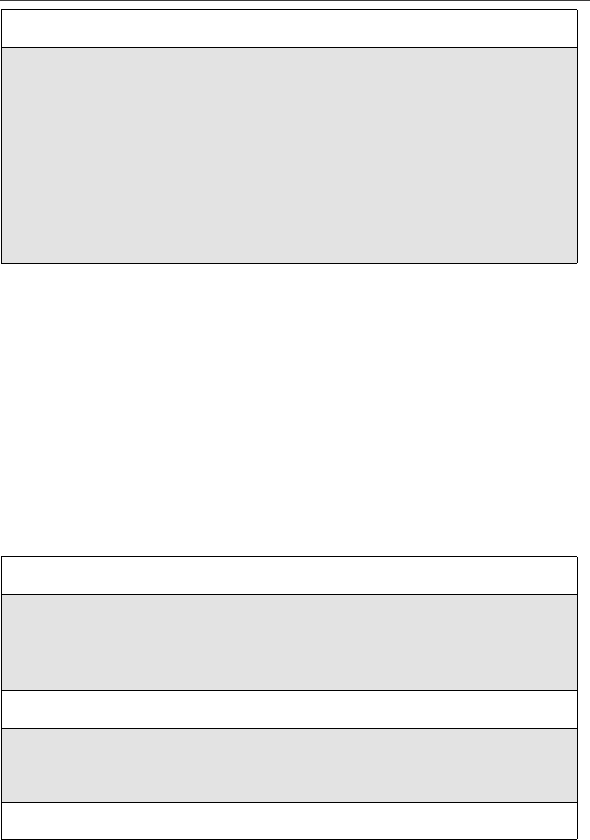
71
Call Forwarding
You will now receive all calls on your phone. When you are unavailable, your
calls will be forwarded according to your Detailed call forwarding settings. By
default, the Detailed option is set to forward your calls to Voice Mail.
SettingCallForwardingtoVoiceMail
In most cases, turning off Call Forwarding restores your ability to receive Voice
Mail messages when you are unavailable (see “Turning Off Call Forwarding”
on page 70). If you have completed those steps but are still not able to receive
Voice Mail messages, you can reset Call Forwarding to Voice Mail.
For you to receive Voice Mail messages, Call Forwarding must be set to
Detailed with your Voice Mail access number:
3
Press Rto scroll to the To field and press Bunder CHANGE.
4
Press Sto scroll to Off and press B
under SELECT.
1
Press mthen press Rto scroll to Call Forward.
2
Press Bunder SELECT.
The Call Forward screen displays with the Forward field set to
Detailed.
3
Press Rto scroll to the If Busy field and press Bunder CHANGE.
4
The call forwarding number you last used is displayed. Press Bunder
CHANGE. If this is your Voice Mail access number (the first six digits
of your 10-digit phone number followed by 6245), go to step 7.
5
Press and hold Aunder DELETE to erase the displayed number.
{
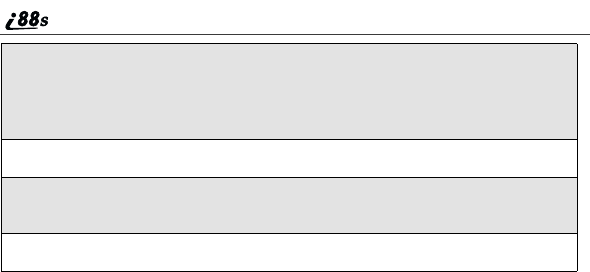
72
www.motorola.com/iden
6
Enter your Voice Mail access number.
Your Voice Mail access number is the first six digits of your 10-digit
phone number, followed by 6245. (For example 7035556245.)
7
Press Bunder OK.
8
Repeat step 3 through step 7 for the If No Answer field and the If
Unreachable field.
9
When finished, press Aunder EXIT.
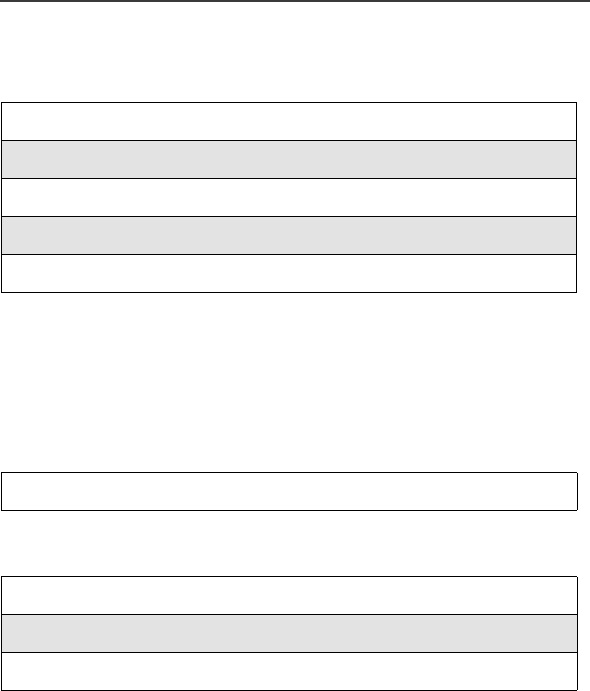
73
Messages
The main topics covered in this section are listed below:
Message Center
The Message Center enables you to access all messaging services through one
screen.
To access the Message Center:
If MESG is one of your display options:
If MESG is not one of your display options:
The Message Center screen displays the number of messages you have in each
message service —Voice Mail (Voice Mail), Text Msgs (Text and Numeric
Messages), and Net Alerts (Net Mail).
Message Center Page 73
Voic e Mail Page 74
Text and Numeric Messaging Page 76
Net Alert Page 78
Using Your Phone as a Modem Page 79
From the Ready screen, press Bunder MESG.
1
From the Ready screen, press m.
2
Press Rto scroll to Messages.
3
Press Bunder SELECT.
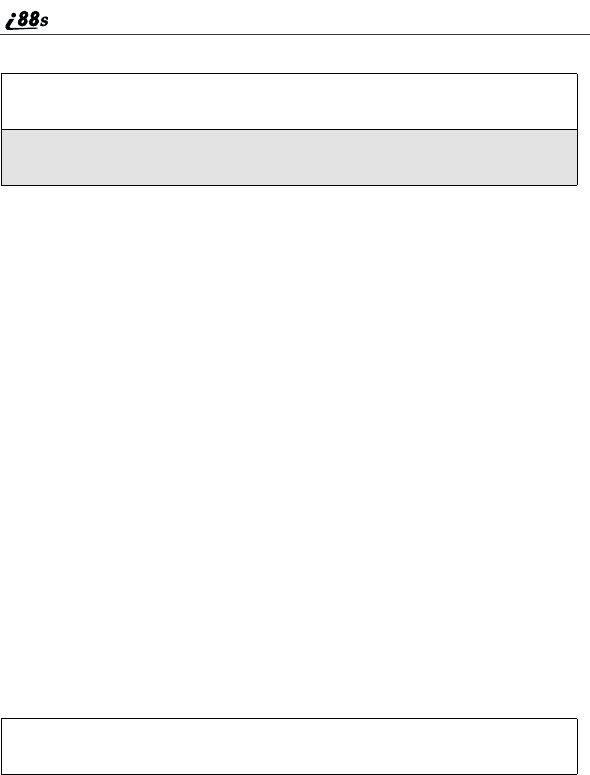
74
www.motorola.com/iden
To access any message service:
Voice Mail
New Message Indicators
When you receive a new message:
•New Voice Mail Message willdisplayonthescreen.
•Your phone will alert you every 30 seconds until you press Bunder
CALL or Aunder EXIT. (If you are on a call, your phone will alert you
once during the call.)
Transferring Calls to Voice Mail
1
From the Message Center screen, press Rto scroll to the message
service you want to access.
2
Press Bunder the display option on the right. This option varies
depending on the message service selected.
Press Aunder NO while your phone is ringing to transfer incoming
calls directly to Voice Mail.
f

75
Using Voice Mail
Using Voice Mail
Logging Into Voice Mail
1
From the Ready screen, press Bunder
MESG to open up the Message Center
screen.
2
Voice Mail should be highlighted to
indicate that it is selected. If it isn’t
highlighted, press Sto scroll to the Voice
Mail field.
The number of new messages and the total
number of messages are displayed.
3
Press Bunder CALL to log into your Carrier’s Voice Mail System.
Calling displays as you are connected to the network.
A
g

76
www.motorola.com/iden
Text and Numeric Messaging
With Text and Numeric Messaging, your i88sphone will:
•Allow text (alpha) messages up to 140 characters in length.
•Allow numeric messages up to 20 characters in length.
•Accept your messages even if you are unavailable, if your phone is turned
off, or if you are busy on another call.
•Alert you of a new text or numeric message, even if you are on another call.
•Store a message if you are making a Private or Group call and deliver it
upon completion of the call.
•Store the message if you are outside of the coverage area and deliver it as
soon as you are back in a coverage area.
•Attempt continuous delivery of messages until successful, for up to 7 days.
•Refer to text and numeric messages as Text Messages.
•Stamp the message with the time and date the message was left.
•Storeupto16messagesatatime,thatwillremainuntilyoudeletethem.
NOTE:“Mail Waiting, Memory Full”displays when 16 message
registers are full. (Messages must be erased before you can
receive others.)
•Allow for “Auto Call Back”of a phone number that is included within a
message, by pressing s. If the message contains two phone numbers, Auto
Call Back will dial the last number.
Notification of New Messages
When you receive a new message:
•New Text Message willdisplayonthescreen.
i
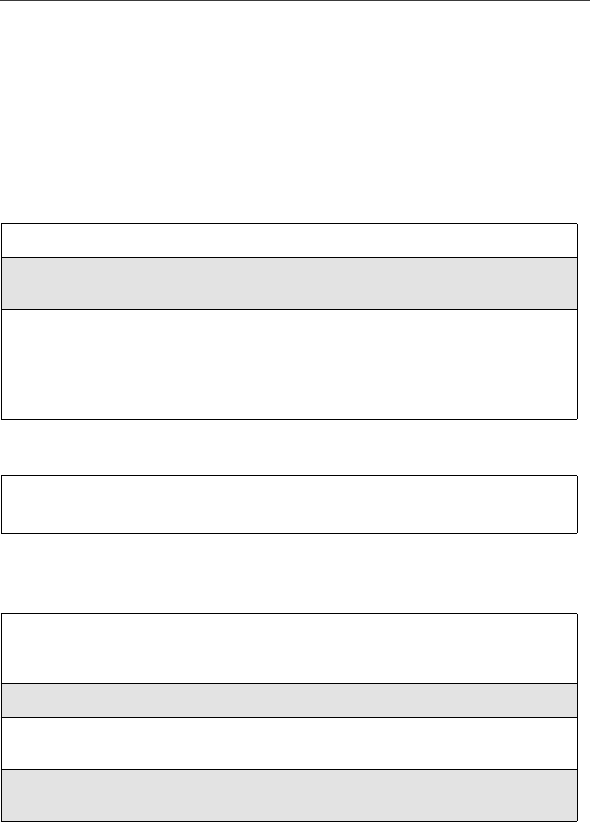
77
Text and Numeric Messaging
•Your phone will alert you every 30 seconds until you press Bunder
READ or Aunder EXIT. (If you are on a call, your phone will alert you
once during the call.)
Accessing New Messages
When you receive a message, you can view it immediately or later:
View a Message Immediately
Viewing a Message Later
Viewing Stored Messages
1
Press Bunder READ. The message displays.
2
If the message fills more than one screen, use Sto scroll through the
rest of the message.
3
Press Aunder SAVE to save the message.
Or,
Press Bunder DELETE to delete the message.
Press Aunder EXIT. The .icon will appear on the second line of the
Ready screen to remind you that you have a stored message.
1
In the Message Center screen, press Sto scroll down to Text Msgs.
The number of new messages and the total number of messages are
displayed.
2
Press Bunder SELECT. The Text Msg Inbox screen appears.
3
Press Sto scroll to the message you want to read and press Bunder
READ.
4
If the message fills more than one screen, use Sto scroll through the
rest of the message.

78
www.motorola.com/iden
Net Alert
NOTE: This feature may not be offered by your service provider.
With Net Alert, you can send text and numeric messages in any of three ways:
•from your i88sphone
•from a web site provided by your service provider
•from any email application
When you receive a new message:
•Words will display on your phone’s display screen indicating that you have
a Net Alert message. (The exact words displayed are determined by your
service provider.)
•Your phone will alert you every 30 seconds until your press Bto access
the message or Ato or exit the screen.
If you choose to exit the screen and view the message later, the .icon will
appear on the second line of the Ready screen to remind you that you have a
stored message.
You can view new or stored Net Alert messages at any time by access the
Message Center. For more information, see “Message Center”on page 73.
Using Your Phone as a Modem
NOTE: Some features may be network dependent or subscription only,
and may not be available in all areas. Contact your service
provider for more information.
You can use your i88sphone as a modem for data transfer from your laptop,
handheld device, or desktop computer. This is particularly useful when there is
no wired phone line (wall jack) available.
5
Press Aunder SAVE to save the message.
Or,
Press Bunder DELETE to delete the message.
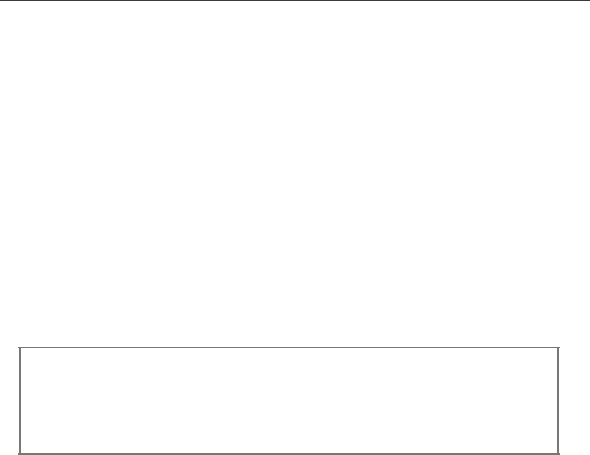
79
Using Your Phone as a Modem
You simply attach a data cable (available separately) to your phone and your
computer. From that point, your phone is your modem. This allows you to send
or receive time-critical information such as email, a field service report, or files.
In addition, you can also send or receive faxes.
This type of wireless connection uses one of two types of data connection:
circuit-switched data and packet data.
•Circuit-switched data is typically used for sending and receiving faxes and
for transferring large files.
•Packet data is used for small file transfers such as email.
To use these services, you must install the iDEN Wireless Data Services
software (available separately). For more information on setting up your
computer and your i88sphone for Packet and Circuit Data calls, see the
Wireless Data Services User’s Guide and contact your carrier.
TTY Users
You can use your phone and computer in TTY mode. Your computer
screen and keyboard replace the standard TTY device. For more
information, please see the Wireless Data Services User’s Guide.

80
www.motorola.com/iden
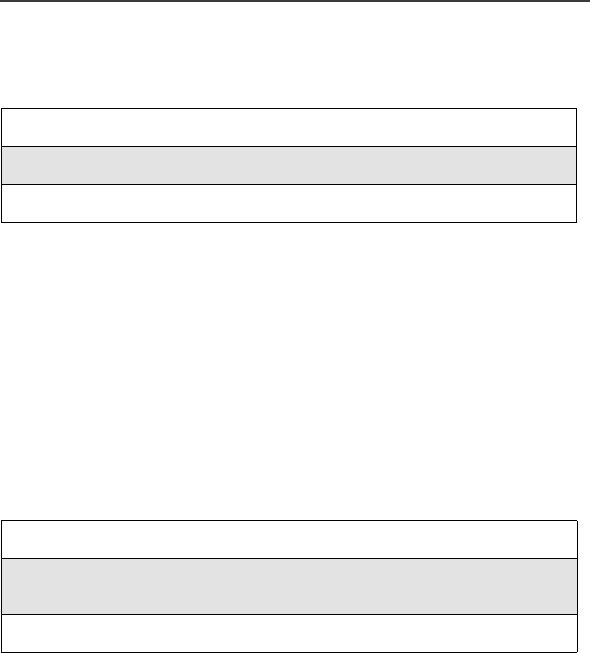
81
Private Calls
The main topics covered in this section are listed below:
Private Call
There are two ways to reach an individual using Private calls. You can enter the
person’s Private ID number then press the Push-To-Talk (PTT) button. Or, you
can store the person’s name and Private ID number, then recall the number from
your Phonebook. Whether you dial the person’s Private ID directly or store it in
your Phonebook, you must have the individual’s Private ID to use Private calls.
To learn how to store names and numbers, see “Phonebook”on page 39.
USER TIP: To find out your own Private ID number, see “My
Information”on page 24.
Making a Private Call from the Keypad
Private Call Page 81
Call Alerts Page 84
Group Call Page 88
1
Enter the Private ID of the person you are trying to call.
2
Press and hold the PTT button on the side of the phone. Begin talking
after the phone emits a chirping sound.
3
Release the PTT button to listen.
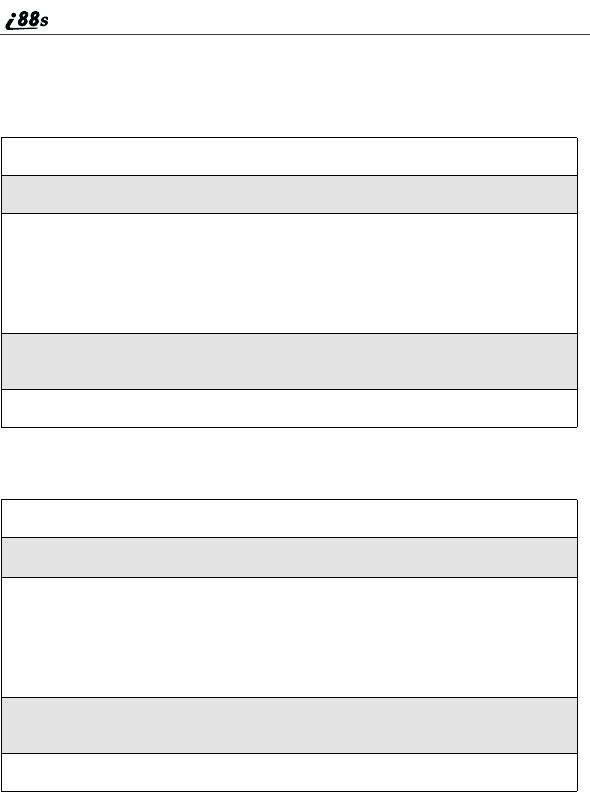
82
www.motorola.com/iden
Making a Private Call from the Phonebook
If you have stored a person’s Private ID in your Phonebook, you can use your
Phonebook to make a Private call to that person:
Making a Private Call from the Recent Call List
1
From the Ready screen, press m.
2
Press Rto scroll to the Phonebook.PressBunder SELECT.
3
From the Phonebook screen, press Sto scroll through the names until
the desired name is highlighted.
If more than one number is stored for an entry, press Tuntil
idisplays.
4
Press and hold the PTT button on the side of the phone. Begin talking
after the phone emits a chirping sound.
5
Release the PTT button to listen.
1
From the Ready screen, press m.
2
Press Rto scroll to the Recent Calls.PressBunder SELECT.
3
From the Recent Calls screen, press Sto scroll through the names and
numbers until the desired name or Private ID number is highlighted.
If more than one number is stored for an entry, press Tuntil
idisplays.
4
Press and hold the PTT button on the side of the phone. Begin talking
after the phone emits a chirping sound.
5
Release the PTT button to listen.
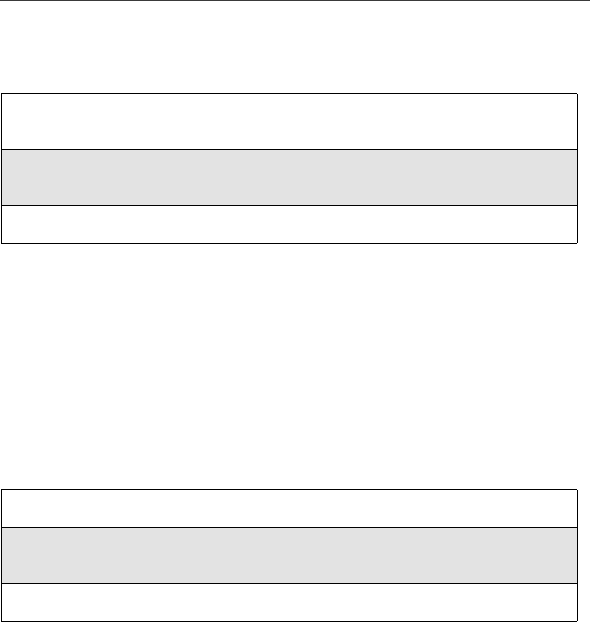
83
Private Call
Making Calls Using Voice-Activated Dialing
If you have recorded a voice name for a Private ID in your Phonebook (see
“Voice Names”on page 41), you can use this voice name to call the number.
USER TIP: If you have difficulty making phone calls using a voice
name, try assigning a longer voice name to the number. For
example, if the voice name “Joe”fails to place a call to Joe
Smith’s number, try assigning the voice name “Joe Smith”
to the number.
Receiving a Private Call
When you receive a Private call, your phone emits a chirping sound and Private
in Use appears on the screen. The Private ID or the name of the caller (if stored
in your Phonebook) displays. To respond to a Private Call:
Storing Private IDs
For information store Private ID numbers to your Phonebook, see “Adding
Phonebook Entries”on page 44.
For information on how to quickly store Private ID numbers, see “Storing Phone
Numbers and Private IDs Quickly”on page 48.
1
From the Ready screen, press and hold ton the side of your phone
until the Say Name Now screen appears.
2
Speaking into the microphone, say the voice name assigned to the
Private ID you want to call.
3
Your phone will play the name back to you. Press the PTT button.
1
Wait for the caller to finish speaking.
2
Press and hold the PTT button. Begin talking after the phone emits a
chirping sound.
3
Release the PTT button to listen.
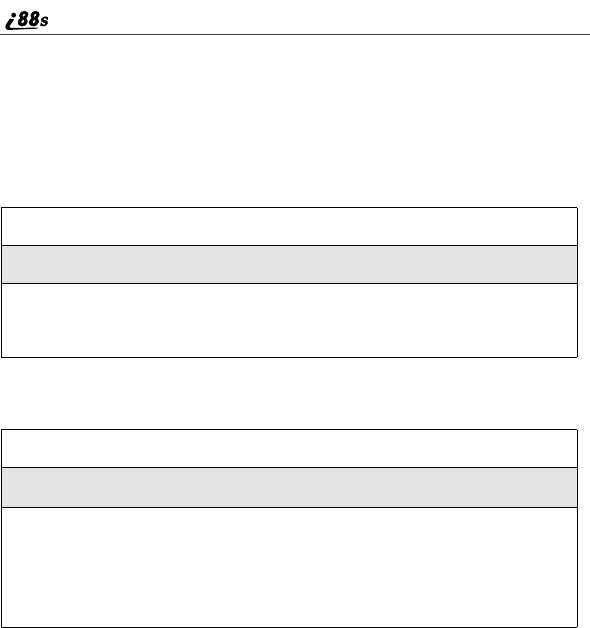
84
www.motorola.com/iden
Call Alerts
You can send a call alert, which lets recipients know that you would like to talk
with them. When you send an alert, the recipient will receive a series of beeps
and your name or Private ID will appear on the display.
Placing a Call Alert from the Keypad
Placing a Call Alert from the Phonebook
1
Enter the Private ID of the person you want to call.
2
Press Bunder ALERT. The ReadytoAlertscreen displays.
3
Press and hold the PTT button until Alert Successful displays. The alert
sounds intermittently until the user of the phone answers, queues, or
clears the alert.
1
From the Ready screen, press m.
2
Press Rto scroll down to Phonebook.PressBunder SELECT.
3
From the Phonebook screen, press Sto scroll to the Phonebook entry
for the person you want to alert.
If more than one number is stored for an entry, press Tuntil
idisplays.
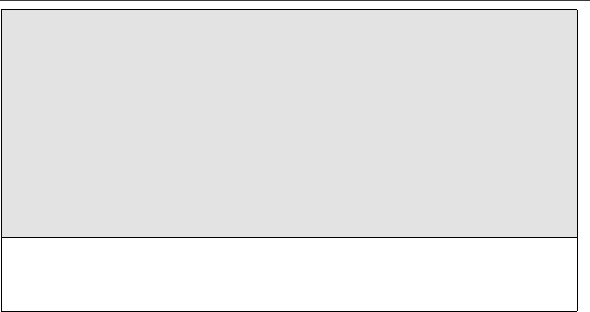
85
Call Alerts
Ready to Alert Screen
ReadytoAlertis used to confirm your request for the alert and to prompt you
to push the PTT button:
•If you press the PTT button, the call alert is sent, and the phone displays the
Recent Calls screen.
•For call alerts placed from the keypad, pressing Aunder CANCEL causes
the phone to return to the Dial screen with the previously entered number
displayed.
•For call alerts placed from the Phonebook, pressing Aunder CANCEL
causes the phone to return to the Phonebook screen.
•If you do nothing, the phone will revert to the Ready screen.
Receiving Call Alerts
When you receive a call alert, your phone emits a chirp and displays the name or
number of the caller. You can answer, queue, or clear the call alert:
•To answer a call alert, press the PTT button.
•To queue a call alert, press Bunder QUEUE.
•To clear the call alert, press Aunder CLEAR.
NOTE: Until you answer, queue or clear the Call Alert, you will not
receive any additional phone, Private or Talkgroup Calls.
4
Press Bunder ALERT. The Ready to
Alert screen appears.
5
Press and hold the PTT button until Alert Successful displays. The alert
sounds intermittently until the user of the phone answers, queues, or
clears the alert.
V
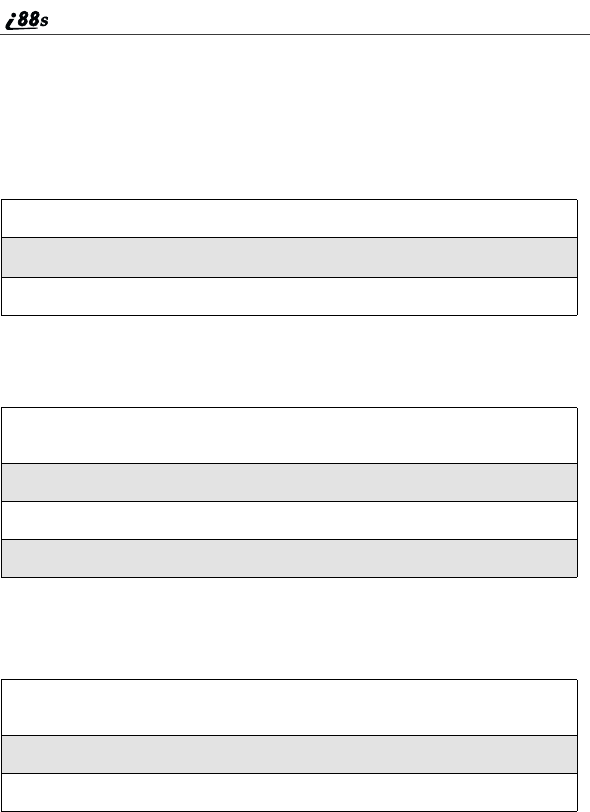
86
www.motorola.com/iden
Call Alert Queue
Call alert queuing enables you to save call alerts in a list, or queue. To store a
call alert in the call alert queue, press Bunder QUEUE when you have
received an incoming call alert.
Accessing the Call Alert Queue
Viewing Call Alert Date and Time
Tofindoutthedateandtimeacallalertwasreceived:
Sorting Call Alerts
To sort your call alerts by the order they were received:
1
From the Ready screen, press m.
2
Press Rto scroll to Call Alert.
3
Press Bunder SELECT. The Call Alert Queue screen displays.
1
From the Call Alert Queue screen, press Sto scroll to the desired call
alert.
2
Press mto access Call Alert Menu.
3
Press Rto scroll to View.
4
Press Bunder SELECT.
1
From the Call Alert Queue screen, press mto access Call Alert
Menu.
2
Press Sto scroll to Sort By.
3
Press Bunder SELECT.
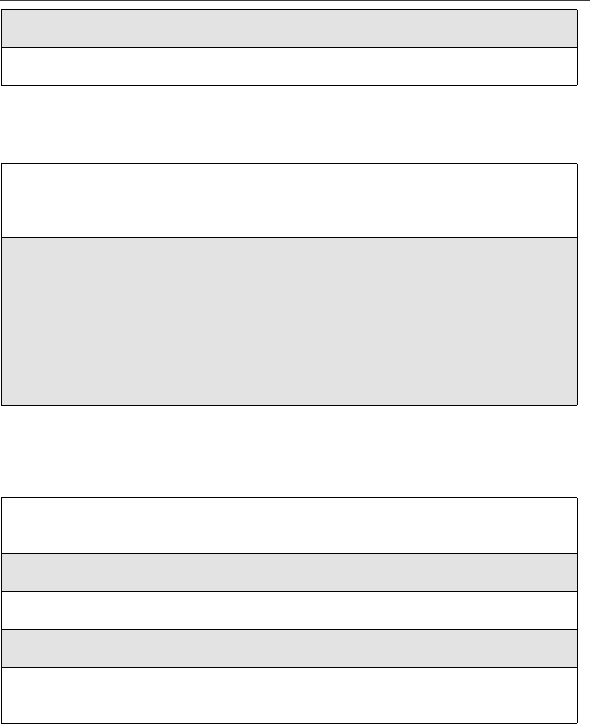
87
Call Alerts
Responding to a Call Alert From the Queue
Deleting a Call Alert From the Queue
To delete a call alert from the queue:
4
Press Sto scroll to First on Top or Last on Top.
5
Press Bunder SELECT.
1
From the Call Alert Queue screen, press Sto scroll to the call alert
you want to respond to. You can respond by sending a call alert or
placing a Private call.
2
To send a call alert, press Bunder ALERT and then press the PTT
button.
Or,
To place a Private call, press the PTT button.
The call alert will be removed from the queue.
1
From the Call Alert Queue screen, press Sto scroll to the entry you
want to delete.
2
Press mto access Call Alert Menu.
3
Press Rto scroll to Delete.
4
Press Bto SELECT.
5
When the confirmation screen appears, press Bunder YES to delete
allcallalerts.
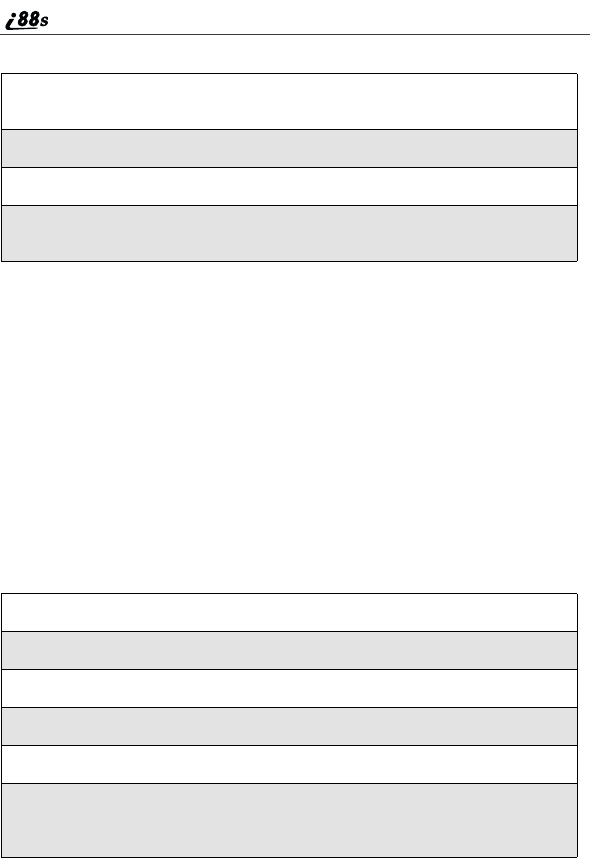
88
www.motorola.com/iden
To delete all call alerts from the queue:
Group Call
In a Group call, you can communicate instantly with a group of people that you
have previously set up as a Talkgroup.
Your sales representative must set up your Talkgroups by providing you with a
Talkgroup number for each Talkgroup. After you have the number, you can
assign each Talkgroup number a name and store it in your phone (see “Naming a
Talkgroup”on page 88). Your phone can store up to 30 Talkgroups.
You can make calls to any of the Talkgroups in your Phonebook at any time.
However, to receive calls from a Talkgroup, you must first join that Talkgroup
(see “Joining a Talkgroup”on page 90.)
Naming a Talkgroup
1
From the Call Alert Queue screen, press mto access Call Alert
Menu.
2
Press Rto scroll to Delete All.
3
Press Bto SELECT.
4
When the confirmation screen appears, press Bunder YES to delete
the entry.
1
From the Ready screen, press m.
2
Press Rto scroll to Phonebook.
3
Press Bunder SELECT.
4
Press Sto scroll to New Entry.
5
Press Bunder SELECT. The Entry Details screen displays.
6
Enter the information as you would any other Phonebook entry. (See
“Adding Phonebook Entries”on page 44.) When you get to Type,make
sure that you select Talkgroup.
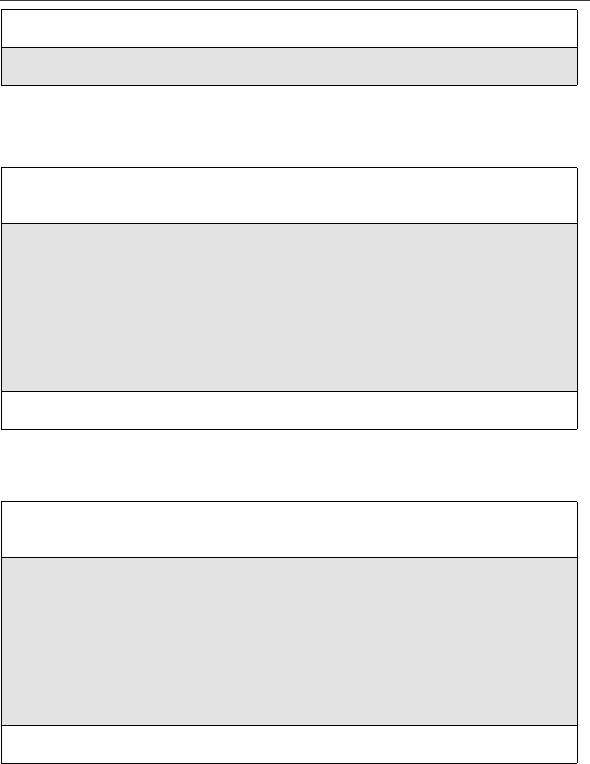
89
Group Call
Making a Group Call from the Keypad
Making a Group Call from the Phonebook
7
Enter the Talkgroup name or number.
8
When you have completed the Entry Details,pressAunder DONE.
1
Press #and then enter the Talkgroup number of the group that you
want to call.
2
Press and hold the PTT button on the side of the phone, wait for your
phone to emit a chirping sound, and speak.
The phones of individuals in the Talkgroup may emit a chirping sound
to alert them that someone is calling, or may simply emit the sound of
your voice when you start speaking. If a phone receiving a Group call
has Speakerphone set to On (see “Hands-Free Speakerphone”on page
64), it will not emit a chirping sound before your voice.
3
Release the PTT button to listen.
1
From the Phonebook screen, press Rto scroll to the name of the
Talkgroup you want to call.
2
Press and hold the PTT button on the side of the phone, wait for your
phone to emit a chirping sound, and speak.
The phones of individuals in the Talkgroup may emit a chirping sound
to alert them that someone is calling, or may simply emit the sound of
your voice when you start speaking. If a phone receiving a Group call
has Speakerphone set to On (see “Hands-Free Speakerphone”on page
64), it will not emit a chirping sound before your voice.
3
Release the PTT button to listen.
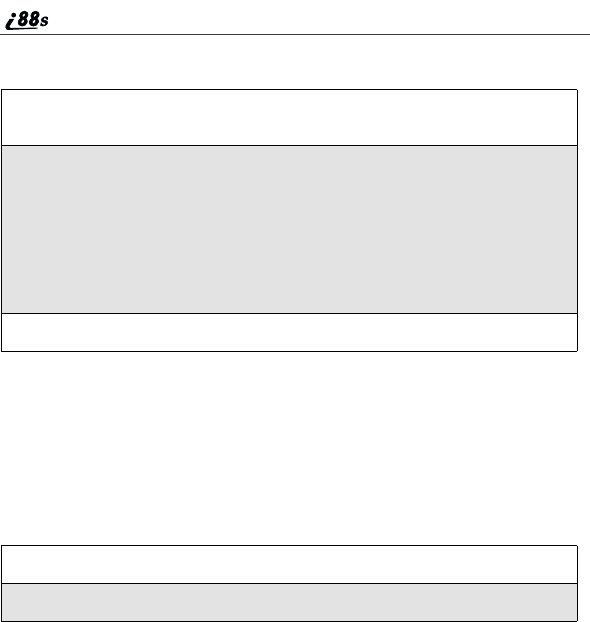
90
www.motorola.com/iden
Making a Group Call from the Recent Calls List
Receiving a Group Call
When you receive an incoming Group call, your phone may emit a chirping
sound followed by the voice of the person calling, or may simply emit the voice
of the personal calling. If you have Speakerphone set to On (see “Hands-Free
Speakerphone”on page 64) your phone will not chirp when you receive a Group
call; you will simply hear the caller’s voice.
To respond to a Group call:
Joining a Talkgroup
To receive Group calls from a Talkgroup, you must first join the Talkgroup.
You may only belong to one Talkgroup at a time. When you join a new
Talkgroup, you no longer belong to your previous Talkgroup.
1
From the Recent Calls screen, press Rto scroll to the name of the
Talkgroup you want to call.
2
Press and hold the PTT button on the side of the phone, wait for your
phone to emit a chirping sound, and speak.
The phones of individuals in the Talkgroup may emit a chirping sound
to alert them that someone is calling, or may simply emit the sound of
your voice when you start speaking. If a phone receiving a Group call
has Speakerphone set to On (see “Hands-Free Speakerphone”on page
64), it will not emit a chirping sound before your voice.
3
Release the PTT button to listen.
1
Wait for the caller to finish speaking.
2
Press and hold the PTT button to talk. Release the PTT button to listen.
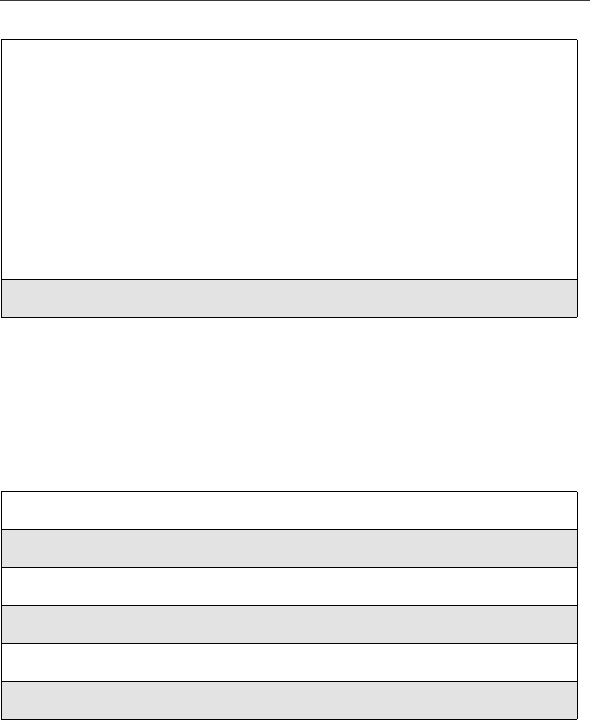
91
Group Call
To join an ongoing Talkgroup:
Group-Silent Programming
Group-Silent programming enables you to silence incoming Group alerts and
voice communication.
Turning Group-Silent On or Off
1
Using the keypad, press #then enter the Talkgroup number.
Or,
From the Phonebook screen, press Rto scroll to the name of the
Talkgroup you want to call.
Or,
If the Talkgroup you want to join is on your Recent Call list, go to the
Recent Call screen and press Rto scroll to the name of the Talkgroup
youwanttocall.
2
Press Bunder JOIN.
1
From the Ready screen, press m.
2
Press Rto scroll to Settings.PressBunder SELECT.
3
Press Rto scroll to Tkgrp Settings.PressBunder SELECT.
4
With the Silent field highlighted, press Bunder CHANGE.
5
Press Sto scroll to On or Off.
6
Press Bunder SELECT.

92
www.motorola.com/iden
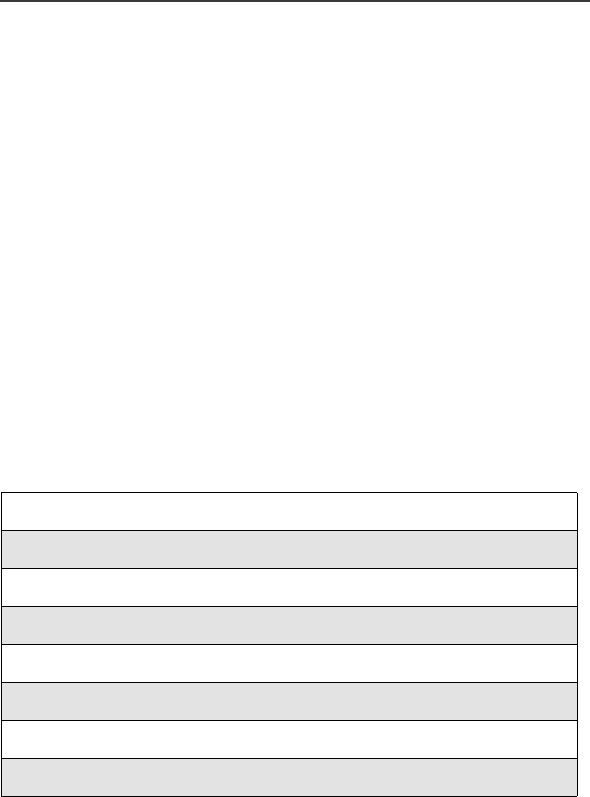
93
GPS Enabled
Your phone’s GPS Enabled feature uses information from Global Positioning
System (GPS) satellites orbiting the Earth to determine the approximate
geographical location of your phone, expressed as latitude and longitude. The
availability and accuracy of this location information (and the amount of time
that it takes to calculate it) will vary depending on the environment in which you
are using the GPS feature. For example, GPS location fixes are often difficult to
obtain indoors, in covered locations, between high buildings, or in other
situations where you have not established a clear broad view of the sky. SEE:
“IMPORTANT: Things to Keep in Mind”on page 94.
When you make a 911 emergency call, the phone’s GPS feature can help
emergency personnel locate you if your phone has adequate access to GPS
satellite signals and your emergency response center is equipped to process such
information.
You can also use the GPS feature to view your approximate location. Location
information appears on your phone’s display screen.
Java applications loaded on your phone can also request your location. If your
phone is connected to a laptop computer or similar device, software running on
that device can request your location. To protect your privacy, you can control
whether these requests are granted.
This section includes:
IMPORTANT:ThingstoKeepinMind Page94
Making an Emergency Call Page 95
Accessing the GPS Menu Page 96
Viewing Your Approximate Location Page 96
Enhancing GPS Performance Page 98
Updating Satellite Almanac Data Page 98
Setting Privacy Options Page 99
Using GPS with Map Software Page 101

94
www.motorola.com/iden
IMPORTANT: Things to Keep in Mind
If you are using your phone’s GPS feature while driving, please give full
attentiontodrivingandtotheroa
d.
Where adequate signals from multiple satellites are not available (usually
because your GPS antenna cannot establish a view of a wide area of open sky),
the GPS feature of your phone WILL NOT WORK. Such situations include
butarenotlimitedto:
•In underground locations.
•Inside of buildings, trains, or other covered vehicles.
•Under any other metal or concrete roof or structure.
•Between tall buildings or under dense tree-cover.
•Near a powerful radio or television tower.
•When your GPS antenna is covered (for example, by your hand or
other object) or facing the ground.
•Temperature extremes outside the operating limits of the phone.
Walking or driving very slowly may also substantially reduce GPS
performance.
Even where location information can be calculated in such situations, it
may take much longer to do so, and your location estimate may not be as
accurate. Therefore, in any 911 call, always report the location to the
emergency response center if you can and if you cannot, remain on the
phone for as long as the emergency response center instructs you.
Even where adequate signals from multiple satellites are available, your
GPS feature will only provide an approximate location, often within 150
feet (45 meters) but sometimes much further from your actual location.
Advice on how to improve GPS performance is provided in “Enhancing
GPS Performance”on page 98.
While the GPS feature of your phone can be a valuable navigational aid, it does
not replace the need for careful navigating and good judgment. Never rely
solely on one device for navigation. Remember that the accuracy of the
location information and the time needed to obtain it will vary depending on
circumstances, particularly the ability to receive signals from adequate numbers
of satellites.
On emergency calls, your phone uses assistance information from the phone
network to improve the speed and accuracy of the phone’s location calculation:
if such assistance information becomes unavailable, it may reduce the speed and
accuracy of the location calculation.

95
Making an Emergency Call
The satellites used by your phone’s GPS feature are controlled by the U.S.
government and are subject to changes implemented in accordance with the
Department of Defense GPS user policy and the Federal Radionavigation Plan.
These changes may affect the performance of your phone’sGPSfeature.
Making an Emergency Call
Dial 911 to be connected to an emergency response center. If you are on an
active call, you must end it before calling 911.
When you make an emergency 911 call, your phone’s GPS feature begins to
seek information to calculate your approximate location. It will take your
phone’s GPS feature some time to determine your approximate location.
Even where your phone has good access to sufficient GPS satellite signals and
network assist data, it may take 30 seconds or more to determine the
approximate location. This time will increase where there is reduced access to
satellite signals. When your approximate location is determined, it is made
available to the appropriate emergency response center.
In some cases, your local 911 emergency response center may not be
equipped to receive GPS location information. For this reason, and because
the GPS location information reported is only approximate or may not be
available in your location (see “IMPORTANT: Things to Keep in Mind”on
page 94), always report your location to the 911 operator you speak to when
making an emergency call, if able, just as you would when using a phone
without GPS capabilities.
NOTE: If you are concerned about whether your local 911 emergency
response center is equipped to receive GPS location
information, contact your local authorities.
In general, if your phone has access to signals from more GPS satellites, your
location will be determined faster and more accurately than if your phone has
access to signals from fewer GPS satellites.
If your phone does not have adequate access to GPS satellites signals, the
location of the nearest cell tower in contact with your phone is automatically
made available to emergency response center, if the center has the capability to
receive such information.
See “Enhancing GPS Performance”on page 98 for information on how to help
your phone determine your location.
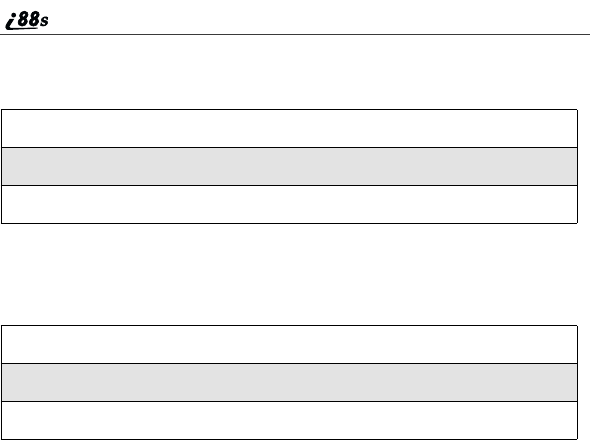
96
www.motorola.com/iden
Accessing the GPS Menu
To access the GPS menu:
Viewing Your Approximate Location
To view your location:
This displays the following information about the last time your location was
calculated:
•the time (as Greenwich Mean Time) and date that the location was last
calculated.
•the approximate location, expressed as latitude and longitude.
•the estimated accuracy of the calculated location. This estimate of accuracy
is only a very rough estimate and may vary substantially from the actual
accuracy of the approximate location information reported.
1
From the Ready screen, press m.
2
Press Rto scroll to GPS.
3
Press Bunder SELECT.
1
From the GPS screen, press Rto scroll to Position.
2
Press Bunder SELECT.
3
To view the entire displayed screen, press Sto scroll.

97
Viewing Your Approximate Location
•the number of satellites used to calculate the location. In general, more
satellites make for better accuracy.
To calculate your location again:
It may take your phone several minutes to complete the process of determining
your location. During this time, a message usually displays on your phone’s
screen saying your phone is scanning for satellites. For tips on getting the best
location calculation, see “Enhancing GPS Performance”on page 98.
The Position screen displays the updated information.
To cancel a location calculation before it is completed:
Each time your phone’s approximate location is calculated, the latest location
information is stored in your phone and remains there even when your phone is
powered off. You will see this information the next time you view the Position
screen.
If you received a phone call or alert while attempting to determine your phone’s
location, the Position screen will disappear, but your phone will continue
attempting to determine its location. If it is successful, the new location
information will be displayed the next time you view the Position screen.
Press Bunder RFRSH.
Press Bunder CANCEL to return to the Position screen.
Or,
Press eto return to the Ready screen.
mn
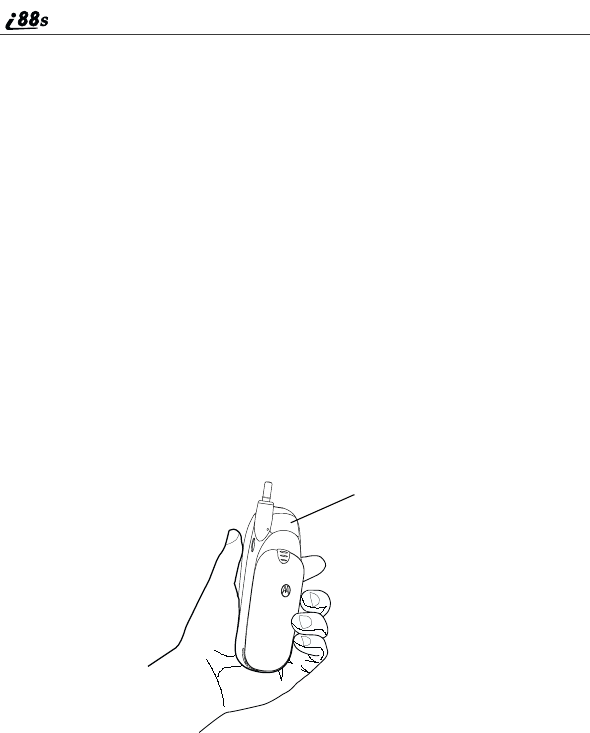
98
www.motorola.com/iden
Enhancing GPS Performance
Sometimes your phone’s GPS feature may be unable to complete a location
calculation successfully. If this happens when you are making an emergency
call, the location of the nearest cell tower in contact with your phone is made
available to the appropriate emergency response center if the center has the
capability to receive such information. If this happens when you are trying to
view your location on your phone’s screen, you will see a message indicating
that your phone cannot access satellites.
To improve accuracy and increase your chances of a successful calculation, do
the following while your phone is determining your approximate location:
•Stay in the open. TheGPSfeatureworksbestwherethereisnothing
between your phone and a large amount of open sky. If possible, go
outside, away from tall buildings and foliage. While performance in a
building is improved by moving closer to windows, glass with certain sun
shielding films may block satellite signals.
•Hold the phone to enhance reception. Signals from GPS satellites are
transmitted to your GPS antenna, which is inside the back of your phone,
opposite the earpiece, behind the label with your service provider’sname
on it. Hold your phone away from your body, giving the antenna clear
access to satellite signals. Do not cover the antenna area with your fingers
or anything else.
•Stand still. If possible, stand still until your phone is finished determining
your location. Moving the phone at a walking pace while the phone is
calculating your approximate location may substantially decrease GPS
performance.
GPS antenna area

99
Updating Satellite Almanac Data
•In a car. When using the GPS Enabled feature in a car, position the phone
so that the GPS antenna has good access to GPS signals through the car’s
windows. Typically, the GPS antenna has best access to GPS signals in a
car when placed near a window.
NOTE: Although moving the phone at a walking pace decreases GPS
performance, moving it at the speed of a moving car does not.
•Stay in network coverage. Depending on who your service provider is,
the network will provide your phone with information that helps determine
your location more quickly and accurately.
Updating Satellite Almanac Data
Another way to keep your phone’s GPS feature working well is to keep your
satellite almanac data up to date.
The United States government maintains an almanac of data about where GPS
satellites are as they orbit the Earth. This information is available to your phone.
Keeping your satellite almanac up to date helps your phone determine your
location more quickly.
The almanac contains information about the precise location of satellites, their
operational status, and other satellite information. Keeping this information
updated enhances the performance of your GPS feature. In most cases, your
phone will be able to get a fix in strong satellite signal conditions with outdated
almanac data, but it may take longer.
NOTE: When you make an emergency call, your phone does not rely
upon the almanac to determine your location.
If your satellite almanac data is out of date, your phone may prompt you to
update it. Follow the instructions that appear on your phone’s display screen.
Youmaybeaskedtogotoawebsiteorcallacustomercarenumber.
Setting Privacy Options
Your phone’s GPS privacy options control whether Java applications on your
phone or other software applications may view your phone’s location.You may
set your phone to one of three GPS privacy options:
•Restricted —No Java or similar software applications may view your
phone’s location. However, location information may still be available to
the phone’s owner, fleet manager, or account administrator.
•Unrestricted —All applications may view your phone’s location, without
notifying you.
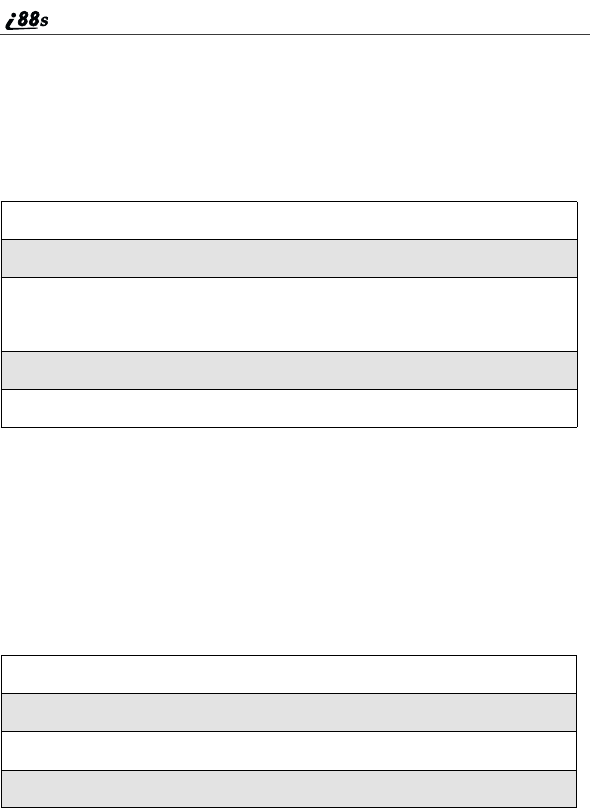
100
www.motorola.com/iden
•By Permission —When an application attempts to view your phone’s
location, you will be prompted to give permission. However, location
information may still be available to the phone’s owner, fleet manager, or
account administrator.
NOTE: Privacy options do not apply to the transmission of location
information during emergency 911 calls.
To set your GPS privacy options:
Setting the GPS PIN Security Feature
To prevent your GPS privacy settings from being altered without your
knowledge, your GPS privacy option can be protected by a PIN.
When you receive your phone, the GPS security feature is turned off, so you do
not have to enter a GPS PIN to access your GPS privacy options. If you turn this
feature on, you will be required to enter a GPS PIN to access your GPS privacy
options.
To turn the GPS Enabled security feature on or off:
1
From the GPS screen, press Rto scroll to Privacy.
2
Press Bunder SELECT.
3
If your GPS PIN security feature is enabled, enter your GPS PIN. (See
“Setting the GPS PIN Security Feature”on page 100 for more
information.)
4
Press Sto scroll to the privacy setting you want.
5
Press Bunder SELECT.
1
At the Ready screen, press mandthenpressRto scroll to Settings.
2
Press Bunder SELECT.
3
Press Rto scroll to Security and press Bunder SELECT.
4
Press Rto scroll to GPS PIN and press Bunder SELECT.
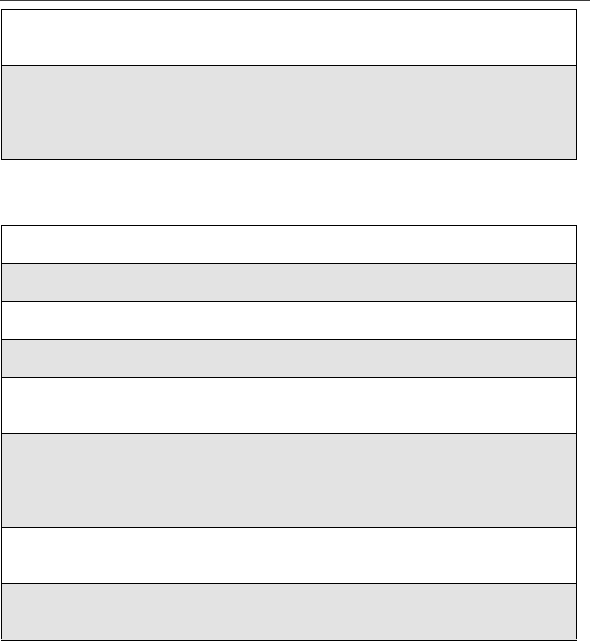
101
UsingGPSwithMapSoftware
To change your GPS PIN:
Using GPS with Map Software
You can use your phone’s GPS feature to provide approximate location data to a
laptop computer or similar device that is running interactive map software such
as that made by DeLorme or Microsoft. This way, if your phone has good access
to GPS signals, your approximate position on a map can be made available as
you as you travel in a vehicle.
5
Press Rto scroll to On or Off.On enables the GPS PIN requirement;
Off disables the GPS PIN requirement. Press Bunder SELECT.
6
At the Verify GPS PIN Code screen, enter the current GPS PIN and
press Bunder OK.
NOTE:When you receive your phone, your GPS PIN is 0000.
1
At the Ready screen, press mandthenpressRto scroll to Settings.
2
Press Bunder SELECT.
3
Press Rto scroll to Security and press Bunder SELECT.
4
Press Rto scroll to New Passwords and press Bunder SELECT.
5
At the New Passwords screen, press Rto scroll to GPS PIN and press
Bunder SELECT.
6
At the Enter Old GPS PIN Code screen, enter the current GPS PIN
and press Bunder OK.
NOTE:When your receive your phone, your GPS PIN is 0000.
7
At the Enter New GPS PIN Code screen, enter the new 4- to 8-digit
GPS PIN and press Bunder OK.
8
At the Re-enter New GPS PIN Code screen, re-enter the new GPS PIN
to confirm, and press Bunder OK.
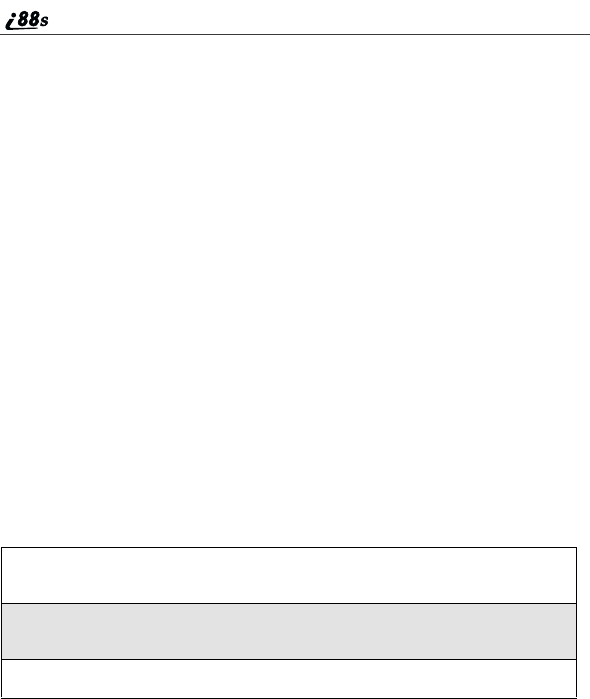
102
www.motorola.com/iden
To do this, connect your phone to your laptop (or other device) with a data cable
and set your phone to transmit data (see “Getting Started”on page 102). Your
phone then provides your approximate location to the device running the map
software, which displays your location on a map. Your phone provides an
updated location every second and the map software displays your changing
location on its map.
See “Enhancing GPS Performance”on page 98 for more details on obtaining
good location information.
NOTE: Because your phone is continuously determining your location,
using your phone’s GPS feature with map software uses your
phone’s battery power quickly.
Software Compatibility
Your phone sends location information to your laptop or other device using the
standard National Marine Electronics Association (NMEA) format. Your phone
supports output messages in NMEA-0183 format and supports the following
NMEA-0183 sentences: GGA, GLL, GSA, GSV, RMC, and VTG.
The map software running on your laptop or other device must support
NMEA 3.0.
Getting Started
To connect your phone to your laptop or other device:
Ensure the COM port settings of your laptop or other device are set to the
following:
•Bits per second: 4800
•Data bits: 8
•Parity: None
•Stop bits: 1
1
Hold the phone with its keypad facing up and hold the data cable’s
connector with the Motorola logo facing you.
2
Insertthedatacable’s connector into the right side of the accessory
connector at the bottom of the phone, until you hear a click.
3
Insert the data plug into the COM port of your laptop or other device.
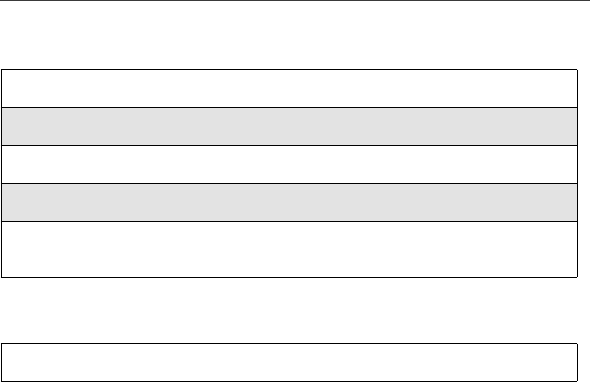
103
UsingGPSwithMapSoftware
•Flow control: Hardware
To set your phone to send location information to your laptop or other device:
To stop your phone from sending location data to your laptop or other device:
Each time you power your phone on, Interface is automatically set to Off.
Getting the Best Location Information
This feature works best when used while traveling at the typical speed of a
motor vehicle. If your vehicle is moving very slowly, your phone may not be
able to determine your location as quickly or as accurately.
See “Enhancing GPS Performance”on page 98 for more details on obtaining
good location information.
1
From the GPS screen, press Rto scroll to Interface.
2
Press Bunder SELECT.
3
Press Bunder CHANGE.
4
Press Sto scroll to On.
5
Press Bunder SELECT. Your phone is now sending location data to
your laptop or other device.
Set Interface to Off and press Bunder SELECT.

104
www.motorola.com/iden
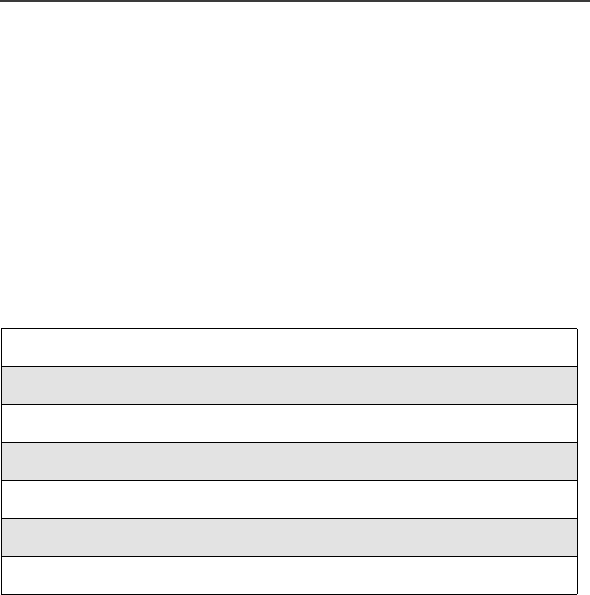
105
Datebook
The Datebook is a calendar in your i88sphone that enables you to schedule and
organize events, such as appointments and meetings. Schedules can be created
and viewed for specific days, and reminder alarms can be set so that you never
miss important events.
You can view upcoming events by week or by day. The Datebook stores and
manages 250 events over a 13-month period (12 months ahead and 1 month
back).
NOTE: The time and date format and the year used in Datebook can be
set by you. Before using Datebook for the first time, ensure that
the current year is correct. See “Initial Setup”on page 142 for
more information.
This section includes:
Datebook Icons Page 106
Viewing Your Datebook Page 106
About Datebook Events Page 108
Adding New Events Page 109
Editing Events Page 113
Deleting Events Page 113
Datebook Event Reminders Page 114
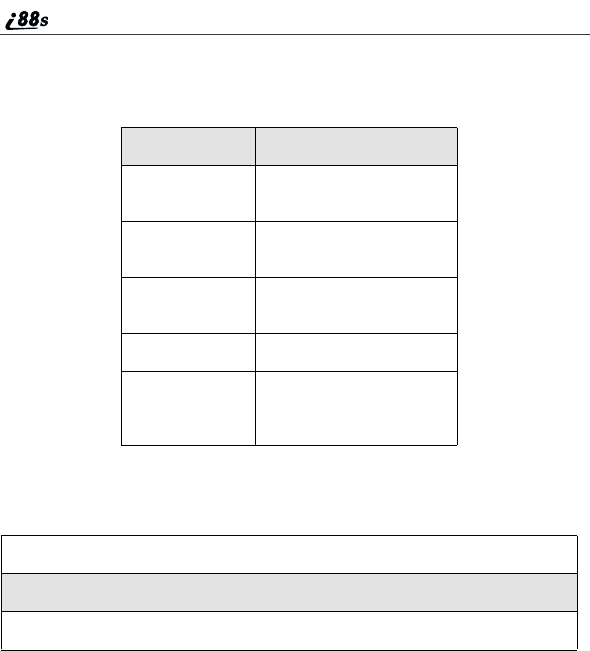
106
www.motorola.com/iden
Datebook Icons
There are several icons commonly used in the Datebook application:
Viewing Your Datebook
To access your Datebook:
Information in your Datebook can be viewed in three ways: by the week, by the
day, or by the event.
This information is structured hierarchically. When you access the Datebook, it
displays the current week. You can select a day to view and display the events of
that day. When the events of a day are displayed, you can select an event to view
and display details of that event.
Symbol Description
CEventwithoutastart/
end time
fMore options are
available
jRecurring
Appointment
IDatebook Alarm
GUsed to move through
fields when setting a
time and date.
1
From the Ready screen, press m.
2
Press Rto scroll to Datebook.
3
Press Bunder SELECT.

107
Viewing Your Datebook
Viewing a Week
When you access your Datebook, the current week is displayed. You can scroll
to other weeks by pressing S.
The dates of the displayed week appear at the top of the text area of your
phone’s screen.
Below the dates are letters indicating the days of the week. When you access
your Datebook, the current day is highlighted. You can scroll to other days by
pressing T.
Below each letter is a 12-hour time window for each day. Scheduled events are
shown within the time window in black.
A small bar between the letter and the time window indicates an event on that
day that does not have a time of day associated with it, such as a birthday.
Viewing a Day
To view a day in your Datebook:
The day and date appear at the top of the text display area. Events for the day
selected are listed by time. Events without times are displayed at the top of the
list with a bullet to the left of them.
1
With a week displayed, select the day you want to view by pressing T
until the letter for that day is highlighted.
2
Press Bunder VIEW.
Displayed week
Days of week
Events
c
Event without a
start/end time
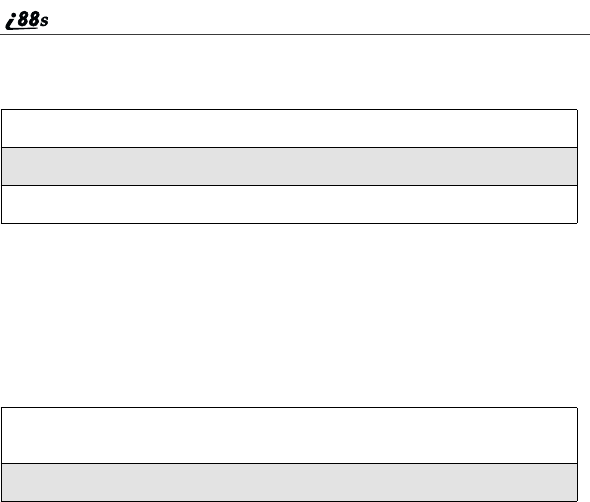
108
www.motorola.com/iden
Viewing Event Details
To view the details of an event:
This displays event details such as day of week, time, title, duration, alarm time,
and repeat cycle. For more information about events, see “About Datebook
Events”on page 108.
Viewing Today
You can easily go to the current day when viewing your Datebook:
About Datebook Events
Each Datebook event may contain the following information:
•The title you assign to the event. You can enter a title using the phone’s
alphanumeric keypad or choose from a list of commonly used titles. A title
is required for every event (maximum of 128 characters).
•Additional text following the event’s title.
•The start time and duration of the event.
•Thedateoftheevent.
•An option to repeat the event in your Datebook.
•An alarm to notify you of the event before it begins.
•The style you want your phone to use when the event occurs. See “Styles”
on page 150 for more information.
1
Select and view the day containing the event you want to view.
2
Press Sto scroll to the event.
3
Press Bunder VIEW.
1
While viewing any week, day, or event, press m.Thisdisplaysthe
Datebook Menu with Go to Today highlighted.
2
Press Bunder SELECT.
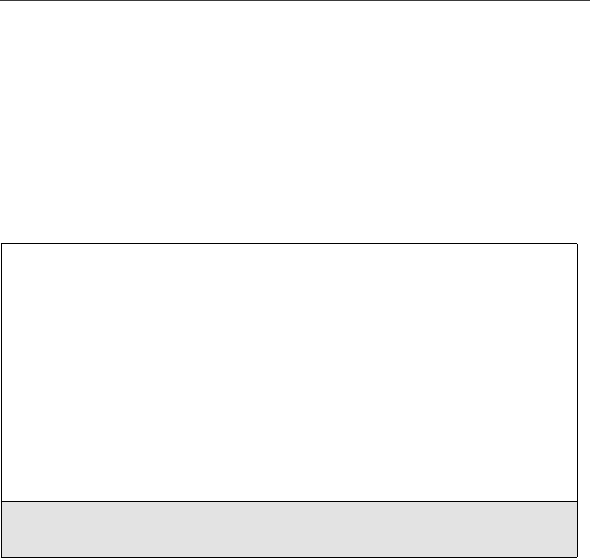
109
Adding New Events
Adding New Events
Using the following instructions, you will enter the information in the order the
items appear on the Event Form screen. However, you can enter this
information in any order by pressing Sto scroll through the items on the Event
Form screen. You can leave any item blank or unchanged by pressing Sto
scroll past it on the Event Form screen. Only a title and a date are required for a
valid event.
To cancel a Datebook event entry at any time, press eto return to the Ready
screen.
To add a Datebook event:
1
Access the Event Form screen:
While viewing a week in the Datebook,
press mto access the Datebook Menu.
Press Rto scroll to New.PressAunder
SELECT.
Or,
While viewing a day, press Sto scroll to
[New Event].PressAunder SELECT.
The Event Form screen displays with the Title field highlighted.
2
With the Title field highlighted, press Bunder CHANGE to access
the Title screen.
b

110
www.motorola.com/iden
3
Assignatitletotheevent:
Press Bunder BROWSE to choose from a list of commonly used
event titles. Press Sto scroll to the title you want and press Bunder
SELECT.
Or,
Type the title using the alphanumeric keypad. See “UsingT9Text
Input”on page 25 for information about entering text into this field.
You can also enter a description of the appointment or any other text.
When you are finished, press Bunder OK.
The Event Form screen returns with the Start field highlighted.
4
If you want to assign a time of day to the event:
With the Start field highlighted, press Bunder CHANGE.
From the Start screen, enter the time the event will begin.
Type in the start time, or press Sto scroll through the hours, minutes,
and am, pm, or 24 hour clock. Press Tor press Bunder Gto move
through the fields.
Press Aunder DONE.
The Event Form screen returns with the Duration field highlighted.
5
After you have assigned a start time to the event, you can specify the
duration of the event. The default duration is one hour. To assign a
different duration:
With the Duration field highlighted, press Bunder CHANGE.
From the Duration screen, press Rto scroll to the desired duration. If
you select None, the event will have a duration of zero minutes.
Press Bunder SELECT.
The Event Form screen returns with the StartDate field highlighted.

111
Adding New Events
6
The default date assigned to an event is the day that was highlighted
when you accessed the Event Form screen to add the event. To assign a
different date:
With the StartDate field highlighted, press Bunder CHANGE.
From the StartDate screen, enter the date of the event:
Type in the date, or press Sto scroll through the months, days, and
years. Press Tor press Bunder Gto move through the fields.
Press Aunder DONE.
The Event Form screen returns with the Repeat field highlighted.
7
If you want the event to recur in your Datebook, assign a repeat cycle to
it:
With the Repeat field highlighted, press Aunder CHANGE.
From the Repeat screen, press Sto scroll to the desired repeat cycle.
Press Aunder SELECT.
(If your appointment recurs more than one day a week, scroll to
Multiple Days and select as many days as apply. Then press Aunder
DONE.)
The Event Form screen returns with the RepeatEnd field highlighted.
NOTE: When Repeat is set to none or yearly, it will not be possible
to access the RepeatEnd field.
Press Bunder CHANGE and enter the date on which you want the
event to stop repeating. When you have finished, press Aunder
DONE.
The Event Form screen returns with the Alarm field highlighted.

112
www.motorola.com/iden
8
If you want to set an alarm to remind you
that the event is approaching:
With the Alarm field highlighted, press
Bunder CHANGE.
From the Alarm screen, press Sto scroll
to the desired alarm option.
If you choose the 1daybeforeoption, the
alarm will remind to you at your daily
begin time (see “Customizing Datebook
Set Up”on page 114) the day before the event, rather than 24 hours
before the event. If you choose the 1 week before option, the alarm will
remind to at your daily begin time a week before the event.
Press Bunder SELECT.
9
If you want your phone to change to a
style you have defined when the event
occurs (see “Styles”on page 150):
With the Styles field highlighted, press
Aunder CHANGE.
From the Style screen, press Sto scroll
to the desired style.
Press Bunder SELECT.
10
When you have entered all the desired
information about the event, press A
under DONE.
Y
h
X
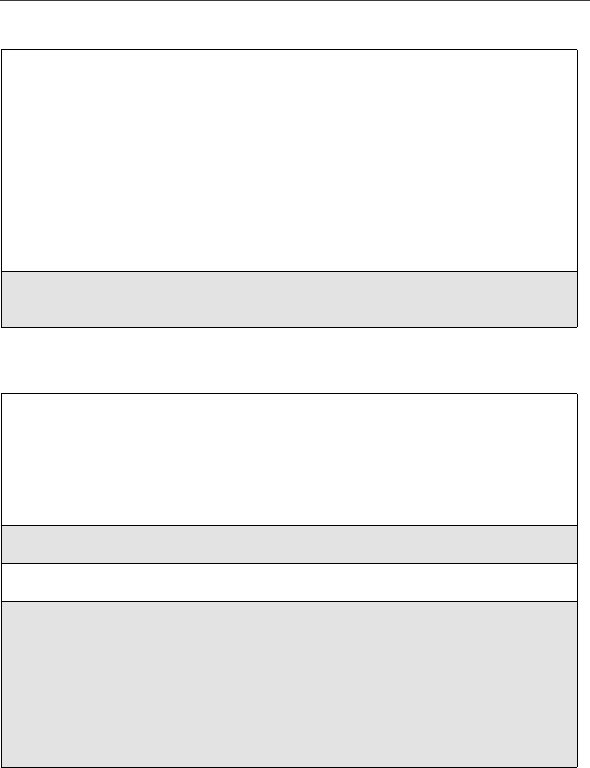
113
Editing Events
Editing Events
Deleting Events
1
If you are viewing the week containing the event:
Press Bunder EDIT.
Or,
If you are viewing the day containing the event:
Press mto display the Datebook Menu.
Press Rto scroll to Edit and press then Bunder SELECT.
2
Follow the applicable instructions in “Adding New Events”on page
109, to edit the various fields.
1
View the day containing the event and press Sto scroll to the event
you want to delete.
Or,
View the details of the event you want to delete.
2
Press m.TheDatebook Menu displays.
3
Press Rto scroll to Delete and press Bunder SELECT.
4
If the event is a recurring event, the Delete Event screen appears:
•To delete only the occurrence of the event you select in step 1,
leave This Event Only highlighted.
•To delete all occurrences of the event, press Rto highlight
Repeat Events.
Press Bunder SELECT.
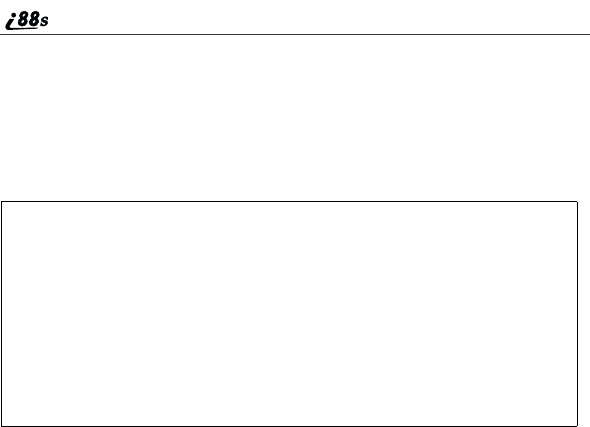
114
www.motorola.com/iden
Datebook Event Reminders
If you have set an alarm to remind you that a Datebook event is approaching,
your phone sounds an audible alarm and displays a reminder.
NOTE: You must have the Time and Date display turned on to receive
event reminders. This is the default setting.
When a Datebook event reminder appears on the screen:
Customizing Datebook Set Up
Datebook allows you to customize some of its set up features:
•DailyBegin —sets the beginning time of the 12-hour day your Datebook
displays when you are viewing a week.
•Reminder —controls the behavior of alarms you have set in Datebook:
•Active Only sets Datebook to ignore alarms that occur when your
phone is powered off.
•Delayed If Off sets Datebook to delay alarms that occur when your
phone is powered off until your phone is next powered on.
•Weekday —sets the first day of the week your Datebook displays when
you are viewing a week.
•DeleteAfter —controls how long your Datebook waits to delete an event
after it has occurred.
Press Aunder VIEW to view more
information about the Datebook event.
Or,
Press Aunder EXIT to dismiss the event
reminder. F
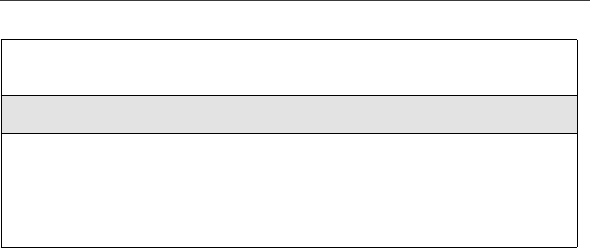
115
Customizing Datebook Set Up
To customize your Datebook set up:
1
While viewing a week in the Datebook, press mto access the
Datebook Menu.
2
Press Sto scroll to Setup and then press Bunder SELECT
3
Press Rto scroll to any of the set-up features.
Press Bunder CHANGE.
Use the screens that appear to make your changes.

116
www.motorola.com/iden
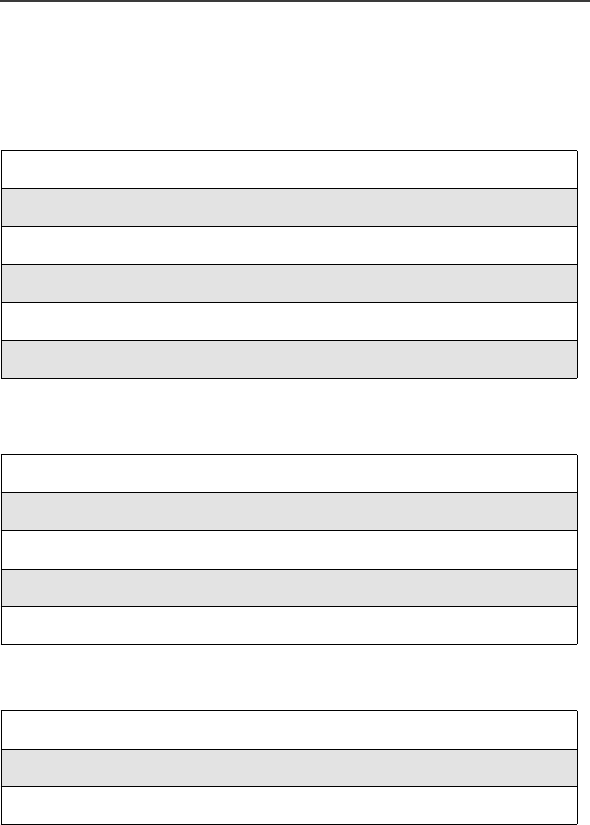
117
Memo
The Memo application provides you with a place to store a numeric note in your
i88sphone. You may call this number or store it in your Phonebook.
This section includes:
Creating a Memo
Viewing the Memo
Creating a Memo Page 117
Viewing the Memo Page 117
Editing the Memo Page 118
Deleting the Memo Page 118
Making a Call to the Memo Number Page 118
Storing the Memo Number to Phonebook Page 119
1
From the Ready screen, press m.
2
Press Rto scroll to Memo.
3
Press Bunder SELECT. The Memo screen displays.
4
Type your numeric memo using the phone’s keypad.
5
Press Bunder STORE.
1
From the Ready screen, press m.
2
Press Rto scroll to Memo.
3
Press Bunder SELECT.
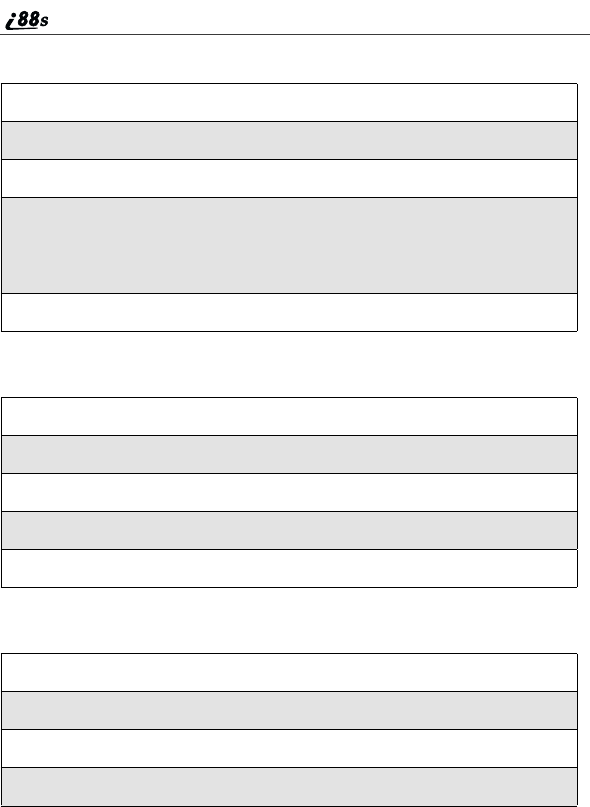
118
www.motorola.com/iden
Editing the Memo
Deleting the Memo
Making a Call to the Memo Number
1
From the Ready screen, press m.
2
Press Rto scroll to Memo.
3
Press Bunder SELECT.
4
Type the new number.
You can delete a digit by pressing Aunder DELETE. To all the digits,
press and hold Aunder DELETE.
5
Press Bunder STORE.
1
From the Ready screen, press m.
2
Press Rto scroll to Memo.
3
Press Bunder SELECT.
4
Press and hold Aunder DELETE.
5
Press Bunder STORE.
1
From the Ready screen, press m.
2
Press Rto scroll to Memo.
3
Press Bunder SELECT.
4
Press s.
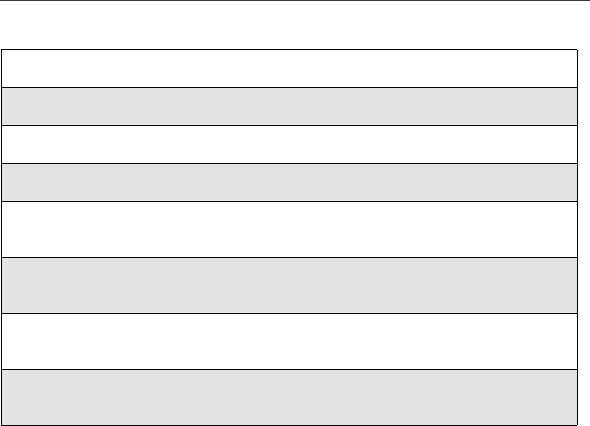
119
Storing the Memo Number to Phonebook
Storing the Memo Number to Phonebook
1
From the Ready screen, press m.
2
Press Rto scroll to Memo.
3
Press Aunder SELECT.
4
Press m. With Store to PHBK highlighted, press Aunder SELECT.
5
Press Aunder SELECT. This displays the Store To screen with [New
Entry] highlighted.
6
To create a valid Phonebook entry, you must assign a type. Press Rto
scroll to the Type field.
7
Press Bunder CHANGE. Press Rto scroll to the type of number you
want to assign to the Phonebook entry. Press Bunder SELECT.
8
If you want to add more information to the Phonebook entry, follow the
applicable instructions in “Adding Phonebook Entries”on page 44.

120
www.motorola.com/iden
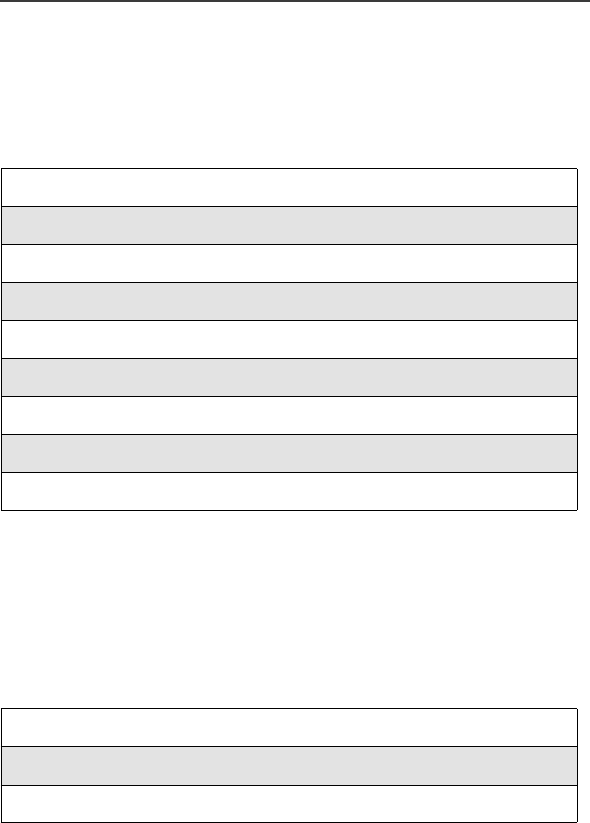
121
Voice Record
The Voice Record feature of your i88sphone enables you to record and play
back personal messages or the incoming portion of phone calls on your i88s
phone.
This section includes:
About Voice Record
Your phone can store up to 20 Voice Records, with a total time of about three
minutes, depending on available memory.
Accessing Voice Record
To access the Voice Record feature:
About Voice Record Page 121
Accessing Voice Record Page 121
Recording a Voice Record Page 122
Playing a Voice Record Page 122
Adding to a Voice Record Page 123
Labeling a Voice Record Page 123
Deleting a Voice Record Page 124
Locking/Unlocking a Voice Record Page 124
Voice Record Memory Page 125
1
From the Ready screen, press m.
2
Press Rto scroll to VoiceRecord.
3
Press Bunder SELECT.
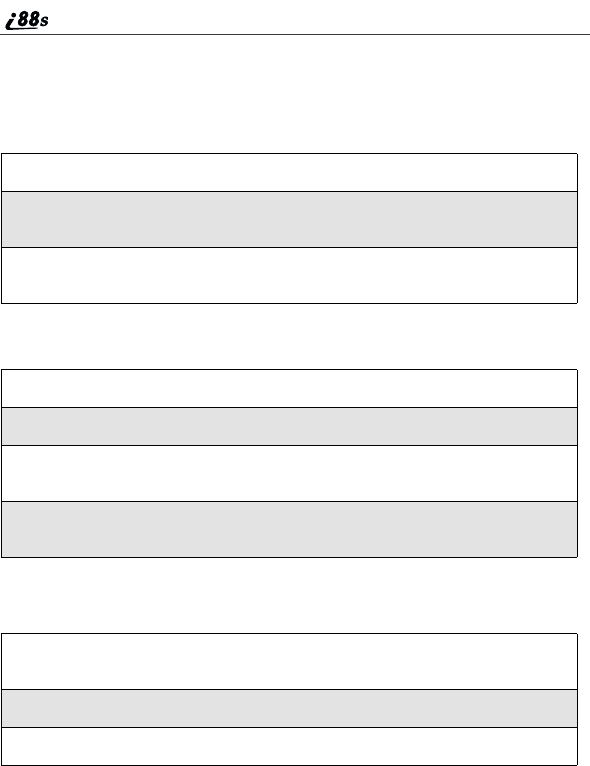
122
www.motorola.com/iden
Recording a Voice Record
NOTE: Recording of phone calls is subject to varying State and Federal
laws regarding privacy and recording of phone conversations.
To record a personal message as a Voice Record:
To record the incoming portion of a call as a Voice Record:
Playing a Voice Record
1
From the VoiceRecord screen, press Rto scroll to [New VoiceRec].
2
Press Bunder RECORD and speak the message you want to record
into the microphone.
3
When you are finished recording your Voice Record, press Bunder
STOP.
1
While on an active call, press m.
2
Press Rto scroll to VoiceRecord.
3
Press Bunder SELECT to record the incoming portion of the call.
Your own voice will not be recorded.
4
When you are finished recording your Voice Record, press Bunder
STOP.
1
From the VoiceRecord screen, press Rto scroll to the Voice Record
youwanttoplay.
2
Press Bunder PLAY.
3
To stop the Voice Record while it is playing, press Aunder BACK.
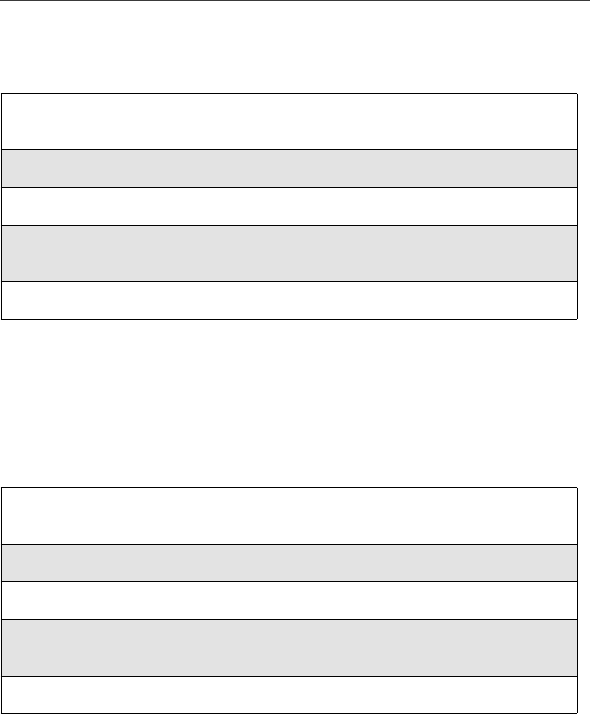
123
Adding to a Voice Record
Adding to a Voice Record
After you create a Voice Record, you can record more at the end of the existing
Voice Record:
Labeling a Voice Record
When you create a Voice Record, it is labeled with the time and date it was
recorded. After a Voice Record has been recorded, you can re-name it with a
custom label.
To label a Voice Record:
1
From the VoiceRecord screen, press Rto scroll to the Voice Record
you want to add to.
2
Press mto view the VoiceRecd Menu.
3
Press Rto scroll to Add To.
4
Press Bunder SELECT and speak the message you want to record
into the microphone.
5
When you are finished recording, press Bunder STOP.
1
From the VoiceRecord screen, press Rto scroll to Voice Record you
want to name.
2
Press mto view the VoiceRecd Menu.
3
Press Rto scroll to Label and press Bunder SELECT.
4
At the Enter Label screen, enter a label for the Voice Record using the
alphanumeric keypad.
5
Press Bunder OK.
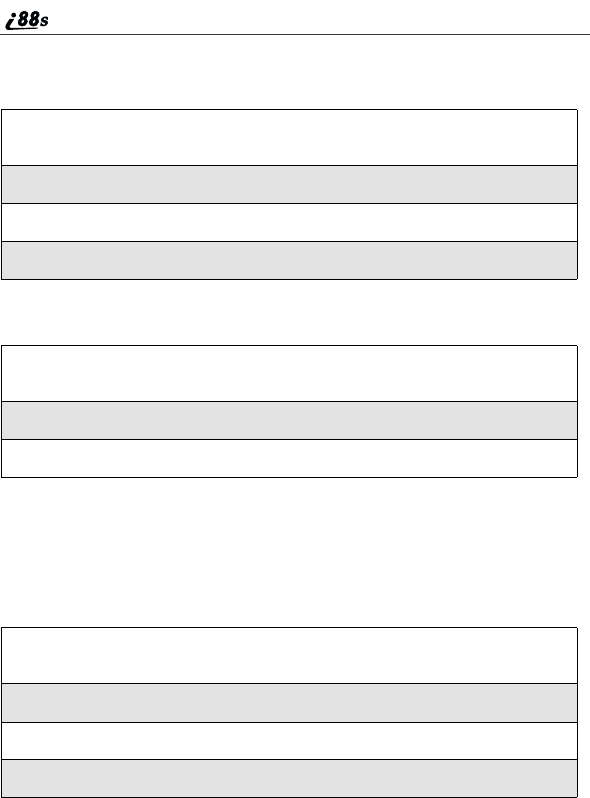
124
www.motorola.com/iden
Deleting a Voice Record
To delete a Voice Record:
To delete all unlocked Voice Records:
Locking/Unlocking a Voice Record
Locking a Voice Record prevents it from being deleted. When a Voice Record is
locked, the locked icon Mappears next to it.
To lock or unlock a Voice Record:
1
From the VoiceRecord screen, press Rto scroll to Voice Record you
want to delete.
2
Press mto view the VoiceRecd Menu.
3
Press Rto scroll to Delete and press Bunder SELECT.
4
A confirmation screen appears. Press Aunder YES to confirm.
1
From the VoiceRecord screen, press mto view the VoiceRecd
Menu.
2
Press Rto scroll to Delete All and press Bunder SELECT.
3
A confirmation screen appears. Press Aunder YES to confirm.
1
From the VoiceRecord screen, press Rto scroll to Voice Record you
want to lock or unlock.
2
Press mto view the VoiceRecd Menu.
3
Press Rto scroll to Lock or Unlock.
4
Press Bunder SELECT. A confirmation screen displays.
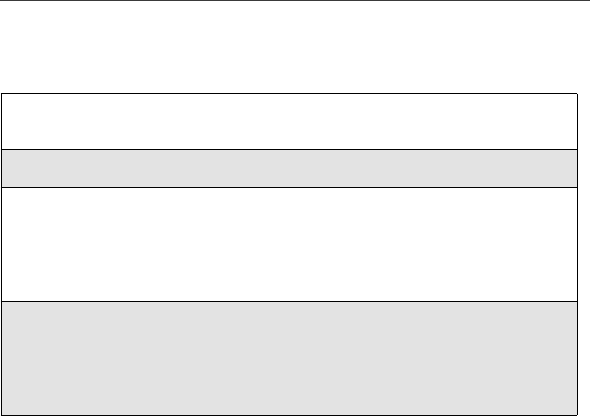
125
Voice Record Memory
Voice Record Memory
Typically, you can store 20 Voice Record with a total time of about three
minutes. To check the amount of memory available for Voice Record:
NOTE: Because Voice Record are stored in your phone using the same
memory space used to store Java applications, using a large
amount of memory to store Java applications reduces the space
available for Voice Record. When this occurs, deleting Java
applications from your phone’s memory frees memory space
for Voice Record. For more information about Java applications
stored in your phone, see “Java”on page 127.
1
From the VoiceRecord screen, press mto view the VoiceRecd
Menu.
2
Press Rto scroll to Memory.
3
Press Bunder SELECT to display the Memory Meter screen.
The memory meter shows the amount of Voice Record memory space
currently in use. It fills in from left to right as your Voice Record
memory space fills up.
4
From the Memory Meter screen, you can free more Voice Record
memory space by pressing Bunder DELETE to delete all unlocked
Voice Record.
A confirmation screen displays. Press Aunder YES to confirm.

126
www.motorola.com/iden
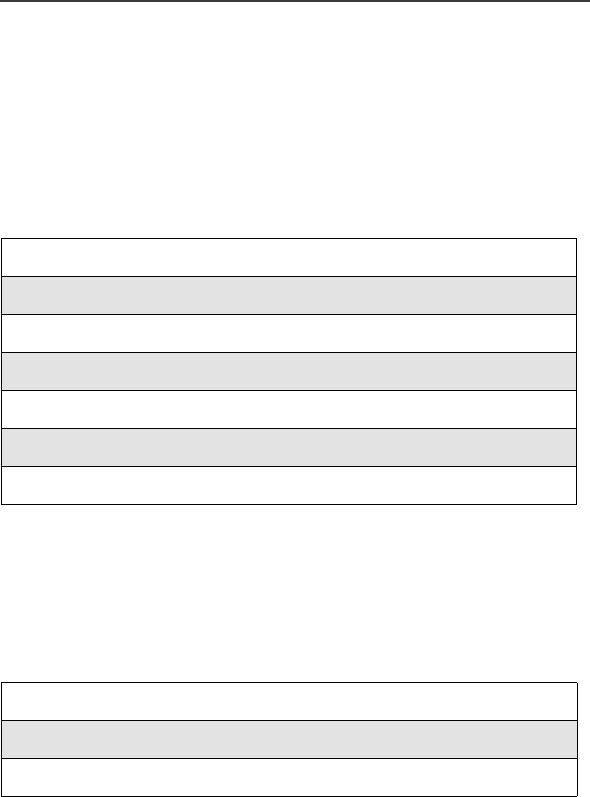
127
Java
TheJavafeatureofyouri88sphone runs applications written in the Java 2
Micro Edition programming language.
The phone comes with Java applications downloaded and ready for installation.
You can choose to order or purchase Java applications and download them into
your phone via the Internet. For more information, see “Downloading Java
Applications”on page 129.
This section includes:
Accessing Java Menu
To access the Java menu:
Accessing Java Menu Page 127
Installing Java Applications Page 128
Running Java Applications Page 128
Downloading Java Applications Page 129
Java Applications and GPS Enabled Page 129
Java Memory Page 131
Deinstalling Java Applications Page 132
IMPORTANT: To avoid personal injury, do not play games on
your i88sphone when operating machines or
driving vehicles.
1
From the Ready screen, press m.
2
Press Rto scroll to Java Apps.
3
Press Bunder SELECT.
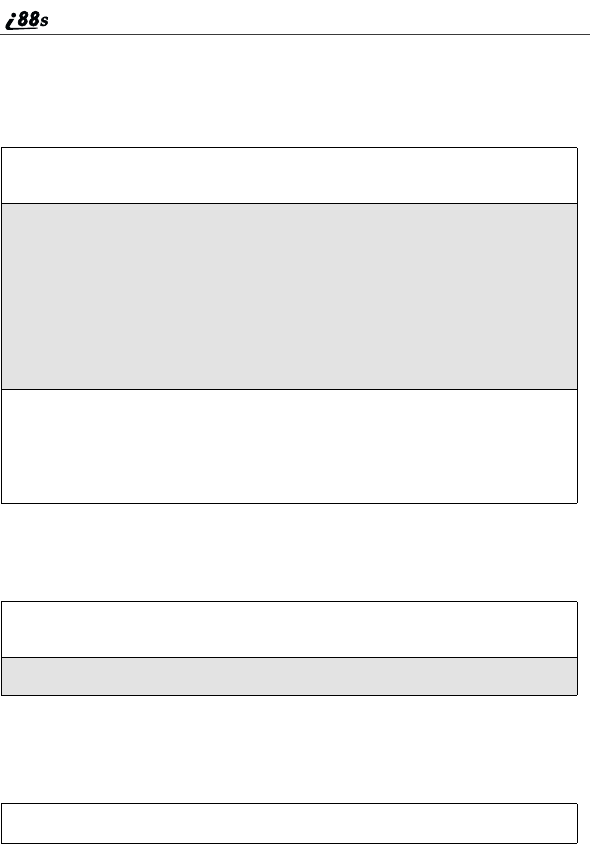
128
www.motorola.com/iden
The Java menu displays all of your Java applications.
Installing Java Applications
To install a Java application:
Running Java Applications
To run an application:
NOTE: If you receive an incoming phone call, the Java application will
be suspended.
To suspend a running application:
1
From the Java Apps screen, press Rto scroll to the desired
application.
2
To determine whether the application needs to be installed, look at the
display options on the screen.
If the display option is RUN or SELECT, the application is already
installedandreadytorun.See“Running Java Applications”on page
128.
If the display option is INSTALL, press Bunder INSTALL to install
the application.
3
The screen will display a series of installation steps. A checkmark will
appear as each step is completed. This may take several minutes.
When your phone has finished installing the application, press A
under DONE.
1
From the Java Apps screen, press Rto scroll to the application you
want to run.
2
Press Bunder RUN or SELECT.
Press e.

129
Downloading Java Applications
To resume a suspended application:
To stop running an application:
Downloading Java Applications
You can customize your phone by ordering additional Java applications via the
iDEN Update Website. Please go to www.motorola.com/idenupdate for a
selection of applications available and downloading instructions. You can
download these applications by connecting your phone to a PC using a data
cable and the iDEN Update Software Application.
NOTE: This is network subscription dependent feature. Please check
with your service provider for availability.
Java Applications and GPS Enabled
Some Java applications can make use of your phone’s GPS feature to determine
the approximate geographical location of your phone. (See “GPS Enabled”on
page 93 for more information on the GPS feature.) However, for privacy
reasons, you may not always want Java applications to access your phone’s
geographical location. Your phone protects your privacy by giving you the
option to block all or some Java applications from accessing your phone’s
location.
About GPS Privacy Options
GPS enables you to choose one of three privacy options:
•Restricted —No Java or similar software applications may access your
phone’s location. However, location information may still be available to
the phone’s owner, fleet manager, or account administrator.
•Unrestricted —All Java applications may access your phone’s location,
without notifying you.
•By Permission —When a Java application attempts to access your phone
location, you will be prompted to give permission. However, location
information may still be available to the phone’s owner, fleet manager, or
account administrator.
Press Bunder RESUME.
Press eandthenpressAunder EXIT.
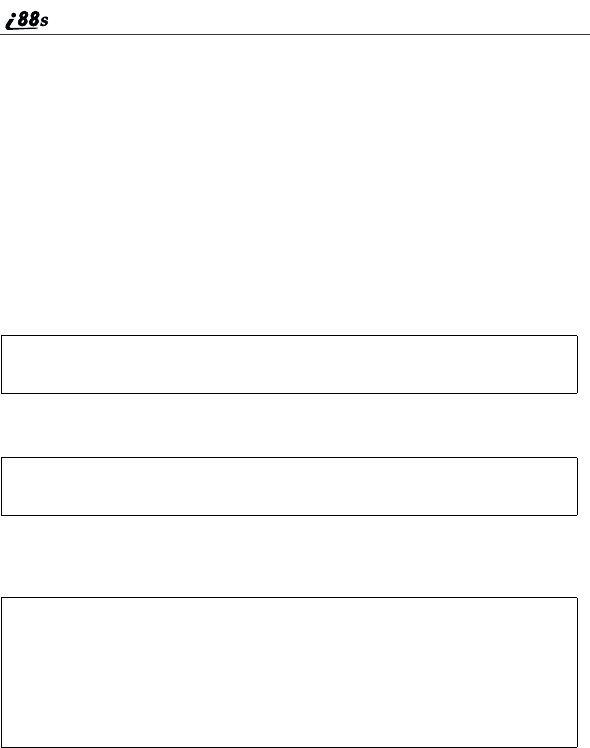
130
www.motorola.com/iden
See “Setting Privacy Options”on page 99 for information on choosing one of
these options.
Granting or Denying Permission
If you choose the By Permission option, you have several ways to grant or deny
each Java application access to your phone’slocation.
When a given Java application attempts to access your phone’s location for the
first time, a screen appears informing you that the Java application is requesting
a read on your phone location. You may see this screen again when the Java
application requests access to your phone’s location, depending on the privacy
setting you choose for the individual Java application (see “Setting Privacy for
Each Java Application”on page 130).
To deny this request:
To grant this request:
If you grant the request, a screen appears asking you if you want to allow this
Java application to access your phone’s location from now on:
Setting Privacy for Each Java Application
After a given Java application attempts to access your phone’slocationforthe
first time, you have the opportunity to set GPS privacy settings for that Java
application from the Java menu.
Press Aunder DENY. The Java application will not access your
phone’slocation.
Press Aunder GRANT. The Java application accesses your phone’s
location.
Press Aunder YES to allow this Java application to access your
phone’s location from now on, without prompting you again. This sets
this Java applications privacy setting to Always (see “Setting Privacy
for Each Java Application”on page 130).
Press Aunder NO if you want this Java application to prompt you the
next time it attempts to access your phone’s location,
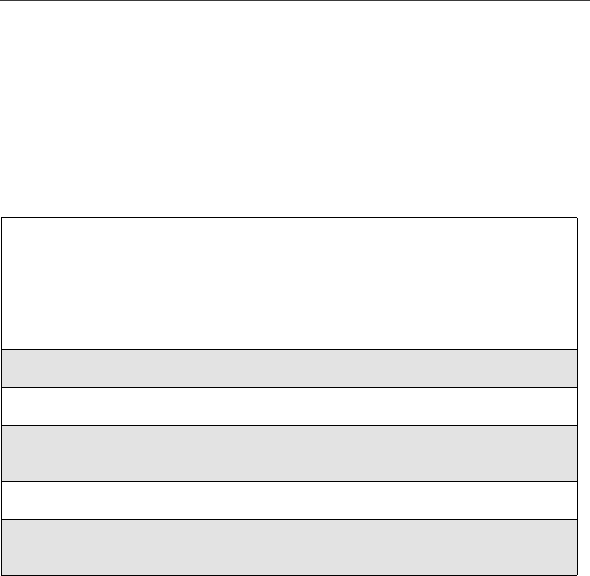
131
Java Memory
You may choose one of three privacy settings for each Java application:
•Always —The Java application always has permission to access your
phone’s location, without notifying you.
•Ask —When the Java application requests access to your phone’s
location, you will be prompted to grant or deny permission (see “Granting
or Denying Permission”on page 130).
•Never —When the Java application requests access to your phone’s
location will automatically be denied without requiring any user action.
To view or change the privacy setting of a Java application:
Java Memory
In order to download, store and run the application of your choice, you must
have enough Data and Program memory available in your phone.
•Data memory refers to the memory needed to download an application to
your phone.
•Program memory refers to the memory needed to install and run an
application on your phone.
1
From the Java Apps screen, press Sto scroll to Java application for
which you want to assign a privacy setting.
If the application has attempted to access your phone’s location once,
the menu icon will appear when you highlight the name of the
application.
2
Press m.
3
Press Rto scroll Privacy Settings.
4
Press Bunder SELECT. The Privacy Setting screen shows the
current privacy setting to this Java application.
5
Press Bunder CHANGE.
6
Press Sto choose the privacy setting Always,Ask,orNever for this
Java application.
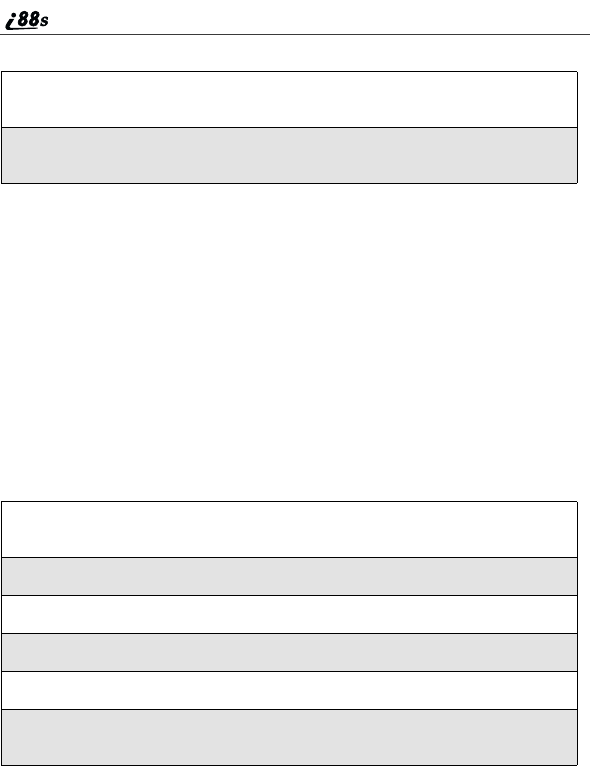
132
www.motorola.com/iden
To check how much memory your phone has available for Java applications:
You may free more Data Memory and Program Memory space by deinstalling
an application that you do not wish to use. Deinstalled applications that were
obtained from iDEN Update may be redownloaded at a later time at no cost. For
information on deinstalling, see “Deinstalling Java Applications”on page 132.
NOTE: Java applications are stored in your phone using the same
memory space used to store Voice Records. Using a large
amount of data memory to store Voice Records reduces the
data memory available for downloading of Java applications.
When this occurs, deleting Voice Records from your phone's
data memory space will free memory space for Java
applications.
Deinstalling Java Applications
To remove a Java application from your phone:
1
From the Java Apps screen, press Sto scroll to Java System.Press
Bunder SELECT.
2
Press Bunder NEXT to go to the Java System screen. The Data
Space and Prog. Space information will be available.
1
From the Java Apps screen, press Sto scroll to the application you
want to remove.
2
Press m.
3
Press Rto scroll to DEINSTALL.
4
Press Bunder SELECT. A confirmation screen displays.
5
Press Aunder YES. A warning screen displays. Press Aunder OK.
6
When your phone has finished deinstalling the application, press A
under DONE.
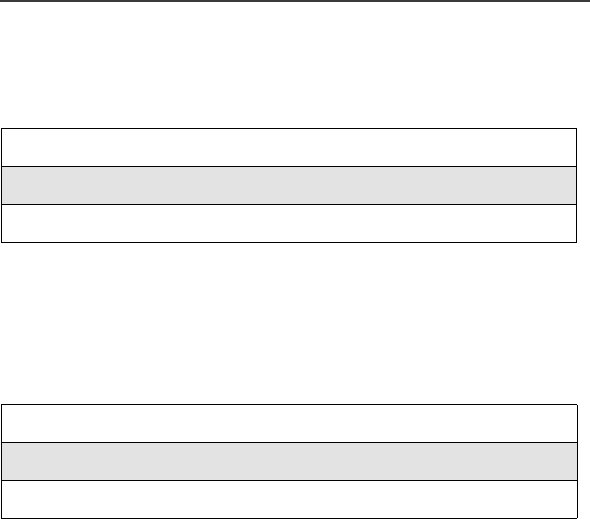
133
Customizing the i88s Phone
You can customize your i88sphone to fit the way you want to use it.
This section includes:
Settings
The phone’s Settings menu enables you to control many of the phone’sfeatures
and functions, including display properties, message handling, and security
features.
To access the Settings menu:
NOTE: Changes to some of your phone Settings may not take effect if
there is an active style. Styles must be to Off. See “Turning Off a
Style”on page 153.
From the Settings screen, you can access these Settings options:
•Ring/Vibe —controls how your phone rings or vibrates when you receive
calls and messages.
•Phone Setup —sets call-answering features, turns off non-telephone
features, chooses which phone line is used, and sets your network ID.
•In-Call Setup —sets call timer, message notification, and call waiting
features.
•Security —sets security features including phone lock, keypad lock, and
SIM PIN.
Settings Page 133
Styles Page 150
Shortcuts Page 155
1
From the Ready screen, press m.
2
Press Rto scroll to Settings.
3
Press Bunder SELECT.
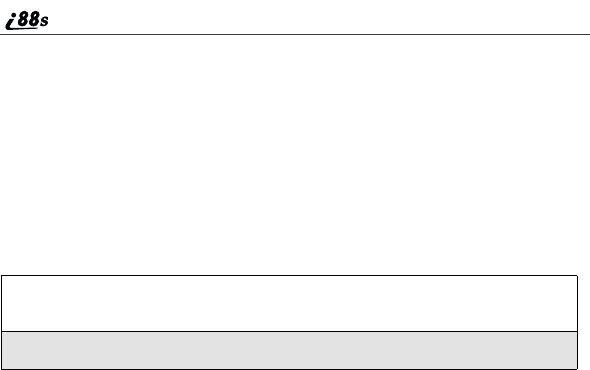
134
www.motorola.com/iden
•Personalize —controls which features are most accessible when you turn
on your phone.
•Initial Setup —sets a variety of display features including the language
displayed, the size of the characters on the text screen, time and date
formats, current year, backlight, status light, and scrolling. Also turns auto
redial on or off and sets baud rate.
•VoiceVolume —sets the volume of your phone’s earpiece and speaker.
•Tkgrp —sets certain Talkgroup options.
•Service Status —shows the status of your phone’sservices.
To access any of these options:
Many of these options have other options within them. Press Sto scroll
through the lists of options, and press Aor Bto select and modify options
and the features, according to the instructions on your phone’s screen. For some
options, you can also press Tto select sub-options.
In screens that show lists of options for a setting, a check mark to the left of the
option indicates the current option for the setting.
Ring/Vibe
Ring/Vibe enables you to control how your phone rings and vibrates when you
receive calls and messages. You can set ring volume, choose ring styles, and use
the VibraCall®Alert feature which enables you to set your phone to alert you to
calls and messages by vibrating.
Main Options
Ring/Vibe provides these main options:
•Ringer Vol —sets ring volume.
•Keypad Vol —sets volume of sounds associated with keypad actions.
•Mail Vol —sets volume of Text Message, Voice Mail, and Net Alert
notifications.
•Java/Data Vol —sets volume of sounds made by Java applications.
1
From the Settings screen, press Rto scroll to the option you want to
access.
2
Press Bunder SELECT.
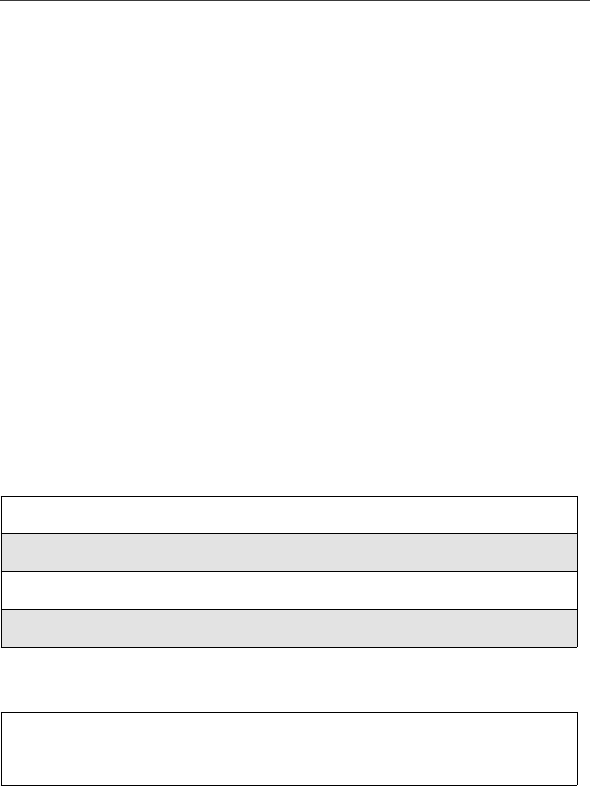
135
Settings
•Headset —choosing the HdsetOnly option prevents sound from being
emitted from the phone’s speaker when the headset is being used.
•VibeAll —choosing On sets the phone to vibrate for all calls, messages,
and alerts; choosing Off enables you to set the type of notification for each
these features.
Ring Style and Notification Type
When you set VibeAll to On, your phone vibrates to notify you of all types of
calls, messages, and alerts.
When you set VibeAll to Off, the following features display after VibeAll on
the Ring/Vibrate screen, enabling you to set notification options for each:
•Line 1 —sets the ring style and type of notification for calls on Line 1.
•Line 2 —sets the ring style and type of notification for calls on Line 2.
•Pvt/Grp —sets type of notification for Private and Group calls.
•Call Alert —sets the ring style and type of notification for call alerts.
•Text Msgs —sets type of notification for Text Messages.
•Reminder —sets type of notification for Datebook reminder alarms.
•Voice Mail —sets type of notification for Voice Mail messages.
•Netmail —sets type of notification for Net Alert messages.
To set VibeAll to Off or On:
Or:
1
From the Ring/Vibrate screen, press Sto scroll to the VibeAll.
2
Press Bunder CHANGE.
3
Press Sto scroll to Off or On.
4
Press Bunder SELECT.
With the phone cover closed, use the volume buttons to set VibeAll to
Off or On. Increasing the volume sets VibeAll to Off. Decreasing the
volume to as much as possible sets VibeAll to On.
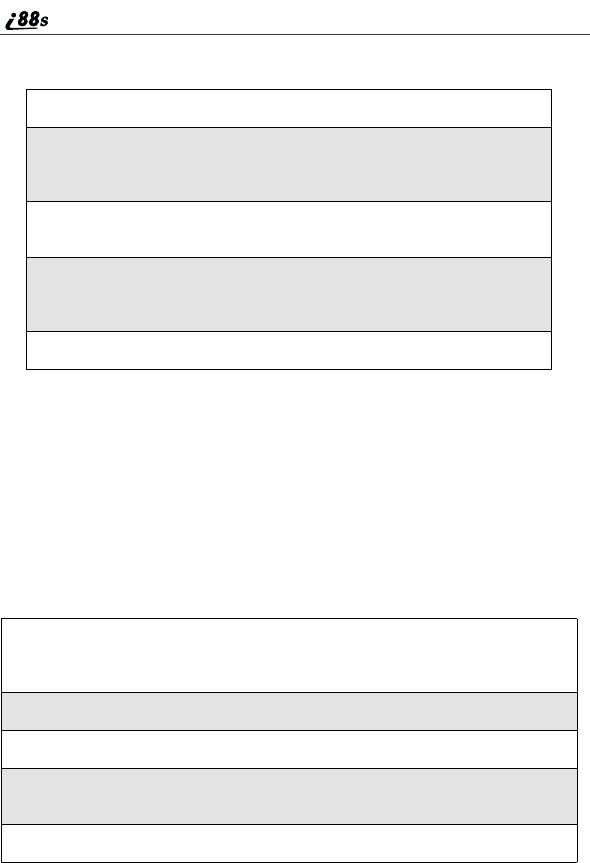
136
www.motorola.com/iden
The following icons appear on the second row of your display screen to indicate
the options you have chosen:
Notification Types
When you set a notification type, you have these options:
•Ring —the phone rings to notify you.
•Vibe —the phone vibrates to notify you.
•Vibe/Ring —the phone vibrates and then rings to notify you. This option
is only available for calls on Line 1 and Line 2.
•Silent —the phone does not ring or vibrate to notify you.
To set a notification type:
Icon Indicates...
-Vibrate All - phone is set to vibrate when
you receive all types of calls, messages,
and alerts; the VibeAll option is On.
[Vibrate On - phone is set to vibrate when
you receive phone calls.
\Vibrate Then Ring - phone is set to
vibrate and then ring when you receive
phone calls.
*Silent - phone is set not to ring.
1
From the Ring/Vibrate screen, ensure that VibeAll is set to Off.Then
press Sto scroll to any of the features on the Ring/Vibrate screen
after VibeAll.
2
Press Bunder SELECT.
3
With the Type field highlight, press Bunder CHANGE.
4
Press Rto scroll to the notification type you want to assign to the
feature.
5
To assign the notification type, press Bunder SELECT.
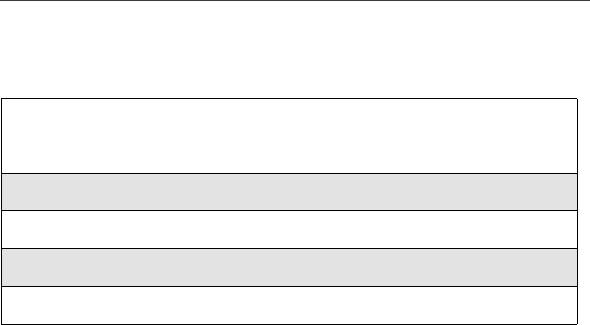
137
Settings
Ring Styles
When you set a ring style, you can choose from any of nine pre-set ring styles.
To set a ring style:
USER TIP: To hear the ring style you have selected, press the volume
control buttons on the side of your phone.
Phone Setup
Phone Setup sets some basic phone features. Access Phone Setup to set the
following options:
•Line —enables you to choose Line 1 or Line 2 as the active line for
outgoing calls.
•AutoAns —sets your phone to automatically answer an incoming call
after a specified number of rings. When this feature is turned on, the phone
answers by connecting you to the caller; it does not send the call to Voice
Mail, unless you are out of coverage or on the line.
•Any Key —when turned on, enables you to answer calls by pressing any
key on the alphanumeric keypad.
•Phone Only —when turned on, prevents your phone from making or
receiving Private calls or Group calls.
•Network ID —enables you to set the phone’snetworkIDsandtheir
roaming options under the direction of your service provider.
1
From the Ring/Vibrate screen, ensure that VibeAll is set to Off.Then
press Sto scroll to any of the features that allow you to set a ringer
style: Line1,Line2,orCall Alert.
2
Press Bunder SELECT.
3
With the Style: field highlight, press Bunder CHANGE.
4
Press Rto scroll to the ring style you want to assign to the feature.
5
To assign the ring style, press Bunder SELECT.

138
www.motorola.com/iden
In Call Setup
In Call Setup sets the in-call timer, message notification, and call waiting
features.
•The In Call Timer option turns the following features on and off:
•Display —the duration of the current call displays on the phone’s
screen when the call ends.
•Minute Beep —an audible beep occurs every minute of an active
call.
•The Notifications option controls message notification during calls:
•Receive All —notifies you of all types of messages during calls.
•Msg Mail Only —notifies you of mail messages only; all other types
of message notifications are delayed until the call has ended.
•Delay All —delays notification of all messages until the call has
ended.
•Call Waiting —enables you to turn off call waiting for the next call. After
you hang up, call waiting is turned back on.
Security
Security allows you to set security features:
•Phone Lock —sets an optional code that locks your phone.
•Keypad Lock —displays instructions for locking and unlocking your
phone’skeypad.
•SIM PIN —enables and disables your phone’s SIM PIN security feature.
•GPS PIN —enables and disables your phone’s GPS PIN security feature.
•New Passwords —enables you to change your phone’s security code,
phone unlock code, and SIM PIN.
•Master Reset —allows your service provider to reset your service in the
event of a security or provisioning problem.
Using Phone Lock
The Phone Lock feature enables you to prevent your phone from being used
unless an Unlock code is typed into the keypad.
The Unlock code is required to enable the phone lock feature, to unlock the
phone, and to set a new Unlock code. Contact your service provider for your
default Unlock code.

139
Settings
Phone lock provides two options for locking the phone:
•Lock Now locks the phone immediately after you set the option.
•Auto Lock locks the phone the next time the phone is powered on.
Setting Keypad Lock
The i88sphone includes a keypad lock feature that enables you to lock your
phone’s keypad to avoid inadvertently pressing or replacing calls. See “Keypad
Lock”on page 20 for more information on locking the keypad.
Keypad Lock provides two options for locking the phone:
•Lock Now locks the keypad immediately after you set the option.
•Auto Lock specifies a time after which your keypad locks automatically, if
your no keys or buttons on your phone have been pressed during that time.
Youmaychoose5minutes,10minutes,15minutes,or20minutes.
Enabling and Disabling SIM PIN
The SIM PIN option enables and disables the feature that requires a SIM PIN
code to be typed into the phone to access the information on the SIM card and to
make or receive calls. See “SIM Card Personal Identification Number (PIN)”on
page 12 for more information.
Setting New Passwords
The New Passwords option enables you to set passwords that control access to
your phone:
•Unlock Code —this code is used to control access to the phone using
Phone Lock. It is also required to access the Master Clear and Feature
Reset features. If you want to use any of these features, contact your
service provider for your default Unlock code.
•Security Code —this code is used to access the Master Reset feature
under the direction of your service provider. It can also be used to override
your Unlock code and GPS PIN under the direction of your service
provider.
•SIM PIN —this code is used to access the information on your SIM card
and to make or receive calls. When you get your phone, your SIM PIN is
0000. You should change this to a SIM PIN known only to you as soon as
your get your phone. For information on changing your SIM PIN, see
“Changing the SIM PIN”on page 14.
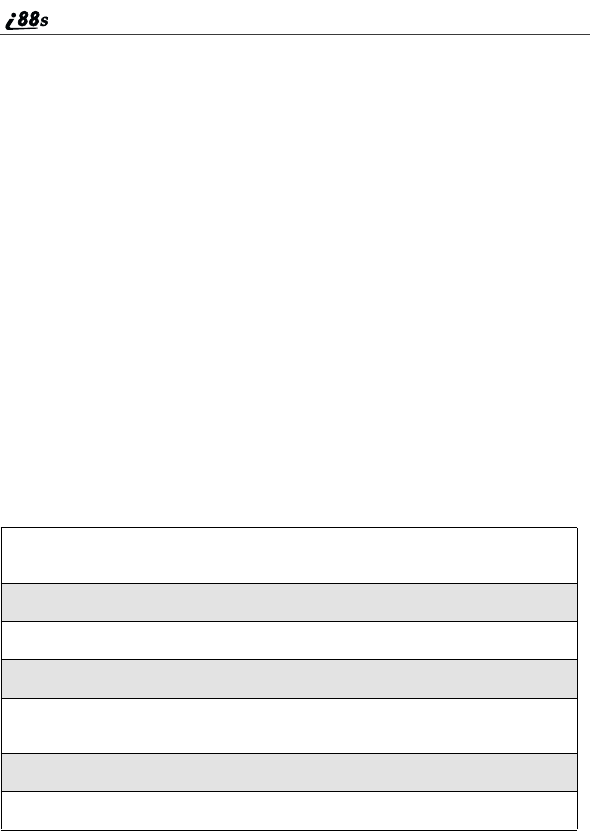
140
www.motorola.com/iden
•GPS PIN —this code is used to access the privacy setting the control
access to your phone’s GPS Enabled location by Java applications. When
you get your phone, your GPS PIN is 0000. If you want to protect your
GPS Enabled privacy settings, you should change this to a GPS PIN known
only to you as soon as your get your phone. For more information on your
GPS PIN, see “Setting the GPS PIN Security Feature”on page 100.
Using Master Reset
The Master Reset option is provided for use only under the direction of your
service provider. It resets your service.
Personalize
Personalize contains three options that control which major features are easiest
to access when you turn on your phone:
•Main Menu —changes the order of the items on your main menu.
•Keys —controls which main menu items appear above the two option keys
on the Ready screen.
•Power Up App —sets any of the programs on the main menu to run when
you turn on your phone.
Reordering Main Menu
1
From the Personalize screen with Main Menu highlighted, press B
under SELECT to access the Reorder Menu screen.
2
Press Sto scroll to the main menu option you want to move.
3
Press Bunder GRAB.
4
Press Sto move the option up or down in the list.
5
When the item is where you would like it to appear in the main menu,
press Bunder INSERT.
6
Repeat step 2 through step 5 for all main menu items you want to move.
7
Press Aunder DONE.
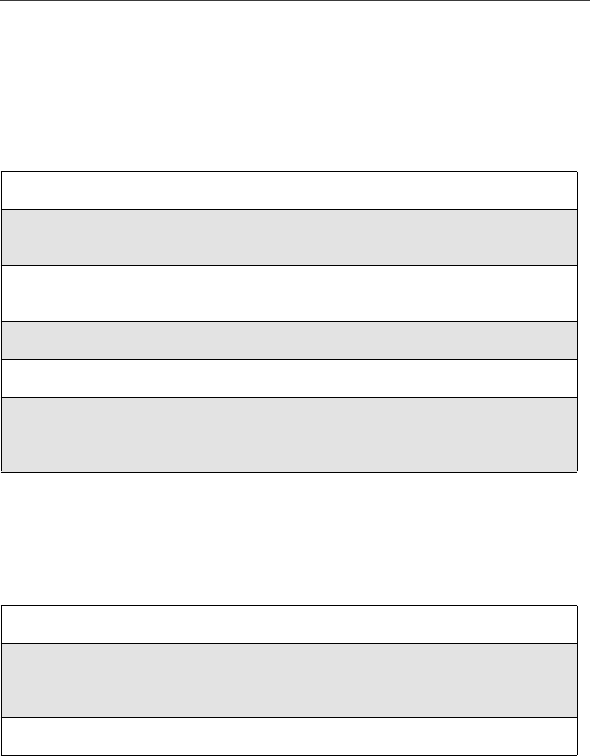
141
Settings
Changing Ready Screen Options
TwooptionsfromthemainmenualwaysappearonyourReady screen above
the left and right option keys. Each option can be accessed by pressing the
corresponding option key.
Your phone arrives with Phonebook (PHBK) assigned to the left option key
(A)andMessages(MESG) assigned to the right option key (B). You can
assign any Main Menu option you want to the option keys.
Changing Power-Up Program
Your phone is set to display the Ready screen when it is powered on. You can
set the phone to display the main screen of any main menu option when it is
powered on.
1
From the Personalize screen, press Rto scroll to Keys.
2
Press Bunder SELECT. The Keys screen shows the option assigned
to each option key (Left and Right).
3
To change the option assigned to the left option key, press Bunder
CHANGE while Left is highlighted.
4
Press Rto scroll to the option you want to assign to the left option key.
5
Press Bunder SELECT.
6
To change the option assigned to the right option key, press Rto
highlight Right and press Bunder CHANGE. Repeat steps 4 and 5 for
the right option key.
1
From the Personalize screen, press Rto scroll to Power Up App.
2
Press Bunder SELECT. The Power Up App screen shows the name
of the program or screen that currently appears when the phone is
powered on.
3
Press Bunder CHANGE.

142
www.motorola.com/iden
Initial Setup
Initial Setup enables you to control a variety of your phone’sfeaturesthatyou
may want to modify when you first get your phone:
•Time/Date Format —sets the format in which the time and date display
on your phone.
•Year —sets the current year.
NOTE: Changing the current year may affect stored Datebook events.
Datebook stores events 12 month ahead and one month after
the current date. Events outside this range will be deleted. See
“Datebook”on page 105 for more information.
•Auto Redial —turns the automatic redial feature on and off.
•Backlight —controls how long your phone’s backlight stays on.
•Sensor - controls the photo sensor to activate the backlight when your
phone is in poor lighting conditions.
•Status Light —controls whether the status light is on when the phone is
on.
•Display —controls the size of the text in the text display area.
•Contrast —controls how light or dark the screens appears.
•Scroll —sets how you can scroll lists and menus.
•Language —sets the language that your phone displays.
•Master Clear —returns all settings to their original defaults and erases all
stored lists. Use only under the direction of your service provider.
•Feature Reset —returns all settings to their original defaults. Use only
under the direction of your service provider.
•Baud Rate —sets the baud rate at which your phone communicates with a
laptop computer, PC, or similar device.
•TTY Setup —sets TTY options. By default, your phone is set to function
with a TTY device.
•TTY Baud Rate —sets the baud rate at which your phone communicates
when connected to a TTY device.
4
Press Rto scroll to the option you want to appear when the phone is
powered on.
5
Press Bunder SELECT.

143
Settings
•Alert Timeout - controls the amount of time the Call Alert tone sounds.
•Return to Home - controls how long the Recent Calls screen displays
before returning to the Ready screen after phone and Private or Group
conversations.
Changing Time and Date Format
Your phone displays times in 12-hour-clock format (12:00 am through 11:59
pm) or 24-hour-clock format (0:00 through 23:59). It displays dates in month/
day format or day/month format.
NOTE: If you turn the time and date display off, no times are associated
with calls on your Recent Calls list, and the alarm feature of
your Datebook is disabled.
To set the time and date format, or turn time and date display on or off:
1
From the Initial Setup screen with Time/Date Format highlighted,
press Bunder SELECT to access the Time/Date Format screen.
2
To change the time format:
With Time Format highlighted, press Bunder CHANGE to access
Time Format screen.
Press Sto highlight the time format you want.
Press Bunder SELECT.
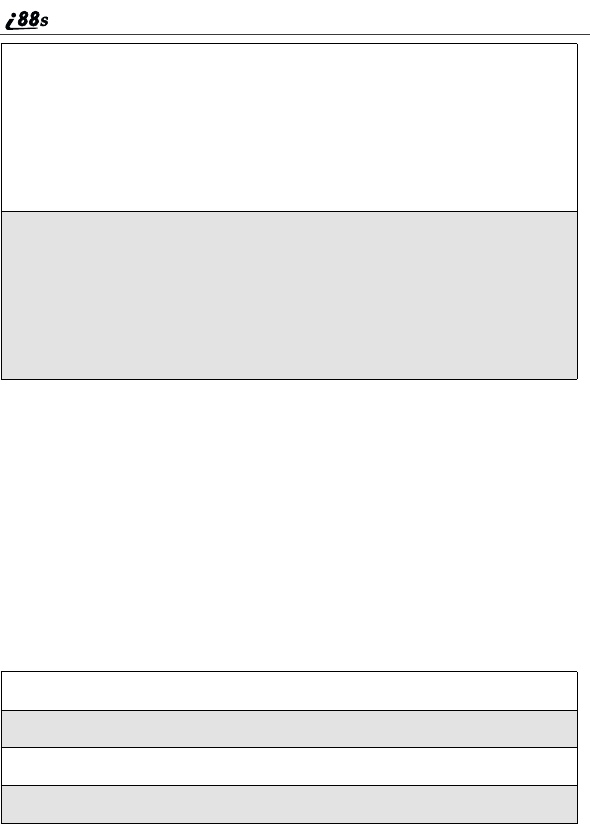
144
www.motorola.com/iden
SettingAutoRedial
When Auto Redial is set to On, if you receive a System Busy, Try Later
message while making a call, the phone will redial the number automatically.
You will hear a ring-back tone when a successful call is placed.
When Auto Redial is set to Off, you must press and hold sto redial the last
number dialed.
Setting Backlight Timer
The backlight illuminates the display when you receive or make calls. You can
set the amount of time that the backlight stays on to 5, 10, 20, or 30 seconds, or
set it to stay on continuously or stay off at all times.
3
To change the date format:
Press Sto highlight Date Format:,andpressBunder CHANGE to
access Date Format screen.
Press Sto highlight the date format you want.
Press Bunder SELECT.
4
To turn the time and date format on or off:
Press Rto highlight Display,andpressBunder CHANGE to access
Display screen.
Press Sto choose Off or On.
Press Bunder SELECT.
1
From the Initial Setup screen, press Rto scroll to Backlight.
2
Press Bunder CHANGE.
3
Press Sto scroll to the desired backlight option.
4
Press Bunder SELECT.
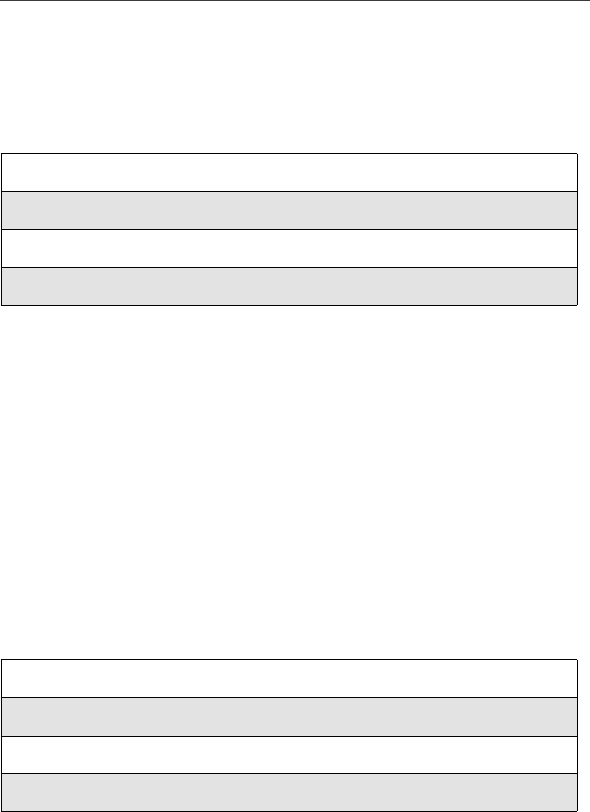
145
Settings
Setting Photosensor
To conserve battery power, the photosensor will disable the backlight when you
are in good lighting conditions. To force the backlight to come on every time a
key is pressed, you can turn the photosensor off.
NOTE: Setting the Backlight to come on continuously while the
Photosensor is turned on will drain your battery power.
Adjusting Status Light
The status light is part of your phone’s power button. It illuminates when the
phone is on. You can turn the status light feature on or off from the Initial Setup
screen.
Setting Text Display
You can set your phone’s text display area to show more text using smaller
characters or less text using larger characters. The size and amount of text
displayed depends on the view selected:
•Standard view —five lines of text, 14 characters per line.
•Compressed view —seven lines of text, 18 characters per line.
•Zoom view —four lines of text, 11 characters per line.
To set the text display view:
1
From the Initial Setup screen, press Rto scroll to Sensor.
2
Press Bunder CHANGE.
3
Press Sto scroll to the desired option.
4
Press Bunder SELECT.
1
From the Initial Setup screen, press Rto scroll to Display:.
2
Press Bunder CHANGE.
3
Press Sto scroll to the desired display option.
4
Press Bunder SELECT.
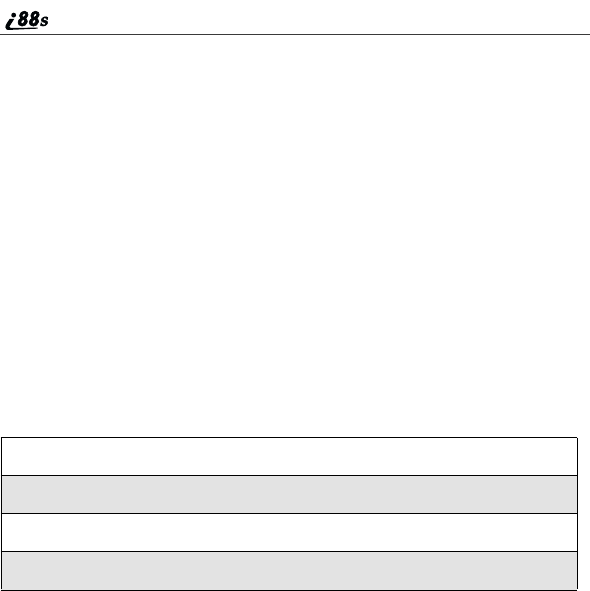
146
www.motorola.com/iden
NOTE: Unless otherwise noted, illustrations in this User’s Guide depict
Standard view.
Setting Scrolling
You can set your phone to scroll through menus and lists in either of two ways:
•Up/Down —when you reach the bottom or top of list or menu scrolling
stops until you scroll in the other direction.
•Wrap Around —when you reach the bottom or top or a list or menu
scrolling “wraps”around and continues at the other end of the lists of
menu.
You can set the scrolling style from the Initial Setup screen, using the Scroll
option.
Changing Display Language
You can customize the i88sphone to display menus in English, French, Spanish,
or Portuguese. The default language is English.
To change the display language:
Master Clear
Master Clear returns all your phone’s settings to their original factory defaults,
erases all stored lists, and sets your previous three GPS Enabled location fixes to
zero. To use this feature, you must contact your service provider to receive your
phone’s Unlock code.
Feature Reset
Feature Reset returns all your phone’s settings to their original defaults and sets
your previous three GPS Enabled location fixes to zero. To use this feature, you
must contact your service provider to receive your phone’s Unlock code.
1
From the Initial Setup screen, press Rto scroll to Language.
2
Press Bunder CHANGE.
3
Press Rto scroll to the language you want your phone to display.
4
Press Bunder SELECT.
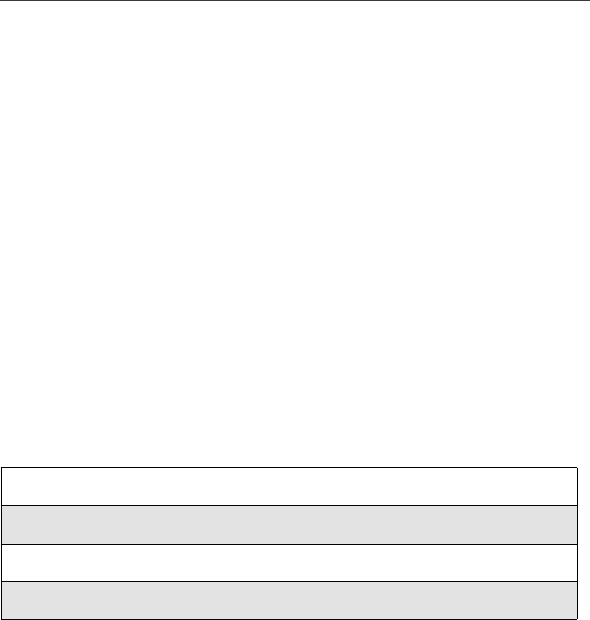
147
Settings
Setting Baud Rate
You can set your phone’s baud rate from the Initial Setup screen. Scroll to the
Baud Rate option and then choose the baud rate you want, or choose Auto to
set your phone to automatically choose the appropriate baud rate.
Setting TTY Mode
NOTE: This feature may not be offered by your service provider.
TTY Setup enables you to set your options for using your phone with a
teletypewriter (TTY) device. By default, your phone is set to function with a
TTY device in TTY mode.
Your phone supports the following TTY modes:
•TTY —for calls in which you type and read text on your TTY device.
•VCO (Voice-Carry-Over) —for calls in which you speak into your phone
and read text replies on your TTY device.
•HCO (Hearing-Carry-Over) —for calls in which you type text on your
TTY device on listen to voice replies on your phone’s speaker.
You can set your TTY mode using your phone’sSettings menu at any time, or
by issuing commands from your TTY device while on an active call.
To set your phone’s TTY mode using your phone’sSettings menu:
1
From the Initial Setup screen, press Rto scroll to TTY Setup.
2
Press Aunder CHANGE.
3
Press Sto scroll to the desired TTY mode; Off,TTY,VCO,orHCO.
4
Press Aunder SELECT.
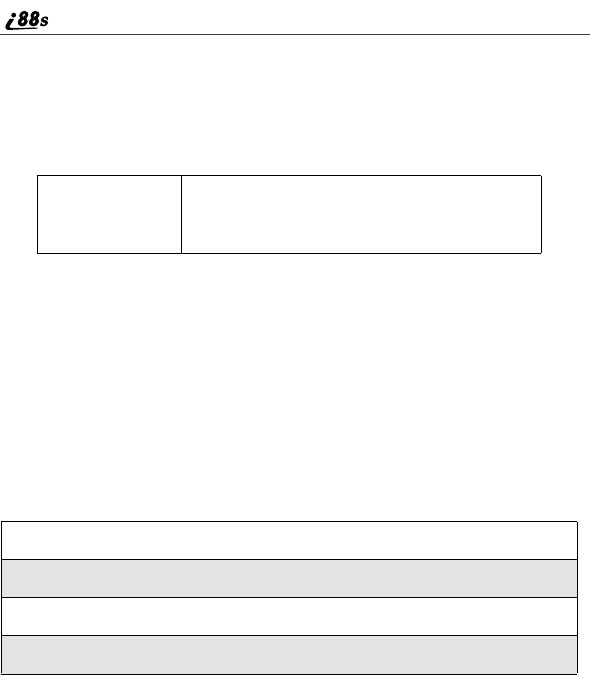
148
www.motorola.com/iden
To set your phone’s TTY mode from your TTY device, issue one of the
following commands while on an active call:
•“VCO please”—to select VCO mode.
•“HCO please”—to select HCO mode.
•“HCO off please”—to turn off HCO mode.
NOTE: TTY device manufacturer’s proprietary feature such as Turbo-
Code, High-Speed, and Interruption are not supported by your
phone. These features must be turned off or disabled to use
your TTY device with your phone.
Setting TTY Baud Rate
NOTE: This feature may not be offered by your service provider.
By default, your phone’s TTY baud rate is set to 45.45, the baud rate required
for TTY calls within the U.S. To make calls outside the U.S., set your TTY baud
rate to 50.0.
To change the TTY baud rate:
Alert Timeout
Alert timeout controls the amount of time the Call Alert tone sounds. The
display will continue to show the alert information even though the Call Alert
tone has stopped.
You can set your phone’s alert timeout rules from the Initial Setup screen.
Scroll to the Alert Timeout option and then choose the desired interval. (No
Alert Tone, 5 Minutes, 30 Minutes, 1 Hour, or Continuous.
IMPORTANT: When you are using HCO, the sound coming from
your phone speaker may be uncomfortably loud.
Use caution when putting the phone to your ear.
(For information on setting your phone’s speaker
volume, see “Alert Timeout”on page 148.)
1
From the Initial Setup screen, press Rto scroll to TTY Baud.
2
Press Aunder CHANGE.
3
Press Sto scroll to the baud rate for your location.
4
Press Aunder SELECT.
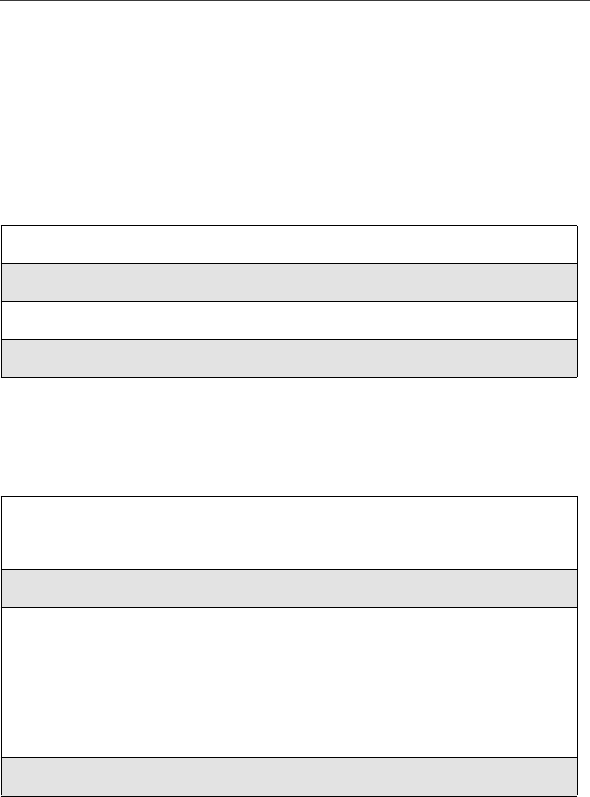
149
Settings
Return to Home
You can control the amount of time that the recent call screen displays after a
call. You can set different timeouts (30 seconds, 1 min, 5 min, or 10 min) for
phone calls and private calls:
•After Phone —Set the time that the recent calls screen displays after a
phone call.
•After Prvt/Group —Set the time that the recent calls screen displays after
a private or group call.
To set the recent calls timeout.:
Voice Volume
Voice Volume sets the volume of the sound coming from your phone’searpiece
or speaker:
1
From the Initial Setup screen, press Rto scroll to Return to Home.
2
Press Bunder CHANGE.
3
Press Sto scroll to the desired display option.
4
Press Bunder SELECT.
1
From the Voice Volume screen, highlight Earpiece Vol to set the
earpiece volume, or press Rto scroll to Speaker Vol to set the speaker
volume.
2
Press Bunder CHANGE.
3
Toselectavolumelevel:
Press Tto raise of lower the volume setting.
Or,
Press the Volume Control keys on the side of your phone.
4
Press Bunder OK.

150
www.motorola.com/iden
Tkgrp (Talkgroup) Settings
Tkgrp Settings enables you to set certain Talkgroup options. See “Group Call”
on page 88 for more information.
Service Status
The Service Status screen shows the status of your phone’s services. This screen
is for information only; no options can be set.
Styles
The Styles feature enables you to save a group of settings for call and message
notification, screen display, and call answering features. You save your
selections as a “style”and access them at any time. You can store up to ten
styles.
You may want to use this feature to create a style for use in your car, or in
meetings, for example.
Each style contains the following settings:
•Ring/Vibe —controls how your phone rings and vibrates when you
receive calls and other messages. See “Ring/Vibe”on page 134.
•Backlight —controls how long your phone’s backlight stays on. See
“Setting Backlight Timer”on page 144.
•Display —controls the size of the text in the text display area. See “Setting
Text Display”on page 145.
•Call Filter —enables you to set your phone to not ring or vibrate when
you receive some or all calls, messages, and alerts. See “Setting Call
Filtering”on page 153.
•Auto Answer —sets your phone to automatically answer an incoming call
after a specified number of rings. When this feature is turned on, the phone
answers by connecting you to the caller; it does not send the call to Voice
Mail.
Using the Styles feature, you can create styles, edit styles, view a style’s
properties, delete styles, activate any style you have created, or turn off the
active style.
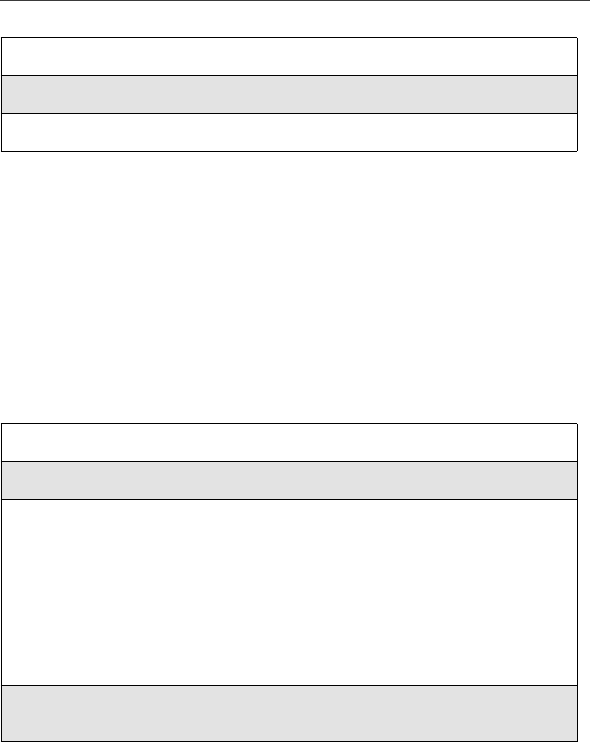
151
Styles
To access the Styles Menu:
From the Styles Menu, you can:
•activate a style or turn off the currently active style
•create a new style
•access the Styles menu for more Styles functions
Creating a Style
When you create a style, you give it a name and set the features of that style. The
name of the style then appears on the Styles Menu.
To create a style:
1
From the Ready screen, press m.
2
Press Rto scroll to Styles.
3
Press Bunder SELECT.
1
From the Styles Menu screen, press Rto scroll to [New Style].
2
Press Bunder SELECT.
3
Assign a name to the style you are creating:
In the Name screen, use the alphanumeric keypad to enter the name you
want to give the style.
As you type, you can delete a letter by pressing Aunder DELETE. To
create a space, press Ponce.
Press Bunder OK.
4
In the New screen, press Rto scroll through the settings for each style
option.
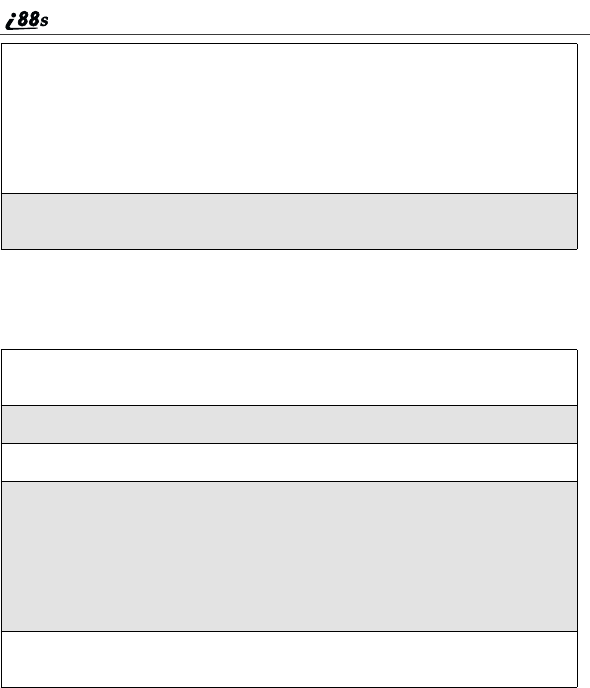
152
www.motorola.com/iden
Editing a Style
To change the settings of a style:
Activating a Style
When you access the Styles Menu, a check mark appears to the left of the name
of the style that is currently active on your phone. If no style is active, the check
mark appears next to Off.
5
To change any style option:
Press Rto highlight the option.
Press Bunder CHANGE or SELECT.
Use the screens that appear to make your changes.
6
When all the style options have the settings you want, press Aunder
DONE.
1
From the Styles Menu screen, press Rto scroll to the name of the
style you want to edit.
2
Press mto access the Styles Action menu.
3
Press Rto scroll to Edit and press Bunder SELECT.
4
To change any style option:
Press Rto highlight the option.
Press Bunder CHANGE or SELECT.
Use the screens that appear to make your changes.
5
When all the style options have the settings you want, press Aunder
DONE.
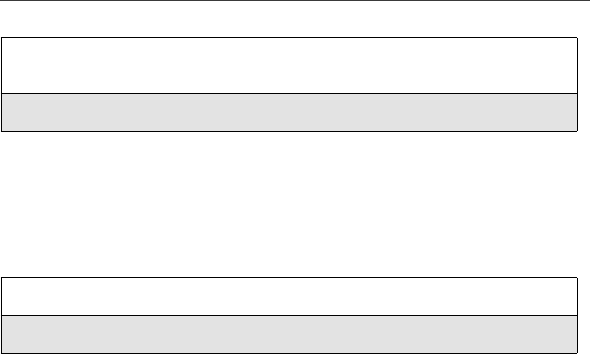
153
Styles
To activate a style:
The style immediately becomes active on your phone.
Turning Off a Style
To turn off a style without activating another style:
Using the Styles Actions Menu
When you highlight a style on the Styles Menu, you can then access the Styles
Actions menu for additional Styles functions.
To access the Styles Actions menu, press mfrom the Styles menu.
The Styles menu provides the following options:
•View —view settings of the highlighted style.
•Change —activate the highlighted style.
•Edit —edit the settings of the highlighted style.
•New —create a new style.
•Delete —delete the highlighted style.
•Delete All —delete all styles.
Setting Call Filtering
The Call Filter feature enables you to control which calls, messages, and alerts
your phone responds to, and which it ignores.
From the Call Filter screen, you set separate filtering options for phone calls,
Private and Group calls, alerts, and messages:
1
From the Styles Menu screen, press Rto scroll to the name of the
style you want to activate.
2
Press Bunder SELECT.
1
From the Styles Menu screen, press Rto scroll to Off.
2
Press Bunder SELECT.
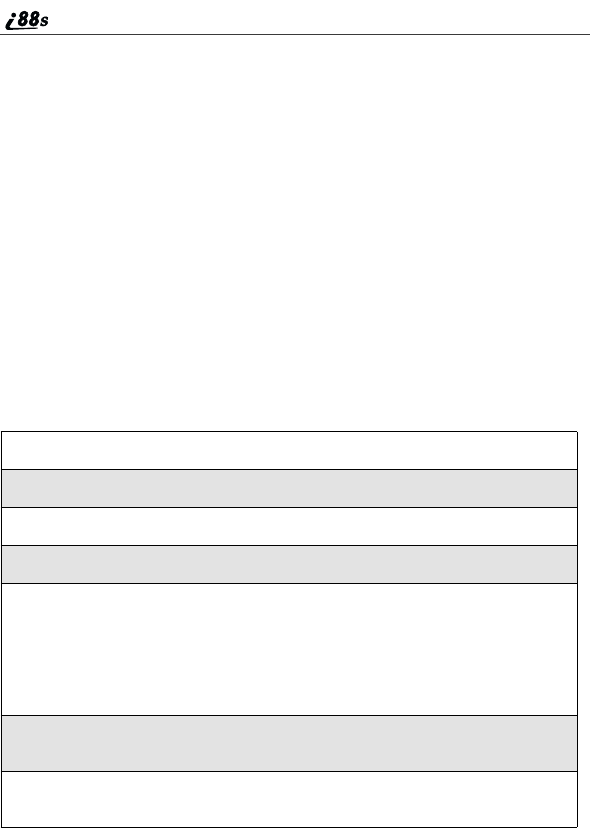
154
www.motorola.com/iden
•Phone —sets filtering options for phone calls.
•Prvt/Grp —sets filtering options for Private and Group calls.
•Alerts —sets filtering options for call alerts.
•Notifications —sets filtering options for messages.
Setting Phone Call Filtering
Call Filter enables you to set your phone responds to all calls, no calls, or only
calls from some or all numbers in your Phonebook:
•Off sets your phone notify you of all calls.
•All sets your phone to ignore all calls.
•All Phonebook sets your phone to notify you only of calls from the
numbers stored in your Phonebook.
•Some Phonebook sets your phone to notify you only of calls from
numbers you select from your Phonebook. You may choose up to five
Phonebook entries.
To choose Phonebook entries that you want your phone to respond to calls from:
1
From the Call Filter screen, press Rto scroll to Phone.
2
Press Bunder CHANGE.
3
Press Rto scroll Some Phonebook.
4
Press Bunder SELECT. The entries stored in your Phonebook appear.
5
To select a Phonebook entry as one you want to your phone to respond
to calls from, press Sto scroll the Phonebook entry and press B
under SELECT.
A check mark appears next to each selected Phonebook entry. You may
select up to five Phonebook entries.
6
To remove a selected Phonebook entry from the list, press Sto scroll
thenameandpressBunder SELECT.
7
When you have selected the Phonebook entries you want, press A
under DONE.

155
Shortcuts
Setting Private and Group Call Filtering
Setting Prvt/Grp to On sets your phone to ignore all Private and Group calls.
Setting Prvt/Grp to Off sets your phone to respond to all Private and Group
calls.
Setting Alert Filtering
Setting Alerts to On sets your phone to ignore all call alerts. Setting Alerts to
Off sets your phone to respond to all call alerts.
Setting Message Notification Filtering
Call Filter enables you to set your phone to notify you of some types of
messages, all types of messages, or no messages:
•Off allows your phone to notify you of all messages.
•Voice Messages allows your phone to notify you of Voice Mail messages.
•Text Messages allows your phone to notify you of Text Messages
messages.
•All prevents your phone from notifying you of all messages.
Call Filter can prevent your phone from ringing or vibrating when you receive a
message. Your display screen will still indicate that you have messages.
Shortcuts
The Shortcuts feature enables you to access most menu or submenu options in
your phone by pressing a numeric button on the keypad or speaking a voice
name for the shortcut. You create the shortcut to the menu by assigning a
number to it and then access the menu by pressing the number.
Creating a Shortcut
1
Navigate to the menu item to which you want to create a shortcut. For
example, if you wanted to create a shortcut to Ring/Vibe.
From the Ready screen, press m,thenpressRto scroll to Settings.
Press Bunder SELECT. Ring/Vibe is now highlighted in the Settings
screen.
2
Press and hold mfor about 2 seconds.
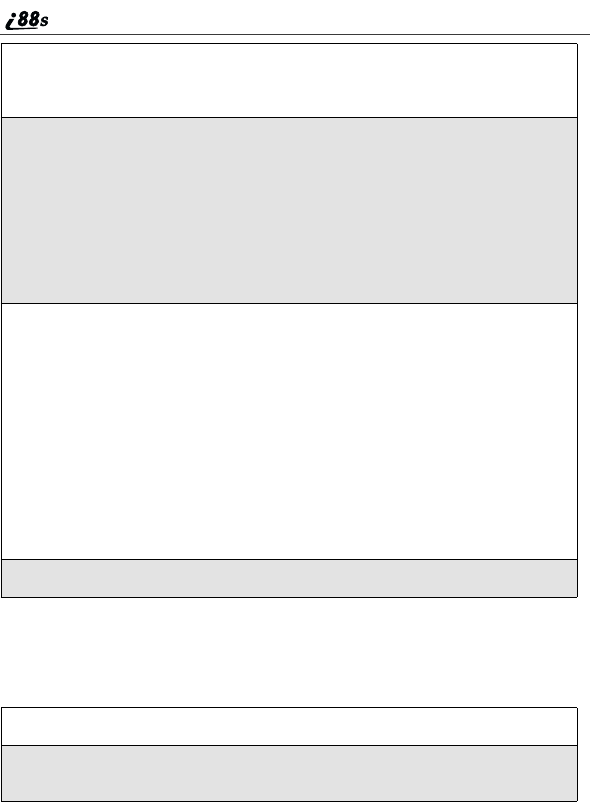
156
www.motorola.com/iden
Using a Shortcut
To use a shortcut to access a menu:
3
A confirmation screen displays showing the name of the menu item to
which you want to create a shortcut. To proceed with assigning the
shortcut, press Aunder YES.
4
A screen displays showing the assigned shortcut number.
If you want to change the shortcut number:
Press Bunder CHANGE.
Press Aunder DELETE to erase the assigned number.
Enter the desired number on your keypad and press Bunder OK.
5
If you want to record a voice name for that shortcut:
Press Rto highlight the Voice field.
Press Bunder RECORD.
As directed by the screen prompts, say and repeat the name you want to
assign to the shortcut. Speak clearly into the microphone.
An )icon appears in the Voice field indicating that the voice name has
been recorded.
USER TIP: For best results, record in a quiet environment.
6
Press Aunder DONE.
1
From the Ready screen, press m.
2
Press the number assigned to the shortcut. You have 2 seconds to do this
after pressing m.
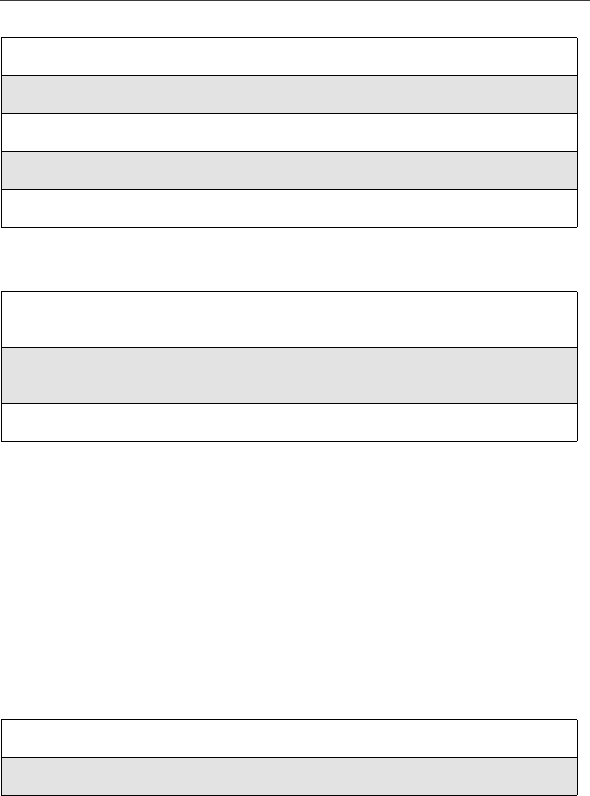
157
Shortcuts
Or,
Or, if you have assigned the shortcut a voice name:
Using the Shortcut Menu
The Shortcut Menu enables you to manage your shortcuts with the following
options.
•New —view instructions for assigning a shortcut.
•Edit —edit a shortcut name and key number.
•Reorder —assign existing shortcuts to a different key number.
•Delete —delete any highlighted Shortcut.
•Delete All —delete all stored Shortcuts.
To access the Shortcut menu:
1
From the Ready screen, press m.
2
Press Rto scroll to Shortcuts.
3
Press Bunder SELECT.
4
Press Sto scroll to the shortcut you want to use.
5
Press Bunder GOTO.
1
From the Ready screen, press and hold ton the side of your phone
until the Say Name Now screen appears.
2
Say the voice name assigned to the shortcut into your phone’s
microphone.
3
Your phone will play the voice name back to you.
1
From the Ready screen, press m.
2
Press Rto scroll to Shortcuts.

158
www.motorola.com/iden
3
Press Bunder SELECT.
4
Press m.
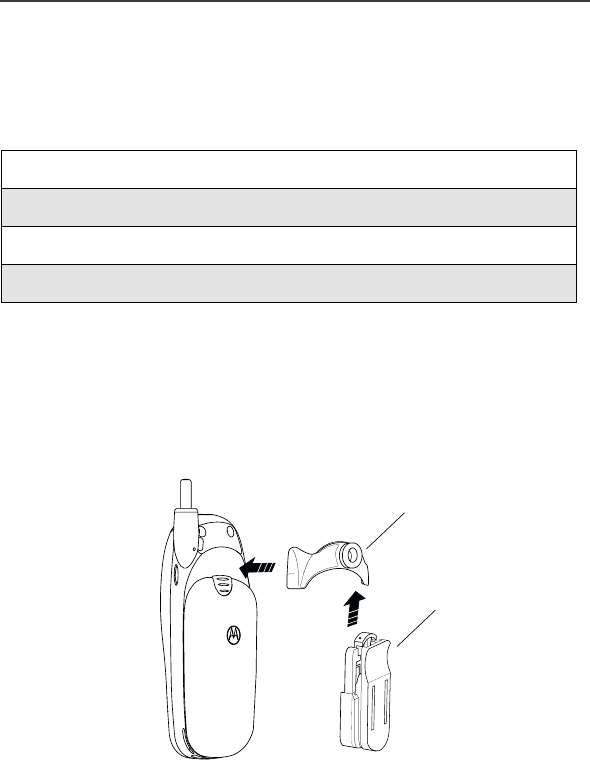
159
Accessories
To order additional accessories, log on to our Web site at: www.motorola.com/
store/iden or contact your Motorola Authorized Retailer.
This section includes the following topics:
Wearable Carrying Solutions
Swivel Carry Clip
The Swivel Carry Clip provides a convenient means by which to carry your i88s
phone with you. It consists of the Phone Clip and the Belt Clip.
Wearable Carrying Solutions Page 159
Batteries Page 161
Travel Charger Page 162
Data Accessories Page 164
Phone Clip
Belt Clip
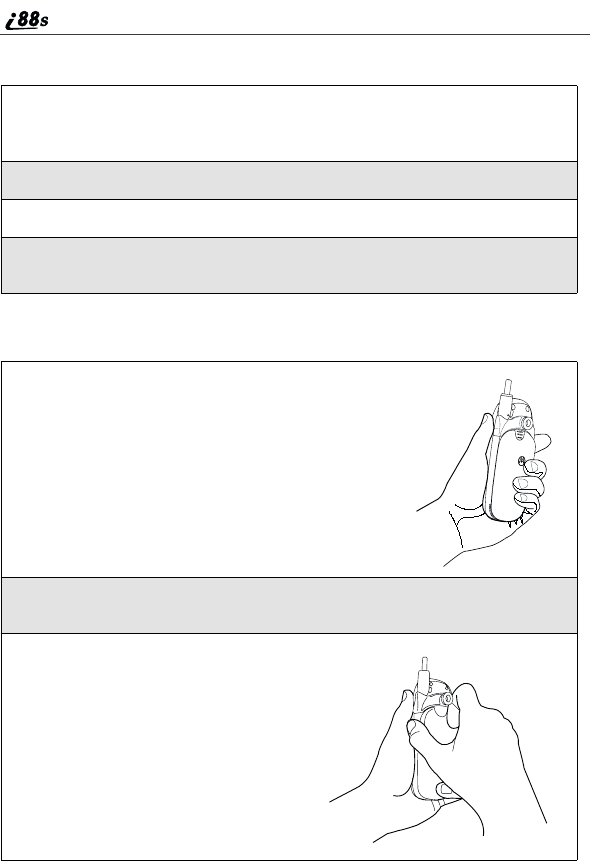
160
www.motorola.com/iden
Using the Swivel Carry Clip
Removing the Swivel Carry Clip
1
Attach the Phone Clip to the phone.
USER TIP: Start with the antenna side of the clip.
2
Slide the Belt Clip onto the Phone Clip until you hear it click.
3
Attach the Swivel Carry Clip (Phone Clip and Belt Clip) to your belt.
4
To release phone from belt clip, push the button on the top of the belt
clip.
1
Hold the phone securely in your left hand.
2
Curl the right hand index finger and place the outer edge of the finger
against the knob of the Phone Clip.
3
Place the thumb of your right hand
on the side of the phone, directly
below the left side of the Phone
Clip.
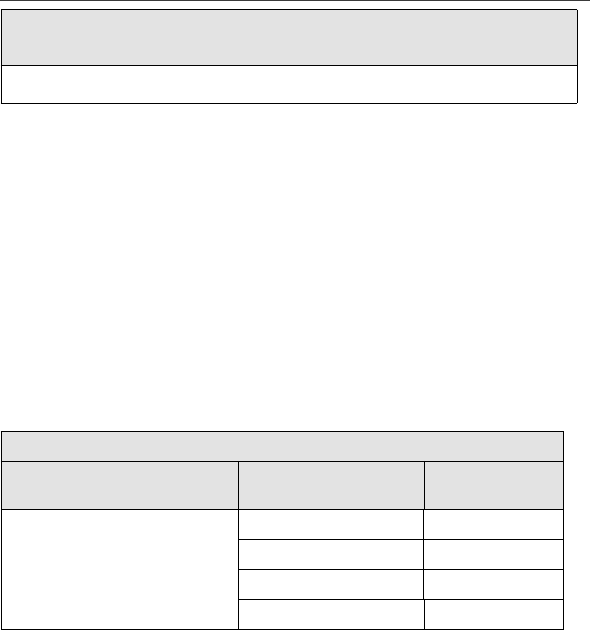
161
Batteries
Batteries
For best results, charge the batteries within the temperature range of 10oCto
40oC(50
oF to 104oF).
Prolonged charging is not recommended. For battery charging guidelines, see
Table below.
Charging Lithium Ion Batteries
Table 1 provides the approximate time to fully charge a battery using a
Motorola iDEN Approved Lithium Ion battery charger. Check the kit number on
your battery and charger to determine the appropriate charging time.
Table 1: Battery Charging Times
NOTE:Charging times are based on a fully discharged battery.
For optimal battery life, use a Motorola iDEN Approved Lithium Ion battery
charger with your Motorola iDEN Lithium Ion battery. Other chargers may not
fully charge your Lithium Ion battery.
Battery Operating Instructions
•Extreme temperatures will degrade battery performance. Do not store your
battery where temperatures exceed 60°C(140°F) or fall below -20°C(4°F).
4
Squeeze the right hand thumb and index finger together until the clip
snaps out of the retaining slot on the left side
5
Remove the clip.
MOTOROLA BATTERIES Charging Time to 100%
Description/Chemistry Rapid Charger Mid-Rate
Charger
Slim Li Ion
High Performance Li Ion
Extra Capacity Li Ion
Maximum Capacity Li Ion
2 hours 30 minutes 4 hours
2 hours 30 minutes 5 hours
2 hours 30 minutes 7 hours
3 hours 8 hours
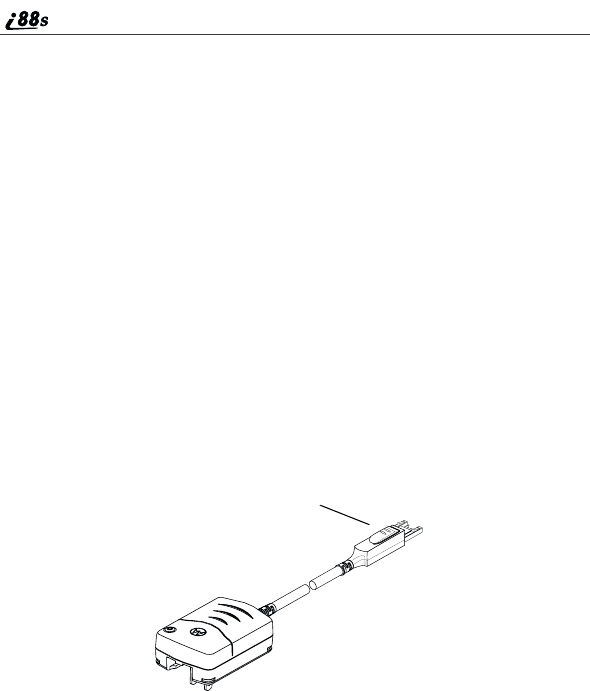
162
www.motorola.com/iden
•Lithium Ion batteries have a self discharge rate and without use, will lose
about 1% of its charge per day.
•The battery capacity will be degraded if stored for long periods while fully
charged. If long term storage is required, store at half capacity.
•The Motorola iDEN Approved Lithium Ion chargers will provide optimum
performance. Other chargers may not fully charge your iDEN Lithium Ion
battery or may yield reduced number of lifetime charge cycles.
•If the battery appears inoperative, the internal protection circuitry may
have been activated. Remove the battery from the phone and put it into the
charger for several minutes to reset the circuitry.
•When batteries are not in use, always store them in the plastic safety tray.
Travel Charger
You can charge a battery from an AC outlet. On one end of the Travel Charger,
an accessory connector attaches to the bottom of the phone. At the other (AC
outlet) end of the device, there is a compact housing that contains the plug-in
power supply.
NOTE: Additional adaptor plugs to accommodate various International
power outlets can be purchased separately.
Accessory
connector

163
Travel Charger
Using the Travel Charger
1
While holding the phone with its keypad facing up, insert the accessory
connector (with the Motorola logo facing you) into the bottom of the
phone until you hear a click.
2
Plug the Travel Charger transformer into an AC wall outlet.
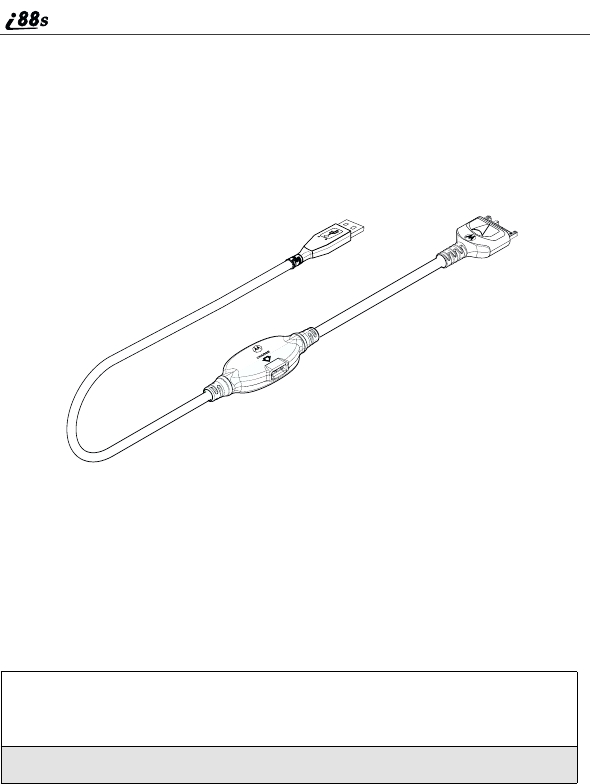
164
www.motorola.com/iden
Data Accessories
Universal Serial Bus (USB) Cable
The Universal Serial Bus (USB) cable allows you to transfer data between your
i88sphone and a laptop or desktop computer. This cable accommodates both
circuit and packet data applications. The cable features a charging port which
enables you to charge the phone while transferring data.
To use the USB cable, your laptop or desktop computer must have a driver
installed for this purpose.
The USB cable is authorized for use with the following operating systems only
when used in conjunction with Motorola/iDEN created or approved PC
applications and one of the following operation systems: Windows 98 SE,
Windows 2000, Windows ME.
Using the USB
1
While holding the phone with its keypad facing up, insert the accessory
connector (with the Motorola logo facing you) into the bottom of the
phone until you hear a click.
2
Insert the data plug directly into your laptop or desktop computer.
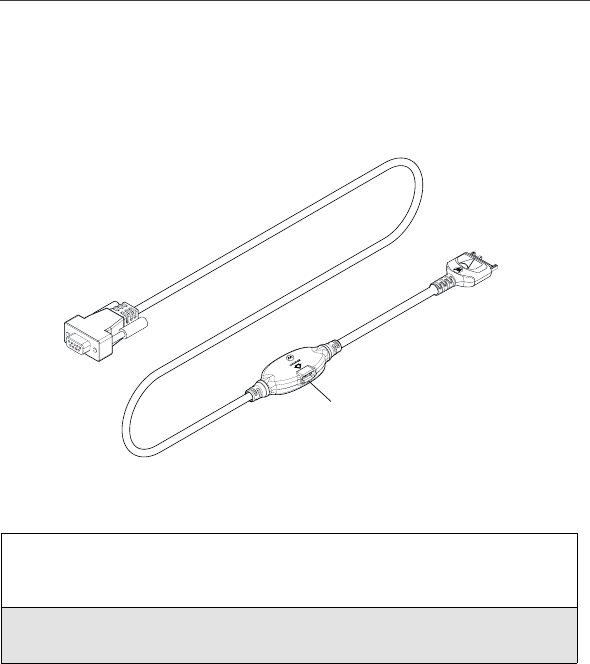
165
Data Accessories
RS232 Data Cable
The RS232 Data Cable facilitates quick and easy data synchronization between
your i88sphone and a PC. This cable accommodates both circuit and packet
data applications. The cable also features a charging port. Any applicable phone
charger may be used to charge the phone simultaneously.
Using the Data Cable
1
While holding the phone with its keypad facing up, insert the accessory
connector (with the Motorola logo facing you) into the bottom of the
phone until you hear a click.
2
Insert the data plug directly into your PC or one of the many other data
compatible iDEN accessories.
Port for charging source
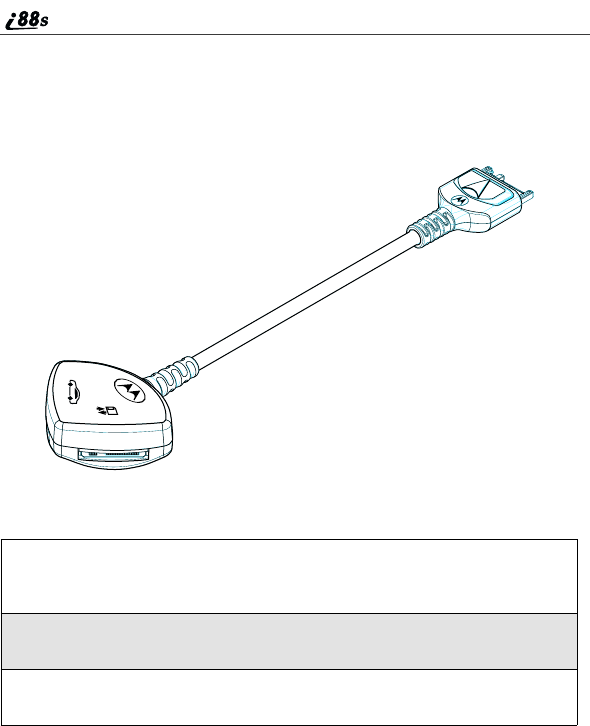
166
www.motorola.com/iden
Dual Port Adapter Cable
The Dual Port Adapter Cable enables in-vehicle communications and charging
of the i88sphone via the Hands-Free Car kit, while being simultaneously
connected for data operations.
Using the Dual Port Adapter Cable
1
Insert the flat end of the Dual Port Adapter Cable cord into the bottom
connector of the i88sphone. Make sure the Motorola logo is facing
upward.
2
Insert the round end of the RS232 Data Cable into the receptacle on the
Dual Port Adapter Cable labeled “Data”.
3
Insert the Hands-Free Car Kit into the receptacle on the Dual Port
Adapter Cable labeled “Car Kit”.
DATA
CAR KIT
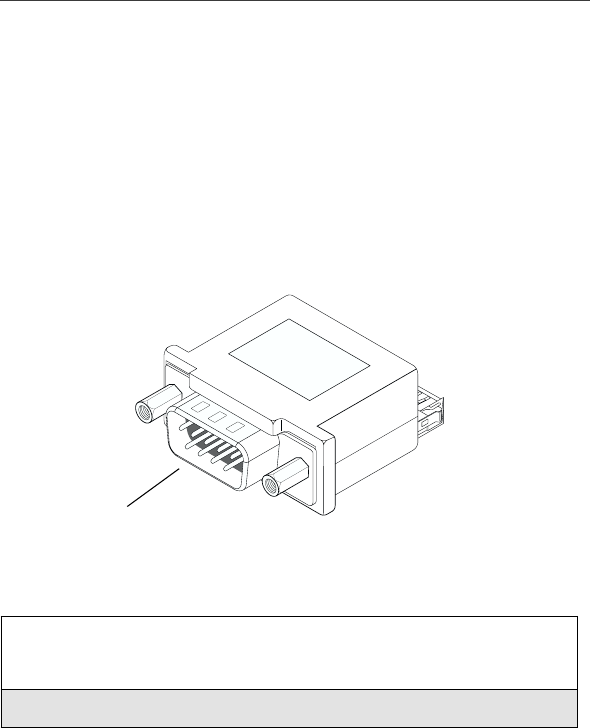
167
Data Accessories
PDA Converter Plugs
The PDA (Pocket Digital Assistant) plug is a convenient way to connect your
i88sphone to many types of PDA devices, both PC and Windows CE
compatible.
Below is the list of adapters which can be used with your i88sphone:
•Palm IIITM/VIITM Cable Adapter
•Palm VTM Cable Adapter
•Generic Pocket Digital Assistant (PDA) Male-Female Serial Adapter (Not
Shown)
Using the PDA Converter Plug
1
While holding the phone with its keypad facing up, insert the accessory
connector (with the Motorola logo facing you) into the bottom of the
phone until you hear a click.
2
Connect the opposite end of the data cable to the PDA converter.
Plam III/IV or Palm V
Type Plug

168
www.motorola.com/iden
3
Connect other end of PDA converter to the mating connector of the
PDA device.
4
If you are using the NTN8993 PDA adapter, connect the other end of
the adapter to the PDA’s supplied data synchronization cradle and place
the PDA into the cradle.
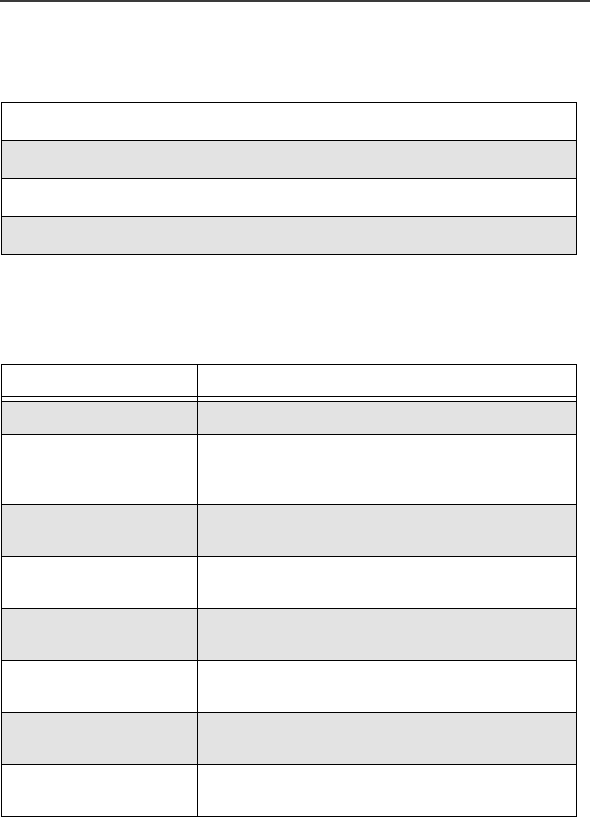
169
Other Important Information
This section includes the following topics:
Understanding Status Messages
The following table lists and describes the status messages.
Understanding Status Messages Page 169
Safety and General Information Page 172
Limited Warranty Information Page 188
Patent and Trademark Information Page 196
Status Messages Message Description
Number Not in Service The number that you entered is not valid.
User Not Available The phone that you called is either busy,
out-of-coverage, or turned off. Please try again
later.
User Not Authorized The person that you called has not purchased
this service.
Please Try Later This service is temporarily not available.
Please try again later.
User Busy in Private The phone that you called is busy in a Private
call.
User Busy in Data The phone that you called is busy in a Dial-Up
call.
Service Restricted This service was restricted by your service
provider, or this service was not purchased.
Service Not Available This feature is not available on the current
network.
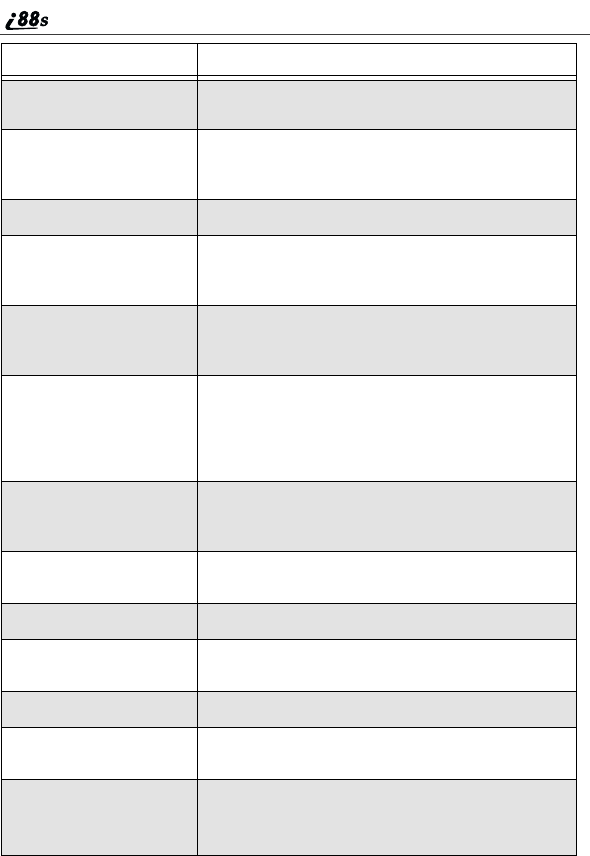
170
www.motorola.com/iden
System Busy Try Later The system is experiencing heavy traffic.
Please try again later.
Service Conflict This service cannot be enabled because an
incompatible service has already been turned
on.
Please Try Again An error occurred. Please try again.
Self Check Error A fault was detected with your phone. If this
error recurs, note the error code and contact
Customer Care.
Self Check Fail An operational fault was detected with your
phone. Note the numeric code, turn your phone
off, and contact Customer Care.
PIN Blocked
Call Your Provider
The incorrect PIN was entered three
consecutive times. You will be unable to place
or receive calls on your i88sphone. Call your
service provider to have them obtain the PIN
Unblocking Key (PUK) code.
Insert SIM Your SIM Card is not being detected. Please
check to ensure that you have inserted the SIM
Card.
Check SIM Card Please check your SIM Card to make sure it
has been inserted properly.
Wrong PIN You have entered an incorrect PIN number.
Wrong Code Your phone will not accept a SIM card that is
not from your carrier.
Enter PIN Please enter your 4-8 digit SIM Pin code.
Enter Unlock Code Auto Phonelock is activated. Enter your unlock
code.
New Browser
Message
Memory Full!
Warns of low memory for Net Alerts
Status Messages Message Description
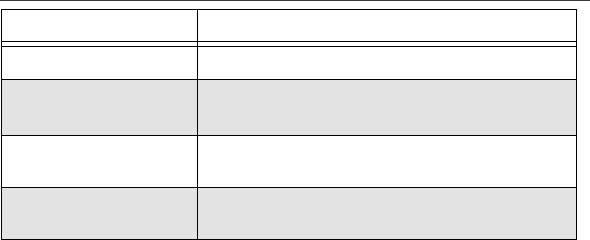
171
Understanding Status Messages
Scanning for Satellites Searching for GPS satellites.
Unable to Located
Sats
Could not find GPS satellites.
For Update Visit: Directs you to update GPS satellite almanac
data.
Technical Error A problem occurred phone’sGPScircuitry.If
this error occurs, contact Customer Care.
Status Messages Message Description
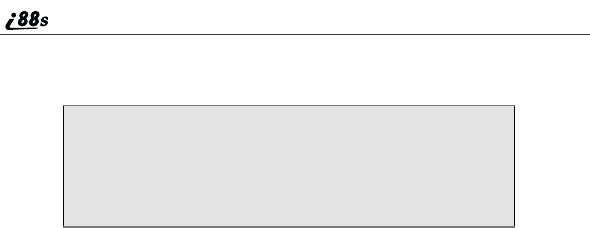
172
www.motorola.com/iden
Safety and General Information
RF Operational Characteristics
Your radio product contains a radio frequency transmitter to convey the
information you wish to send as well as occasional automatic signals used to
sustain connection to the wireless network, and a receiver which enables you to
receive communication and connection information from the network.
PORTABLE RADIO PRODUCT OPERATION AND
EME EXPOSURE
Your Motorola radio product is designed to comply with the following RF
exposure standards and guidelines:
•United States Federal Communications Commission, Code of Federal
Regulations; 47 CFR part 2 sub-part J
•American National Standards Institute (ANSI) / Institute of Electrical and
Electronics Engineers (IEEE). C95. 1-1992
•Institute of Electrical and Electronics Engineers (IEEE). C95. 1-1999
Edition
•International Commission on Non-Ionizing Radiation Protection (ICNIRP)
1998
•Ministry of Health (Canada). Safety Code 6. Limits of Human Exposure to
Radiofrequency Electromagnetic Fields in the Frequency Range from 3
kHz to 300 GHz, 1999.
•Australian Communications Authority Radiocommunications
(Electromagnetic Radiation - Human Exposure) Standard 2001
•ANATEL, Brasil Regulatory Authority, Resolution 256 (April 11, 2001)
“additional requirements for SMR, cellular and PCS product certification.”
To assure optimal radio product performance and make sure human
exposure to radio frequency electromagnetic energy is within the guidelines
set forth in the above standards, always adhere to the following procedures:
IMPORTANT INFORMATION ON SAFE AND
EFFICIENT OPERATION.
READ THIS INFORMATION BEFORE USING
YOUR INTEGRATED MULTI-SERVICE
PORTABLE RADIO.

173
PORTABLE RADIO PRODUCT OPERATION AND EME EXPOSURE
Phone Operation
When placing or receiving a phone call, hold your radio product as you would a
wireline telephone. Speak directly into the microphone.
Two-way radio operation
When using your radio product as a traditional two-way
radio, hold the radio product in a vertical position with
themicrophoneonetotwoinches(2.5to5cm)away
from the lips.
Body-worn operation
To maintain compliance with FCC RF exposure guidelines, if you wear a radio
product on your body when transmitting, always place the radio product in a
Motorola approved clip, holder, holster, case or body harness for this
product. Use of non-Motorola-approved accessories may exceed FCC RF
exposure guidelines. If you do not use a Motorola approved body-worn
accessory and are not using the radio product in the intended use positions
along side the head in the phone mode or in front of the face in the two-way
radio mode, then ensure the antenna and the radio product are kept the
following minimum distances from the body when transmitting
•Phone or Two-way radio mode: one inch (2.5 cm)
•Data operation using any data feature with or without an accessory
cable: one inch (2.5 cm)
Antenna Care
Use only the supplied or an approved replacement antenna. Unauthorized
antennas, modifications, or attachments could damage the radio product and
may violate FCC regulations.
DO NOT hold the antenna when the radio product is “IN USE”.Holding the
antenna affects call quality and may cause the radio product to operate at a
higher power level than needed.

174
www.motorola.com/iden
Approved Accessories
For a list of approved Motorola accessories call 1-800-453-0920, visit our
website at www.mot.com/iden, or look in the accessory section of this manual.
ALL MODELS WITH FCC ID AZ489FT5815 MEET THE GOVERNMENT’S
REQUIREMENTS FOR EXPOSURE TO RADIO WAVES.
Your wireless phone is a radio transmitter and receiver. It is designed and manufactured not to
exceed the emission limits for exposure to radiofrequency (RF) energy set by the Federal
Communications Commission of the U.S. Government. These limits are part of comprehensive
guidelines and establish permitted levels of RF energy for the general population. The guidelines
are based on standards that were developed by independent scientific organizations through
periodic and thorough evaluation of scientific studies. The standards include a substantial safety
margin designed to assure the safety of all persons, regardless of age and health.
The exposure standard for wireless mobile phones employs a unit of measurement known as the
Specific Absorption Rate, or SAR. The SAR limit set by the FCC is 1.6W/kg.*Tests for SAR are
conducted using standard operating positions reviewed by the FCC with the phone transmitting at
its highest certified power level in all tested frequency bands. Although the SAR is determined at
the highest certified power level, the actual SAR level of the phone while operating can be well
below the maximum value. This is because the phone is designed to operate at multiple power
levels so as to use only the power required to reach the network. In general, the closer you are to a
wireless base station antenna, the lower the power output.
Before a phone model is available for sale to the public, it must be tested and certified to the FCC
that is does not exceed the limit established by the government-adopted requirement for safe
exposure. The tests are performed in positions and locations (e.g., at the ear and worn on the body)
as required by the FCC for each model. The highest SAR value for this model phone when tested
for use at the ear is 1.24 W/kg and when tested on the body, as described in this user guide, is
0.267 W/kg during voice transmission using Phone Mode and 0.85 W/kg during packet data
transmission. (Body-worn measurements differ among phone models, depending upon available
accessories and FCC requirements.) While there may be differences between the SAR levels of
various phones and at various positions, they all meet the government requirement for safe
exposure.
The FCC has granted an Equipment Authorization for this model phone with all reported SAR
levels evaluated as in compliance with the FCC RF exposure guidelines. SAR information on this
model phone is on file with the FCC and can be found under the Display Grant section of http://
www.fcc.gov/oet/fccid after searching on FCC ID AZ489FT5815.
Additional information on Specific Absorption Rates (SAR) can be found on the Cellular
Telecommunications Industry Association (CTIA) web-site at http://www.wow-com.com.
______________________________________
* In the United States and Canada, the SAR limit for mobile phones used by the public is 1.6
watts/kg (W/kg) averaged over one gram of tissue. The standard incorporates a substantial margin
of safety to give additional protection for the public and to account for any variations in
measurements.

175
Electro Magnetic Interference/Compatibility
Electro Magnetic Interference/Compatibility
NOTE: Nearly every electronic device is susceptible to electromagnetic
interference (EMI) if inadequately shielded, designed or
otherwise configured for electromagnetic compatibility.
Facilities
To avoid electromagnetic interference and/or compatibility conflicts, turn off
your radio product in any facility where posted notices instruct you to do so.
Hospitals or health care facilities may be using equipment that is sensitive to
external RF energy.
Aircraft
When instructed to do so, turn off your radio product when on board an aircraft.
Any use of a radio product must be in accordance with applicable regulations
per airline crew instructions.
Medical Devices
Pacemakers
The Advanced Medical Technology Association (AdvaMed) recommends that a
minimum separation of 6 inches (15 cm) be maintained between a handheld
wireless radio product and a pacemaker. These recommendations are consistent
with those of the U.S. Food and Drug Administration.
Persons with pacemakers should:
•ALWAYS keep the radio product more than 6 inches (15 cm) from their
pacemaker when the radio product is turned ON.
•Not carry the radio product in a breast pocket.
•Use the ear opposite the pacemaker to minimize the potential for
interference.
•Turn the radio product OFF immediately if you have any reason to suspect
that interference is taking place.
Hearing Aids
Some digital wireless radio products may interfere with some hearing aids. In
the event of such interference, you may want to consult your hearing aid
manufacturer to discuss alternatives.
Other Medical Devices
If you use any other personal medical device, consult the manufacturer of your
device to determine if it is adequately shielded from RF energy. Your physician
may be able to assist you in obtaining this information.

176
www.motorola.com/iden
Use While Driving
Check the laws and regulations on the use of radio products in the area where
you drive. Always obey them.
When using the radio product while driving, please:
•Give full attention to driving and to the road.
•Use hands-free operation, if available.
•Pull off the road and park before making or answering a call if driving
conditions so require.
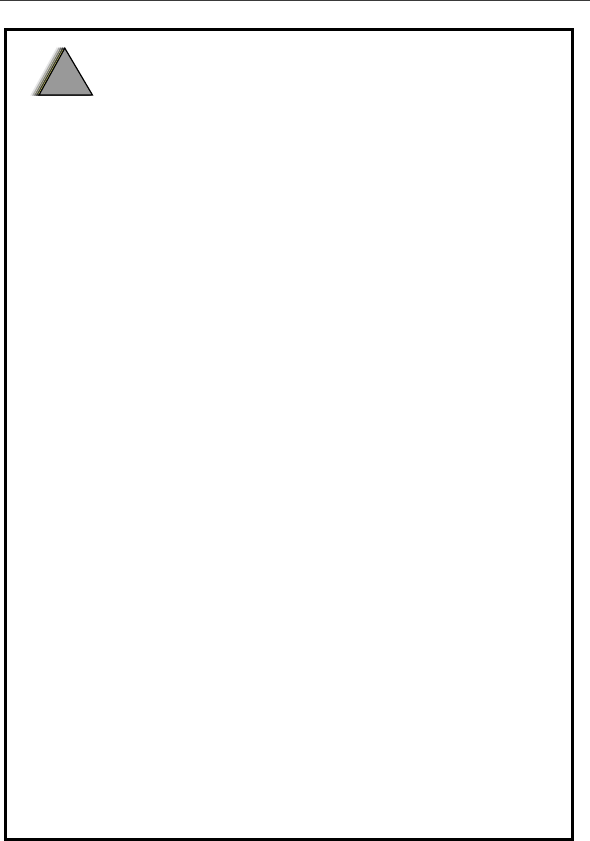
177
Operational Warnings
Operational Warnings
For Vehicles with an Air Bag
Do not place a portable radio product in the area over the air bag or in the
air bag deployment area. Air bags inflate with great force. If a portable
radio is placed in the air bag deployment area and the air bag inflates, the
radio product may be propelled with great force and cause serious injury to
occupants of the vehicle.
Potentially Explosive Atmospheres
Turn off your radio product prior to entering any area with a potentially
explosive atmosphere, unless it is a radio product type especially qualified
for use in such areas as “Intrinsically Safe”(for example, Factory Mutual,
CSA, or UL approved). Do not remove, install, or charge batteries in such
areas. Sparks in a potentially explosive atmosphere can cause an explosion
or fire resulting in bodily injury or even death.
NOTE: The areas with potentially explosive atmospheres referred to
above include fueling areas such as below decks on boats, fuel or
chemical transfer or storage facilities, areas where the air
contains chemicals or particles, such as grain, dust or metal
powders, and any other area where you would normally be
advised to turn off your vehicle engine. Areas with potentially
explosive atmospheres are often but not always posted.
Blasting Caps and Areas
To avoid possible interference with blasting operations, turn off your radio
product when you are near electrical blasting caps, in a blasting area, or in
areas posted: “Turn off two-way radio”. Obey all signs and instructions.
!
W A R N I N G
!
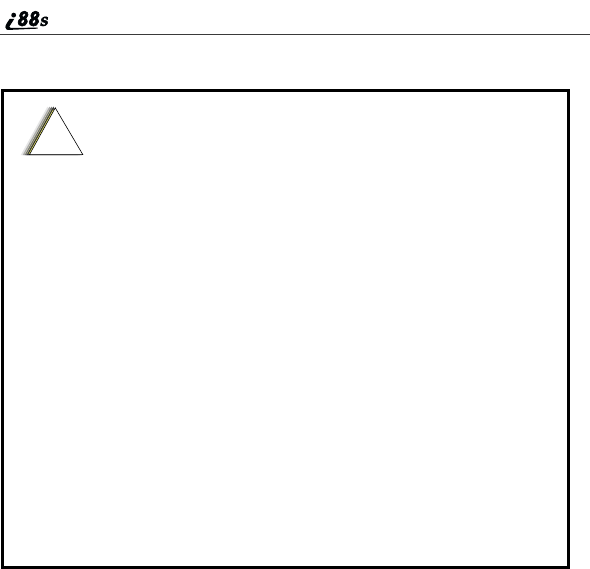
178
www.motorola.com/iden
Cleaning and Drying Considerations
Using a leather carry case may help protect the surfaces and help prevent liquids
(e.g., rain) from entering into the interior of the radio product. This product is
not water proof, and exposing the unit to liquids may result in permanent
damage to the unit.
Ifyourradioproductinteriorgetswet,thendonottrytoacceleratedryingwith
the use of an oven or a dryer as this will damage the radio product and void the
warranty. Instead, do the following:
1. Immediately power off the radio product.
2. Remove Battery and SIM card (if so equipped) from radio product.
3. Shake excess liquid from radio product.
4. Place the radio product and battery in an area that is at room temperature
and has good air flow.
Operational Cautions
Antennas
Do not use any portable radio product that has a damaged antenna. If
a damaged antenna comes into contact with your skin, a minor burn can
result.
Batteries
All batteries can cause property damage and/or bodily injury, such as burns
if a conductive material such as jewelry, keys, or beaded chains touches
exposed terminals. The conductive material may complete an electrical
circuit (short circuit) and become quite hot. Exercise care in handling any
charged battery, particularly when placing it inside a pocket, purse, or other
container with metal objects.
!
C a u t i o n

179
Operational Cautions
5. Let the radio product, battery, and SIM card dry for 72 hours before
reconnecting the battery and/or powering on the radio product.
If the radio product does not work after following the steps listed above, contact
your dealer for servicing information.
Clean the external surfaces of the radio product with a damp cloth, using a mild
solution of dishwashing detergent and water. Some household cleaners may
contain chemicals that could seriously damage the radio product. Avoid the use
of any petroleum-based solvent cleaners. Also, avoid applying liquids directly
on the radio product.
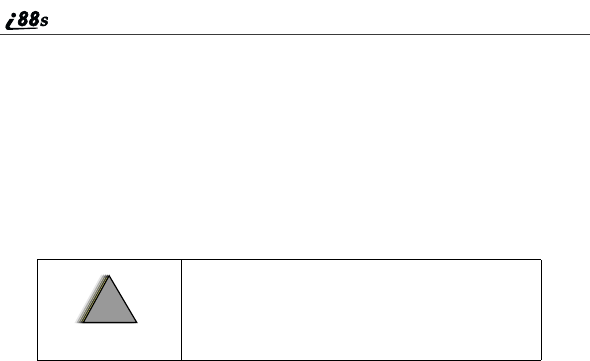
180
www.motorola.com/iden
Accessory Safety Information
IMPORTANT:
SAVE THESE ACCESSORY SAFETY INSTRUCTIONS
•Before using any battery or battery charger, read all the instructions for and
cautionary markings on (1) the battery, (2) the battery charger, which may
include a separate wall-mounted power supply or transformer, and (3) the
radio product using the battery.
•Do not expose any battery charger to water, rain, or snow as they are
designed for indoor or in-vehicle use only.
•To reduce the risk of damage to the cord or plug, pull by the plug rather
than the cord when you disconnect the battery charger from the power
source outlet.
•Do not operate any battery charger with a damaged cord or plug —replace
them immediately.
•Battery chargers may become warm during operation, but not hot. If it
becomes hot to the touch, unplug it from the power outlet immediately and
discontinue its use.
•Use of a non-recommended attachment to a battery charger may result in a
risk of fire, electric shock, or injury to persons.
•Make sure the battery charger power cord is located so that it will not be
stepped on, tripped over, or subjected to damage or stress.
•An extension cord should not be used with any battery charger unless
absolutely necessary. Use of an improper extension cord could result in a
risk of fire and electric shock. If an extension cord must be used, make sure
that:
•The pins on the plug of the extension cord are the same number, size,
and shape as those on the plug of the charger.
•The extension cord is properly wired and in good electrical condition.
•The cord size is 18AWG for lengths up to 100 feet and 16AWG for
lengthsupto150feet.
To reduce the risk of injury, charge only the
rechargeable batteries listed in the Accessories
section of this manual. Other types of batteries
may burst, causing personal injury and damage.
!
W A R N I N G
!

181
US FDA Consumer Update
•Do not operate any battery charger if it has received a sharp blow, has been
dropped, or has been damaged in any way; take it to a qualified service
technician.
•Do not disassemble a battery charger; take it to a qualified service
technician when service or repair is required. Incorrect reassembly may
result in a risk of electric shock or fire.
•Maximum ambient temperature around the power supply or transformer of
any battery charger should not exceed 40°C (104°F).
•The output power from the power supply or transformer must not exceed
the rating given on the Desktop Dual-Pocket Charger.
•The disconnection from the line voltage is made by unplugging the power
supply from the AC receptacle.
•To reduce risk of electric shock, unplug any battery charger from the outlet
before attempting any maintenance or cleaning.
For optimum charging performance, turn off the radio product while charging it
in any battery charger.

182
www.motorola.com/iden
The U.S. Food and Drug
Administration's Center for
Devices and Radiological Health
Consumer Update on Mobile
Phones
FDA has been receiving inquiries about the safety of mobile phones, including
cellular phones and PCS phones. The following summarizes what is known--
and what remains unknown--about whether these products can pose a hazard to
health, and what can be done to minimize any potential risk. This information
may be used to respond to questions.
Why the concern?
Mobile phones emit low levels of radiofrequency energy (i.e., radiofrequency
radiation) in the microwave range while being used. They also emit very low
levels of radiofrequency energy (RF), considered non-significant, when in the
stand-by mode. It is well known that high levels of RF can produce biological
damage through heating effects (this is how your microwave oven is able to
cook food). However, it is not known whether, to what extent, or through what
mechanism, lower levels of RF might cause adverse health effects as well.
Although some research has been done to address these questions, no clear
picture of the biological effects of this type of radiation has emerged to date.
Thus, the available science does not allow us to conclude that mobile phones are
absolutely safe, or that they are unsafe. However, the available scientific
evidence does not demonstrate any adverse health effects associated with the
use of mobile phones.
What kinds of phones are in question?
Questions have been raised about hand-held mobile phones, the kind that have a
built-in antenna that is positioned close to the user's head during normal
telephone conversation. These types of mobile phones are of concern because of
the short distance between the phone's antenna--the primary source of the RF--
and the person's head. The exposure to RF from mobile phones in which the
antenna is located at greater distances from the user (on the outside of a car, for
example) is drastically lower than that from hand-held phones, because a
person's RF exposure decreases rapidly with distance from the source. The
safety of so-called "cordless phones," which have a base unit connected to the
telephone wiring in a house and which operate at far lower power levels and
frequencies, has not been questioned.

183
US FDA Consumer Update
How much evidence is there that hand-held mobile phones
might be harmful?
Briefly, there is not enough evidence to know for sure, either way; however,
research efforts are on-going. The existing scientific evidence is conflicting and
many of the studies that have been done to date have suffered from flaws in their
research methods. Animal experiments investigating the effects of RF exposures
characteristic of mobile phones have yielded conflicting results. A few animal
studies, however, have suggested that low levels of RF could accelerate the
development of cancer in laboratory animals. In one study, mice genetically
altered to be predisposed to developing one type of cancer developed more than
twiceasmanysuchcancerswhentheywereexposedtoRFenergycomparedto
controls. There is much uncertainty among scientists about whether results
obtained from animal studies apply to the use of mobile phones. First, it is
uncertain how to apply the results obtained in rats and mice to humans. Second,
many of the studies that showed increased tumor development used animals that
had already been treated with cancer-causing chemicals, and other studies
exposed the animals to the RF virtually continuously--up to 22 hours per day.
For the past five years in the United States, the mobile phone industry has
supported research into the safety of mobile phones. This research has resulted
in two findings in particular that merit additional study:
1. In a hospital-based, case-control study, researchers looked for an
association between mobile phone use and either glioma (a type of brain
cancer) or acoustic neuroma (a benign tumor of the nerve sheath). No
statistically significant association was found between mobile phone use
and acoustic neuroma. There was also no association between mobile
phone use and gliomas when all types of types of gliomas were considered
together. It should be noted that the average length of mobile phone
exposure in this study was less than three years.
When 20 types of glioma were considered separately, however, an
association was found between mobile phone use and one rare type of
glioma, neuroepithelliomatous tumors. It is possible with multiple
comparisons of the same sample that this association occurred by chance.
Moreover, the risk did not increase with how often the mobile phone was
used, or the length of the calls. In fact, the risk actually decreased with
cumulative hours of mobile phone use. Most cancer causing agents
increase risk with increased exposure. An ongoing study of brain cancers
by the National Cancer Institute is expected to bear on the accuracy and

184
www.motorola.com/iden
repeatability of these results.(1)
2. Researchers conducted a large battery of laboratory tests to assess the
effects of exposure to mobile phone RF on genetic material. These
included tests for several kinds of abnormalities, including mutations,
chromosomal aberrations, DNA strand breaks, and structural changes in
the genetic material of blood cells called lymphocytes. None of the tests
showed any effect of the RF except for the micronucleus assay, which
detects structural effects on the genetic material. The cells in this assay
showed changes after exposure to simulated cell phone radiation, but only
after 24 hours of exposure. It is possible that exposing the test cells to
radiation for this long resulted in heating. Since this assay is known to be
sensitive to heating, heat alone could have caused the abnormalities to
occur. The data already in the literature on the response of the
micronucleus assay to RF are conflicting. Thus, follow-up research is
necessary.(2)
FDA is currently working with government, industry, and academic groups to
ensure the proper follow-up to these industry-funded research findings.
Collaboration with the Cellular Telecommunications Industry Association
(CTIA) in particular is expected to lead to FDA providing research
recommendations and scientific oversight of new CTIA-funded research based
on such recommendations.
Two other studies of interest have been reported recently in the literature:
1. Two groups of 18 people were exposed to simulated mobile phone signals
under laboratory conditions while they performed cognitive function tests.
There were no changes in the subjects' ability to recall words, numbers, or
pictures, or in their spatial memory, but they were able to make choices
more quickly in one visual test when they were exposed to simulated
mobile phone signals. This was the only change noted among more than 20
variables compared.(3)
2. In a study of 209 brain tumor cases and 425 matched controls, there was no
increased risk of brain tumors associated with mobile phone use. When
tumors did exist in certain locations, however, they were more likely to be
on the side of the head where the mobile phone was used. Because this

185
US FDA Consumer Update
occurred in only a small number of cases, the increased likelihood was too
small to be statistically significant.(4)
In summary, we do not have enough information at this point to assure the
public that there are, or are not, any low incident health problems associated
with use of mobile phones. FDA continues to work with all parties, including
other federal agencies and industry, to assure that research is undertaken to
provide the necessary answers to the outstanding questions about the safety of
mobile phones.
What is known about cases of human cancer that have been
reported in users of hand-held mobile phones?
Some people who have used mobile phones have been diagnosed with brain
cancer. But it is important to understand that this type of cancer also occurs
among people who have not used mobile phones. In fact, brain cancer occurs in
the U.S. population at a rate of about 6 new cases per 100,000 people each year.
At that rate, assuming 80 million users of mobile phones (a number increasing at
a rate of about 1 million per month), about 4800 cases of brain cancer would be
expected each year among those 80 million people, whether or not they used
their phones. Thus it is not possible to tell whether any individual's cancer arose
because of the phone, or whether it would have happened anyway. A key
question is whether the risk of getting a particular form of cancer is greater
among people who use mobile phones than among the rest of the population.
One way to answer that question is to compare the usage of mobile phones
among people with brain cancer with the use of mobile phones among
appropriately matched people without brain cancer. This is called a case-control
study. The current case-control study of brain cancers by the National Cancer
Institute, as well as the follow-up research to be sponsored by industry, will
begin to generate this type of information.
What is FDA's role concerning the safety of mobile phones?
Under the law, FDA does not review the safety of radiation-emitting consumer
products such as mobile phones before marketing, as it does with new drugs or
medical devices. However, the agency has authority to take action if mobile
phones are shown to emit radiation at a level that is hazardous to the user. In
such a case, FDA could require the manufacturers of mobile phones to notify
users of the health hazard and to repair, replace or recall the phones so that the
hazard no longer exists.
Although the existing scientific data do not justify FDA regulatory actions at
this time, FDA has urged the mobile phone industry to take a number of steps to
assure public safety. The agency has recommended that the industry:

186
www.motorola.com/iden
•support needed research into possible biological effects of RF of the type
emitted by mobile phones;
•design mobile phones in a way that minimizes any RF exposure to the user
that is not necessary for device function; and
•cooperate in providing mobile phone users with the best possible
information on what is known about possible effects of mobile phone use
on human health.
•At the same time, FDA belongs to an interagency working group of the
federal agencies that have responsibility for different aspects of mobile
phone safety to ensure a coordinated effort at the federal level. These
agencies are:
•National Institute for Occupational Safety and Health
•Environmental Protection Agency
•Federal Communications Commission
•Occupational Health and Safety Administration
•National Telecommunications and Information Administration
The National Institutes of Health also participates in this group.
In the absence of conclusive information about any possible
risk, what can concerned individuals do?
If there is a risk from these products--and at this point we do not know that there
is--it is probably very small. But if people are concerned about avoiding even
potential risks, there are simple steps they can take to do so. For example, time
is a key factor in how much exposure a person receives. Those persons who
spend long periods of time on their hand-held mobile phones could consider
holding lengthy conversations on conventional phones and reserving the hand-
held models for shorter conversations or for situations when other types of
phones are not available.
People who must conduct extended conversations in their cars every day could
switch to a type of mobile phone that places more distance between their bodies
and the source of the RF, since the exposure level drops off dramatically with
distance. For example, they could switch to:
•a mobile phone in which the antenna is located outside the vehicle,
•a hand-held phone with a built-in antenna connected to a different antenna
mounted on the outside of the car or built into a separate package, or
•a headset with a remote antenna to a mobile phone carried at the waist.

187
US FDA Consumer Update
Again, the scientific data do not demonstrate that mobile phones are harmful.
But if people are concerned about the radiofrequency energy from these
products, taking the simple precautions outlined above can reduce any possible
risk.
Where can I find additional information?
For additional information, see the following websites:
•Federal Communications Commission (FCC) RF Safety Program (select
"Information on Human Exposure to RF Fields from Cellular and PCS
Radio Transmitters"): http://www.fcc.gov/oet/rfsafety .
•World Health Organization (WHO) International Commission on Non-
Ionizing Radiation Protection (select Qs & As): http://www.who.int/emf
•United Kingdom, National Radiological Protection Board:http://
www.nrpb.org.uk .
•Cellular Telecommunications Industry Association (CTIA): http://
www.wow-com.com .
•U.S. Food and Drug Administration (FDA) Center for Devices and
Radiological Health: http://www.fda.gov/cdrh/consumer/ .
References:
1. Muscat et al. Epidemiological Study of Cellular Telephone Use and Malig-
nant Brain Tumors. In: State of the Science Symposium;1999 June 20; Long
Beach, California.
2. Tice et al. Tests of mobile phone signals for activity in genotoxicity and
other laboratory assays. In: Annual Meeting of the Environmental Mutagen
Society; March 29, 1999, Washington, D.C.; and personal communication,
unpublished results.
3. Preece, AW, Iwi, G, Davies-Smith, A, Wesnes, K, Butler, S, Lim, E, and
Varey, A. Effect of a 915-MHz simulated mobile phone signal on cognitive
function in man. Int. J. Radiat. Biol., April 8, 1999.
4. Hardell, L, Nasman, A, Pahlson, A, Hallquist, A and Mild, KH. Use of cel-
lular telephones and the risk for brain tumors: a case-control study. Int. J.
Oncol., 15: 113-116, 1999.
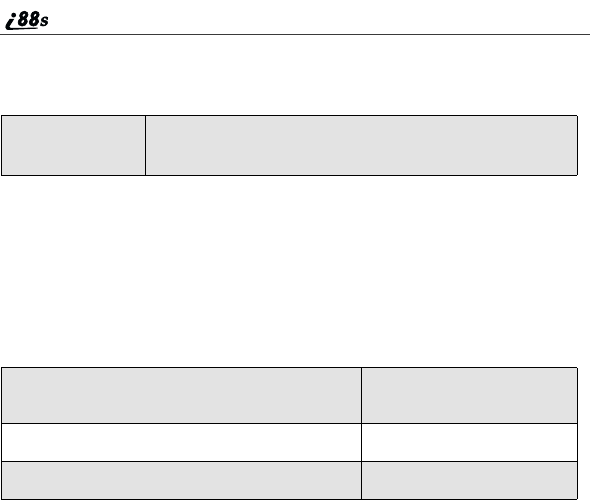
188
www.motorola.com/iden
Limited Warranty Motorola Communication
Products
I. WHAT THIS WARRANTY COVERS AND FOR
HOW LONG:
MOTOROLA, INC. (“MOTOROLA”) warrants the MOTOROLA
manufactured iDEN Communication Products listed below (“Product”)against
defects in material and workmanship under normal use and service for a period
of time from the date of purchase as scheduled below:
Rechargeable Batteries will be replaced during the applicable warranty period
if:
a. the battery capacity falls below 80% of rated capacity, or
b. the battery develops leakage.
MOTOROLA, at its option, will at no charge either repair the Product (with new
or reconditioned parts), replace it (with a new or reconditioned Product), or
refund the purchase price of the Product during the warranty period provided it
is returned in accordance with the terms of this warranty. Replaced parts or
boards are warranted for the balance of the original applicable warranty period.
All replaced parts of Product shall become the property of MOTOROLA.
This express limited warranty is extended by MOTOROLA to the original end
user purchaser only and is not assignable or transferable to any other party. This
is the complete warranty for the Product manufactured by MOTOROLA.
MOTOROLA assumes no obligations or liability for additions or modifications
NOTE: This Warranty applies within the fifty (50) United
States and the District of Columbia
iDEN Subscriber Digital Mobile and
Portable Units One (1) Year
Product Accessories One (1) Year
Batteries One (1) Year

189
Limited Warranty Motorola Communication Products
tothiswarrantyunlessmadeinwritingandsignedbyanofficerof
MOTOROLA. Unless made in a separate agreement between MOTOROLA
and the original end user purchaser, MOTOROLA does not warrant the
installation, maintenance or service of the Product.
MOTOROLA cannot be responsible in any way for any ancillary equipment not
furnished by MOTOROLA which is attached to or used in connection with the
Product, or for operation of the Product with any ancillary equipment, and all
such equipment if expressly excluded from this warranty. Because each system
which may use the Product is unique, MOTOROLA disclaims liability for
range, coverage, or operation of the system as a whole, or any portion of the
system not produced by MOTOROLA, under this warranty.
II. GENERAL PROVISIONS:
This warranty sets forth the full extent of MOTOROLA’S responsibilities
regarding the Product, Repair, replacement or refund of the purchase price, at
MOTOROLA’S options, is the exclusive remedy. THIS WARRANTY IS
GIVEN IN LIEU OF ALL OTHER EXPRESS WARRANTIES. IMPLIED
WARRANTIES, INLCUDING WITHOUT LIMITATION, IMPLIED
WARRANTIES OF MERCHANTABILITY AND FITNESS FOR A
PARTICULAR PURPOSE, ARE LIMITED TO THE DURATION OF THIS
LIMITED WARRANTY. IN NO EVENT SHALL MOTOROLA BE LIABLE
FOR DAMAGES IN EXCESS OF THE PURCHASE PRICE OF THE
PRODUCT, FOR ANY LOSS OF USE, LOSS OF TIME, INCONVENIENCE,
COMMERCIAL LOSS, LOST PROFITS OR SAVINGS OR OTHER
INCIDENTAL, SPECIAL OR CONSEQUENTIAL DAMAGES ARISING
OUT OF THE USE OR INABILITY TO USE SUCH PRODUCT, TO THE
FULL EXTENT SUCH MAY BE DISCLAIMED BY LAW.
III. STATE LAW RIGHTS:
SOME STATES DO NOT ALLOW THE EXCLUSION OR LIMITATION OF
INCIDENTAL OR CONSEQUENTIAL DAMAGES, OR LIMITATION ON
HOW LONG AN IMPLIED WARRANTY LASTS, SO THE ABOVE
LIMITATIONS OR EXCLUSIONS MAY NOT APPLY.
This warranty gives specific legal rights, and there may be other rights which
may vary from state to state.

190
www.motorola.com/iden
IV. HOW TO GET WARRANTY SERVICE:
You must provide proof of purchase (bearing the date of purchase and Product
item serial number) in order to receive warranty service and, also, deliver or
send the Product item, transportation and insurance prepaid, to an authorized
warranty service location. Warranty service will be provided by MOTOROLA
through one of its authorized warranty service locations. If you first contact the
company which sold you the Product (e.g., dealer or communication service
provider), it can facilitate your obtaining warranty service. You can also call
MOTOROLA at 1-800-453-0920 for warranty service location information.
V. WHAT THIS WARRANTY DOES NOT COVER:
a. Defects or damage resulting from use of the Product in other than its
normal and customary manner.
b. Defects or damage from misuse, accident, water, or neglect.
c. Defects or damage from improper testing, operation, maintenance,
installation, alteration, modification, or adjustment.
d. Breakage or damage to antennas unless caused directly by defects in
material workmanship.
e. A Product subjected to unauthorized Product modifications,
disassemblies or repairs (including, without limitation, the audition to
the Product of non-MOTOROLA supplied equipment) which
adversely affect performance of the Product or interfere with
MOTOROLA’S normal warranty inspection and testing of the
Product to verify any warranty claim.
f. Product which has had the serial number removed or made illegible.
g. Rechargeable batteries if:
1. Any of the seals on the battery enclosure of cells are broken or show
evidence of tampering.
2. The damage or defect is caused by charging or using the battery in
equipment or service other than the Product for which it is specified.
h. Freight costs to the repair depot.
i. A Product which, due to illegal or unauthorized alteration of the
software/firmware in the Product, does not function in accordance
with MOTOROLA’S published specifications or the FCC type
acceptance labeling in effect for the Product at the time the Product
was initially distributed from MOTOROLA.
j. Scratches or other cosmetic damage to Product surfaces that does not
effect the operation of the Product.
k. Normal and customary wear and tear.

191
Limited Warranty Motorola Communication Products
VI. PATENT AND SOFTWARE PROVISIONS:
MOTOROLA will defend, at its own expense, any suit brought against the end
user purchaser to the extent that it is based on a claim that the Product or parts
infringe a United States patent, and Motorola will pay those costs and damages
finally awarded against the end user purchaser in any such suit which are
attributable to any such claim, but such defense and payments are conditioned
on the following:
a. That MOTOROLA will be notified promptly in writing by such
purchaser of any notice of such claim;
b. That MOTOROLA will have sole control of the defense of such suit
and all negotiations for its settlement or compromise; and
c. Should the Product or parts become, or in MOTOROLA’S opinion be
likely to become, the subject of a claim of infringement of a patent,
that such purchaser will permit MOTOROLA, at its option and
expense, either to procure for such purchaser the right to continue
using the Product or parts or to replace or modify the same so that it
becomes non-infringing or to grant such purchaser a credit for the
Product or parts as depreciated and accept its return. The
depreciation will be an equal amount per year over the lifetime of the
Product or parts as established by MOTOROLA.
MOTOROLA will have no liability with respect to any claim of patent
infringement which is based upon the combination of the Product or parts
furnished hereunder with software, apparatus or devices not furnished by
MOTOROLA, nor will MOTOROLA have any liability for the use of ancillary
equipment or software not furnished by MOTOROLA which is attached to or
used in connection with the Product or any parts thereof.
Laws in the United States and other countries preserve for MOTOROLA certain
exclusive rights for copyrighted MOTOROLA software, such as the exclusive
rights to reproduce in copies and distribute copies of such MOTOROLA
software. MOTOROLA software may be used in only the Product in which the
software was originally embodied and such software in such Product may not be
replaced, copied, distributed, modified in any way, or used to produce any
derivative thereof. No other use including, without limitation, alteration,
modification, reproduction, distribution, or reverse engineering of such
MOTOROLA software or exercise or rights in such MOTOROLA software is
permitted. No license is granted by implication, estoppel or otherwise under
MOTOROLA patent rights or copyrights.
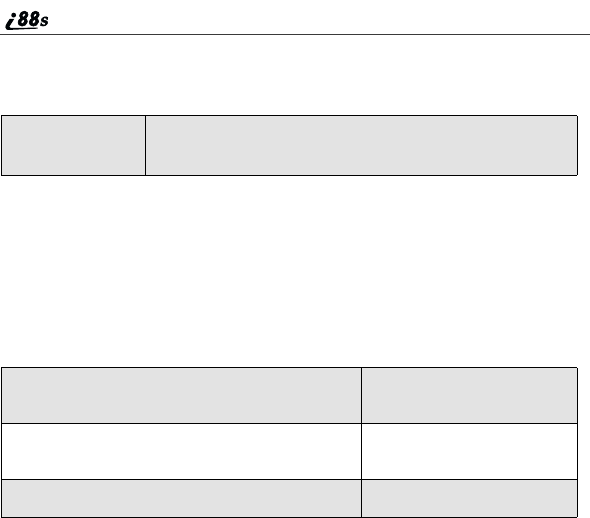
192
www.motorola.com/iden
Limited Warranty Motorola Communication
Products (International)
I. WHAT THIS WARRANTY COVERS AND FOR
HOW LONG:
MOTOROLA warrants the MOTOROLA manufactured iDEN Communication
Products listed below (“Product”) against defects in material and workmanship
under normal use and service for a period of time from the date of purchase as
scheduled below:
Rechargeable Batteries will be replaced during the applicable warranty period
if:
a. the battery capacity falls below 80% of rated capacity, or
b. the battery develops leakage.
MOTOROLA, at its option, will at no charge either repair the Product (with new
or reconditioned parts), replace it (with a new or reconditioned Product), or
refund the purchase price of the Product during the warranty period provided it
is returned in accordance with the terms of this warranty. Replaced parts or
boards are warranted for the balance of the original applicable warranty period.
All replaced parts of Product shall become the property of MOTOROLA.
This express limited warranty is extended by MOTOROLA to the original end
user purchaser only and is not assignable or transferable to any other party. This
is the complete warranty for the Product manufactured by MOTOROLA.
MOTOROLA assumes no obligations or liability for additions or modifications
NOTE: This Warranty applies in Singapore and the
Philippines.
iDEN Subscriber Digital Mobile and
Portable Units One (1) Year
Product Accessories (manufactured by
or under license from MOTOROLA) One (1) Year
Batteries One (1) Year

193
Limited Warranty Motorola Communication Products (International)
tothiswarrantyunlessmadeinwritingandsignedbyanofficerof
MOTOROLA. Unless made in a separate agreement between MOTOROLA
and the original end user purchaser, MOTOROLA does not warrant the
installation, maintenance or service of the Product.
MOTOROLA cannot be responsible in any way for any ancillary equipment not
furnished by MOTOROLA which is attached to or used in connection with the
Product, or for operation of the Product with any ancillary equipment, and all
such equipment if expressly excluded from this warranty. Because each system
which may use the Product is unique, MOTOROLA disclaims liability for
range, coverage, or operation of the system as a whole, or any portion of the
system not produced by MOTOROLA, under this warranty.
II. GENERAL PROVISIONS:
This warranty sets forth the full extent of MOTOROLA’S responsibilities
regarding the Product, Repair, replacement or refund of the purchase price, at
MOTOROLA’S options, is the exclusive remedy. THIS WARRANTY IS
GIVEN IN LIEU OF ALL OTHER EXPRESS WARRANTIES. IMPLIED
WARRANTIES, INLCUDING WITHOUT LIMITATION, IMPLIED
WARRANTIES OF MERCHANTABILITY AND FITNESS FOR A
PARTICULAR PURPOSE, ARE LIMITED TO THE DURATION OF THIS
LIMITED WARRANTY TO THE FULL EXTENT SUCH MAY BE
DISCLAIMED BY LAW. IN NO EVENT SHALL MOTOROLA BE LIABLE
FOR DAMAGES IN EXCESS OF THE PURCHASE PRICE OF THE
PRODUCT, FOR ANY LOSS OF USE, LOSS OF TIME, INCONVENIENCE,
COMMERCIAL LOSS, LOST PROFITS OR SAVINGS OR OTHER
INCIDENTAL, SPECIAL OR CONSEQUENTIAL DAMAGES ARISING
OUT OF THE USE OR INABILITY TO USE SUCH PRODUCT, TO THE
FULL EXTENT SUCH MAY BE DISCLAIMED BY LAW.
III. HOW TO GET WARRANTY SERVICE:
You must provide proof of purchase (bearing the date of purchase and Product
item serial number) in order to receive warranty service and, also, deliver or
send the Product item, transportation and insurance prepaid, to an authorized
warranty service location. Warranty service will be provided by MOTOROLA
through one of its authorized warranty service locations. If you first contact the
company which sold you the Product (e.g., dealer or communication service
provider), it can facilitate your obtaining warranty service.
IV. WHAT THIS WARRANTY DOES NOT COVER:
a. Defects or damage resulting from use of the Product in other than its

194
www.motorola.com/iden
normal and customary manner.
b. Defects or damage from misuse, accident, water, or neglect.
c. Defects or damage from improper testing, operation, maintenance,
installation, alteration, modification, or adjustment.
d. Breakage or damage to antennas unless caused directly by defects in
material workmanship.
e. A Product subjected to unauthorized Product modifications,
disassemblies or repairs (including, without limitation, the audition to
the Product of non-MOTOROLA supplied equipment).
f. Product which has had the serial number removed or made illegible.
g. Rechargeable batteries if:
1. Any of the seals on the battery enclosure of cells are broken or
show evidence of tampering.
2. The damage or defect is caused by charging or using the battery in
equipment or service other than the Product for which it is
specified.
h. Freight costs to the repair depot.
i. A Product which, due to illegal or unauthorized alteration of the
software/firmware in the Product, does not function in accordance
with MOTOROLA’S published specifications or the local type
acceptance labeling in effect for the Product at the time the Product
was initially distributed from MOTOROLA.
j. Scratches or other cosmetic damage to Product surfaces that does not
effect the operation of the Product.
k. Normal and customary wear and tear.
l. Exclusion for defects or damage arising from use of the products in
connection with non-MOTOROLA equipment.
V. PATENT AND SOFTWARE PROVISIONS:
MOTOROLA will defend, at its own expense, any suit brought against the end
user purchaser to the extent that it is based on a claim that the Product or parts
infringe a patent, and Motorola will pay those costs and damages finally
awarded against the end user purchaser in any such suit which are attributable to
any such claim, but such defense and payments are conditioned on the
following:
a. That MOTOROLA will be notified promptly in writing by such
purchaser of any notice of such claim;
b. That MOTOROLA will have sole control of the defense of such suit
and all negotiations for its settlement or compromise; and
c. Should the Product or parts become, or in MOTOROLA’S opinion be

195
Limited Warranty Motorola Communication Products (International)
likely to become, the subject of a claim of infringement of a patent,
that such purchaser will permit MOTOROLA, at its option and
expense, either to procure for such purchaser the right to continue
using the Product or parts or to replace or modify the same so that it
becomes non-infringing or to grant such purchaser a credit for the
Product or parts as depreciated and accept its return. The
depreciation will be an equal amount per year over the lifetime of the
Product or parts as established by MOTOROLA.
MOTOROLA will have no liability with respect to any claim of patent
infringement which is based upon the combination of the Product or parts
furnished hereunder with software, apparatus or devices not furnished by
MOTOROLA, nor will MOTOROLA have any liability for the use of ancillary
equipment or software not furnished by MOTOROLA which is attached to or
sued in connection with the Product or any parts thereof. In no event shall
MOTOROLA be liable for any incidental, special or consequential damages
arising from any claim of patent infringement or alleged infringement.
Laws in the United States and other countries preserve for MOTOROLA certain
exclusive rights for copyrighted MOTOROLA software, such as the exclusive
rights to reproduce in copies and distribute copies of such MOTOROLA
software. MOTOROLA software may be used in only the Product in which the
software was originally embodied and such software in such Product may not be
replaced, copied, distributed, modified in any way, or used to produce any
derivative thereof. No other use including, without limitation, alteration,
modification, reproduction, distribution, or reverse engineering of such
MOTOROLA software or exercise or rights in such MOTOROLA software is
permitted. No license is granted by implication, estoppel or otherwise under
MOTOROLA patent rights or copyrights.

196
www.motorola.com/iden
Patent and Trademark Information
MOTOROLA, the Stylized M Logo and all other trademarks indicated as such herein are
trademarks of Motorola, Inc. ®Reg. U.S. Pat. & Tm. Off. © 2002 Motorola, Inc. All
rights reserved.
Microsoft and Microsoft Internet Explorer are registered trademarks of Microsoft
Corporation.
Netscape Navigator is a registered trademark of Netscape Communications Corporation.
T9 is a trademark owned by Tegic Communications.
T9®Text Input Patent and Trademark Information
This product is covered by U.S. Pat. 5,818,437, U.S. Pat. 5,953,541, U.S. Pat. 6,011,554
and other patents pending.
Java and all other Java-based marks are trademarks or registered trademarks of Sun
Microsystems, Inc. in the U.S. and other countries.
Direct Protect is a trademark of Signal Insurance Company.
All other product names or services mentioned in this manual are the property of their
respective trademark owners.

197
Index
A
Accessories 159
batteries 161
Data cable 79,165,166
Dual Port Adapter Cable 166
Swivel Carry Clip 159
Travel Charger 162
Accessory safety information 180
Adapter cable 166
Additional Health and Safety 182
Alpha mode, text entry 26
Auto Redial 144
B
Backlight timer 144
Battery 7,161
attaching 7
changing 8
charge strength 9
detaching 8
operating 162
Baud rate 147
C
Call Alert Queue 86
Call alerts 84
from Phonebook 84
receiving 85
Call Filtering 153
Call Forwarding 68
turning off 70
turning on 69
Call Hold 66
call information icons 34
Call Timers 63
Call Waiting 65,138
accepting calls 65
declining calls 66
ending active calls 66
switching between calls 65
turning off 66
Charge strength 9
Circuit data 79
Circuit data number 24
CompanionPro 40
Connection status 24
Customizing Java applications 129
Customizing phone 133
D
Data cable 79,165,166
Datebook 105
set up 114
viewing 106
viewing a day 107
viewing a week 107
viewing event details 108
viewing today 108
Datebook events 108
adding 109
deleting 113
editing 113
Datebook icons 106
Dialing menu 48
Digital cellular 53
Direct dial 54
Display options 35
changing 141
Driving safety 3

198
www.motorola.com/iden
E
email 79
sending and receiving 78
Entering text, see Text entry
F
Faxes
sending and receiving 79
G
Getting started 5
GPS Enabled 93
almanac data 99
best results 98
making emergency calls 95
map software 101
privacy options 99,129
security 100
viewing location 96
GPS, see GPS Enabled
Group calls 88
I
Icons
context sensitive 32
Datebook 106
main menu 36
Phonebook 40
status 32
icons
call information 34
In Call Setup 138
Initial Setup 142
Initial SIM PIN number 13
International calls 52,58
IP Address 24
J
Java applications 127
deinstalling 132
downloading 129
installing 128
memory 131
K
Keypad Lock 139
L
Language 146
M
Main menu 38
icons 36
options 36
reordering 140
Making call alerts 84
Making phone calls 53
Making Private calls 81
Master Reset 140
Memo 117
adding 117
calling number 118
deleting 118
editing 118
storing number to Phonebook
50,119
viewing 117
Memory
Java 131
Voice Notes 125
Menu icon 34
Menus 34,35,48
main menu 38
Shortcut 157
Styles Actions menu 153

199
Styles menu 151
Message Center 73
Messages 73
Net Mail 78
text and numeric 76
voice mail 74
Messages, Net Mail
receiving 78
Messages, text and numeric
viewing 77
Modem, phone as 79
Motorola 2
Mute 64
My Information 24
N
Net Mail 78
Notifications 138
setting 136
Numeric mode, text entry 29
P
Packet data 79
Password
security code 139
SIM PIN 139
unlock code 139
Patent information 196
Pause digit entry 51
Personalize 140
Phone
modem 79
off 10
on 9
status 24
Phone calls 53
ending 59
from Phonebook 54
from Recent Calls list 56
international calls 58
receiving 59
speed dial 56
Turbo Dial 57
voice names 57
Phone Lock 138
Phone Setup 137
Phonebook 39
capacity 44
CompanionPro 40
making call alerts 84
making calls 54
Private calls 82
storing Recent Calls 61
with non-i88s phones 40
with other i88s phones 39
Phonebook entries 42
adding 44
deleting 51
editing 50
sorting 43
viewing 42
Plus dialing 52
Power button 9
Powering phone on or off 9
Private calls 81
from Phonebook 82
from Recent Calls list 82
making 81
receiving 83
voice names 83
Private ID 81
R
Radio frequency 172
Ready screen 31
Recent Calls 56,59

200
www.motorola.com/iden
deleting 62
details 61
Private calls 82
storing to Phonebook 61
viewing 60
Recent Calls list
storing numbers from 49
Ring styles 137
Ring/Vibe 134
S
Safety 172
accessory 180
electromagnetic interference
175
medical devices 175
radio frequency 172
Scrolling 146
Security 11,138
Settings
In Call Setup 138
Initial Setup 142
Personalize 140
Phone Setup 137
Ring/Vibe 134
Security 138
VoiceVolume 148
Shortcuts 155
creating 155
using 156
SIM card 12,39
inserting and removing 18
unblocking 15
with non-i88s phones 40
with other i88s phones 39
SIM PIN 12,139
changing 14
default 13
disabling 16
enabling 16
entering 13
Speakerphone 64
Speed Dial numbers 40,46,56
Status light 24,145
Status messages 169
Status of connection 24
storing numbers
Memo 50
Recent Calls list 49
Styles 150
activating 152
creating 151
turning off 153
Swivel Carry Clip 159
Symbols mode, text entry 29
T
T9 Text Input 25
also see Text entry
Talkgroups 88
joining 90
naming 88
Text and numeric messages 76
Text display
area 34
size 145
Text entry
Alpha mode 26
Numeric mode 29
Symbols mode 29
Word mode 26
Three-Way Calling 67
Time and date format 143
Trademark information 196
Travel Charger 162
TTY devices 79

201
making calls 58
setting baud rate 148
setting mode 147
Turbo Dial 57
Turning phone on or off 9
Two-way radio, see Private calls
Typing text, see Text entry
U
Unblocking SIM PIN 15
V
Viewing Datebook 106
Voice Activated dialing 57,83
also see Voice names
Voice Mail 74
logging in 75
receiving messages 74
transferring calls to 74
Voice names 41
creating 47,156
making calls 57,83
Phonebook 47
shortcuts 156,157
Voice Notes 62,121
adding 123
deleting 124
labeling 123
locking 124
memory 125
playing 122
recording 122
W
Warranty 192
Word mode, text entry 26

202
www.motorola.com/iden
